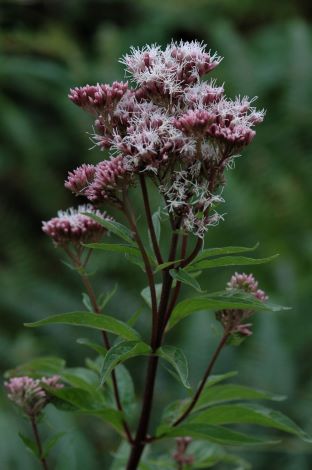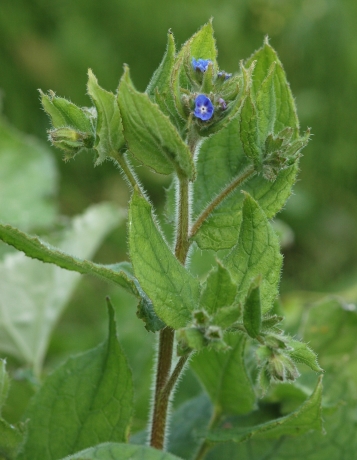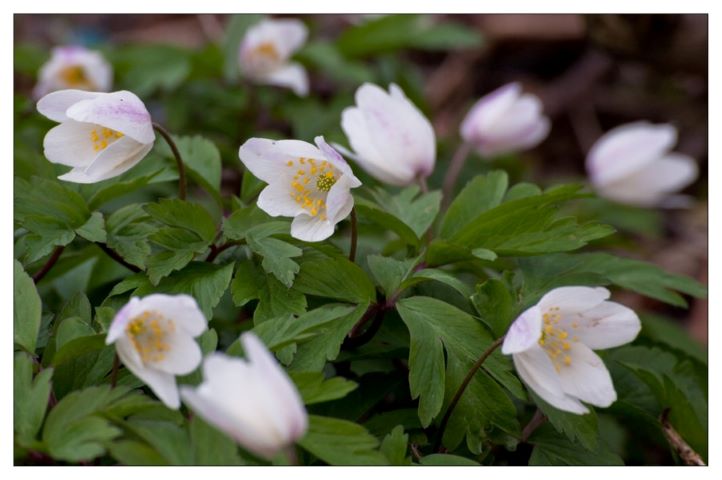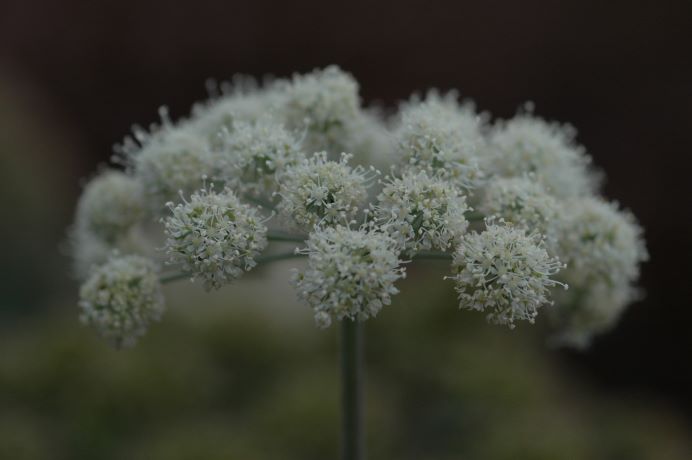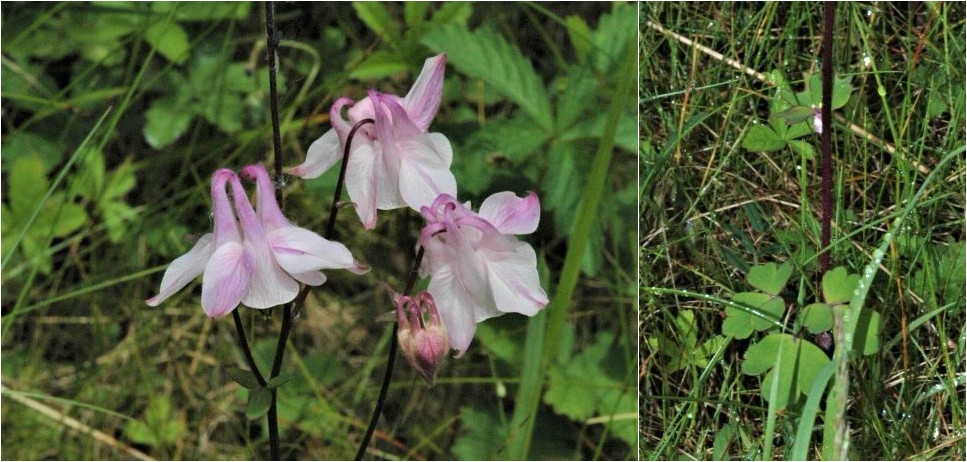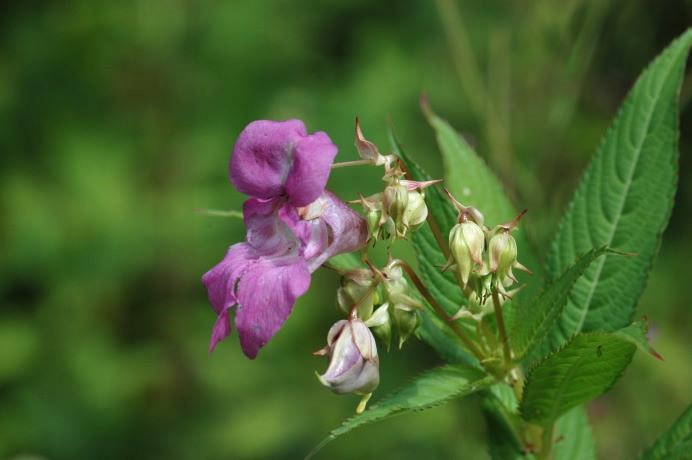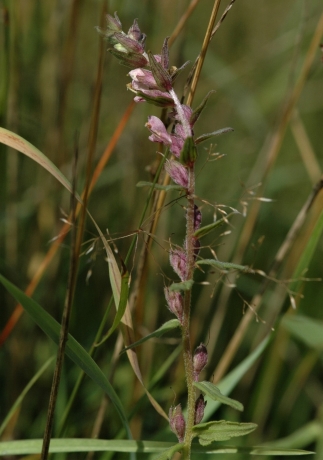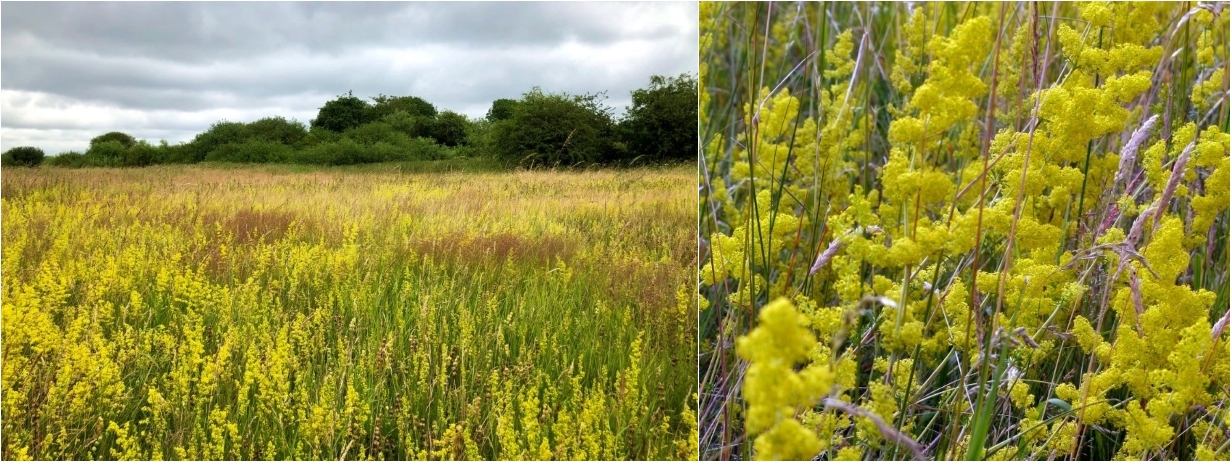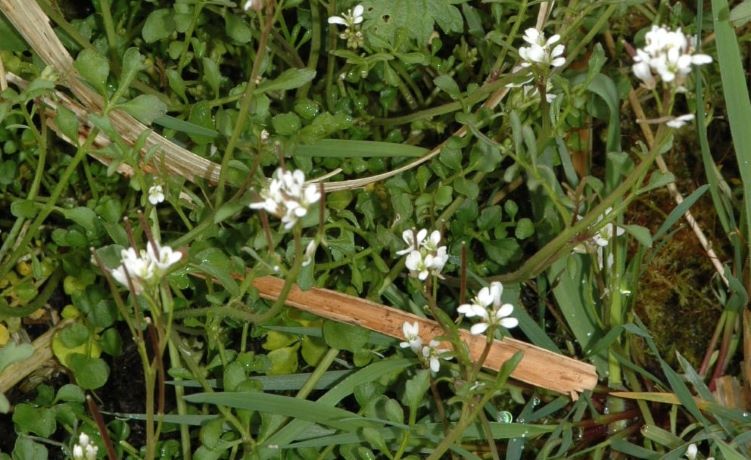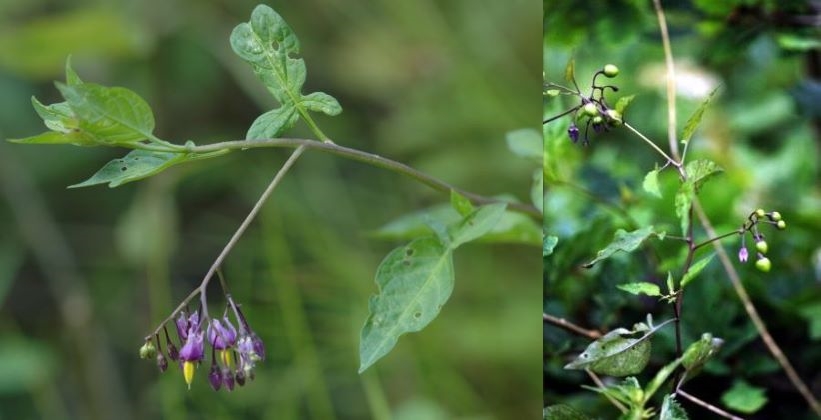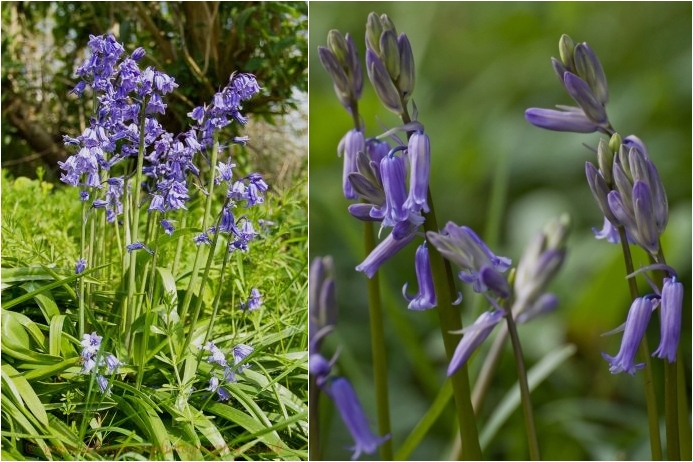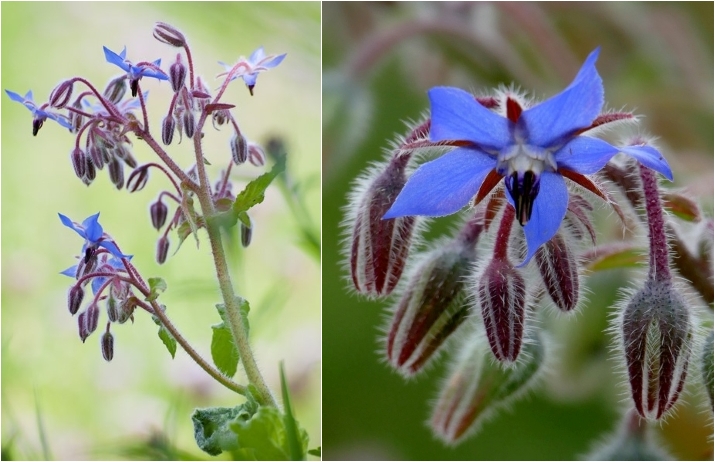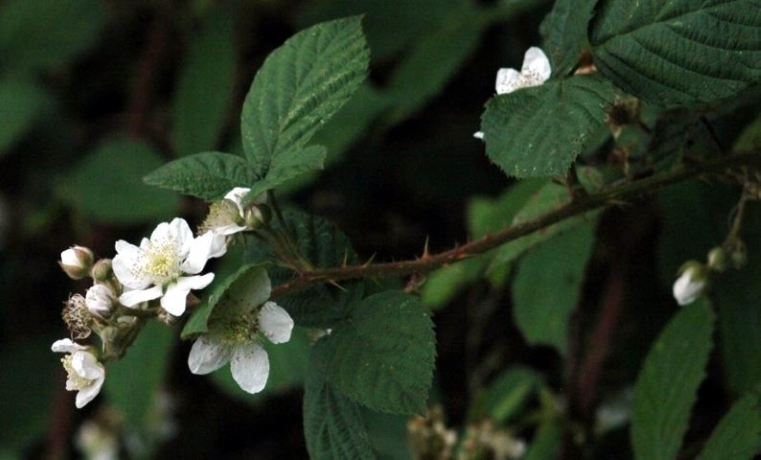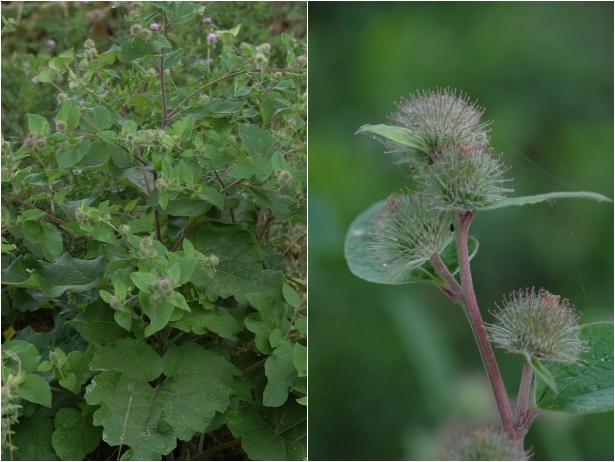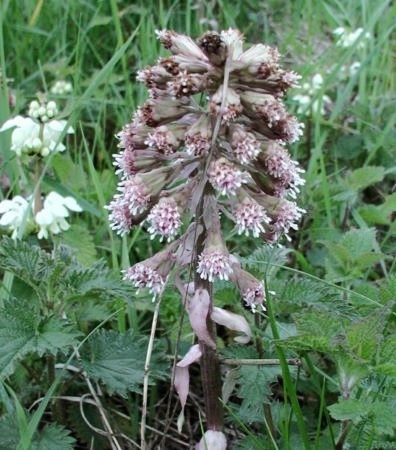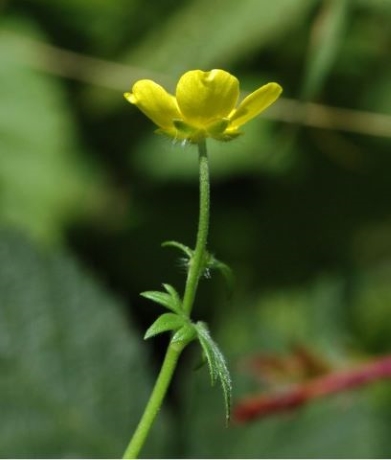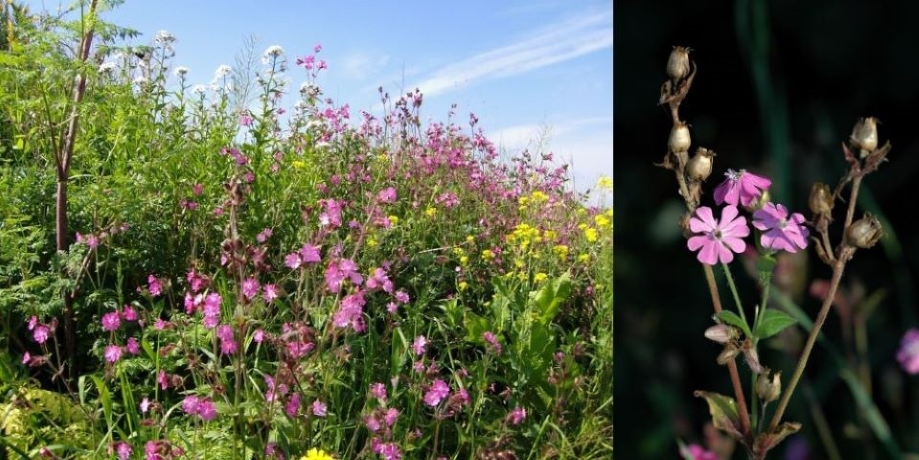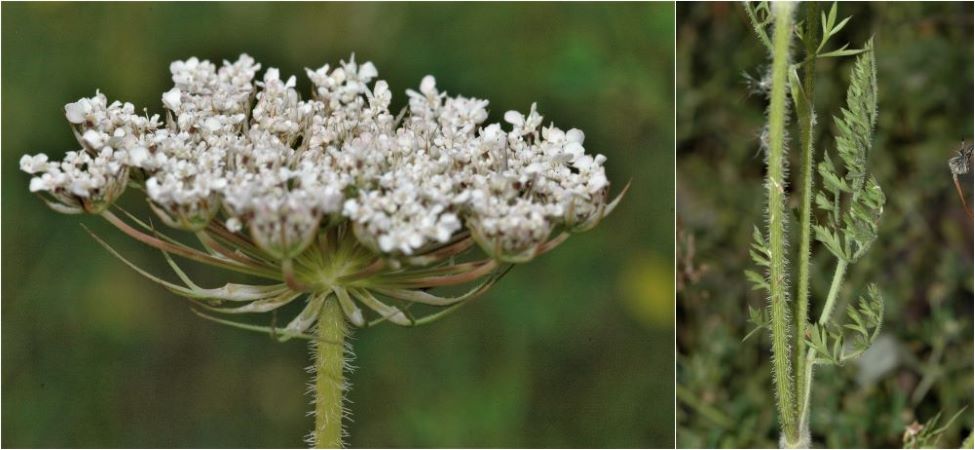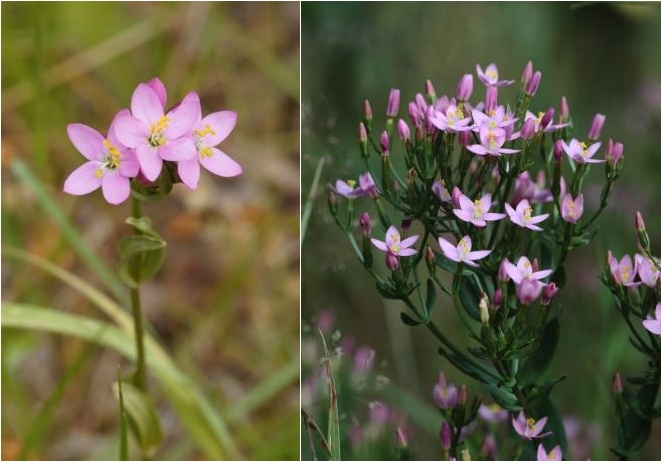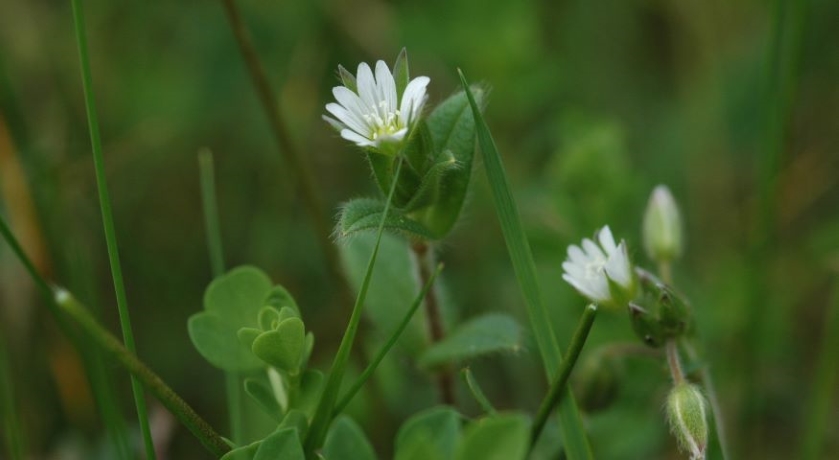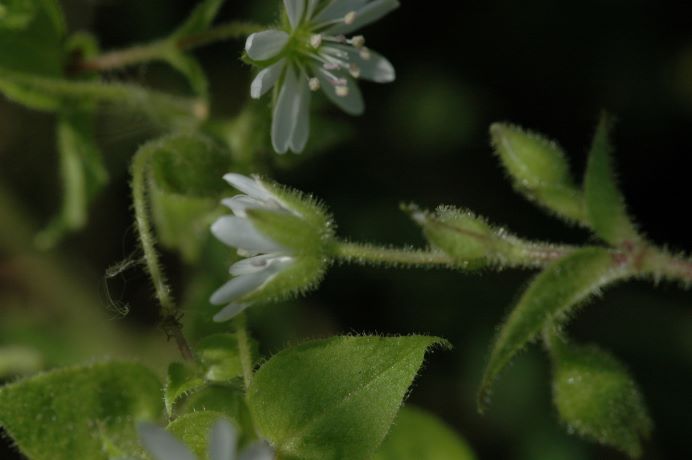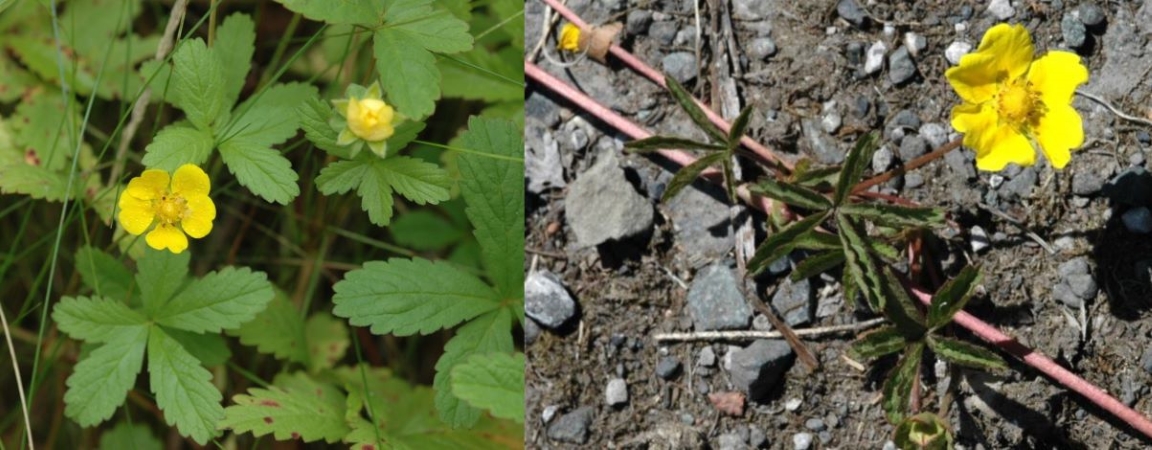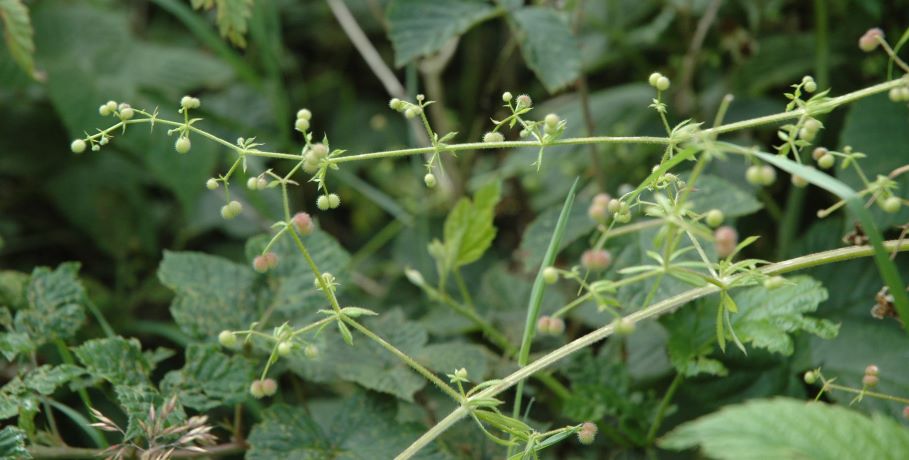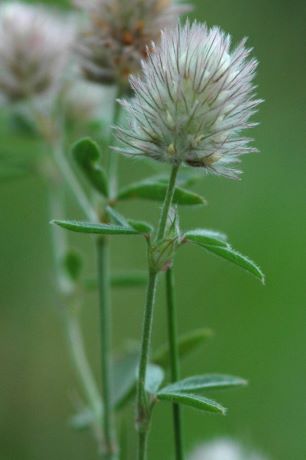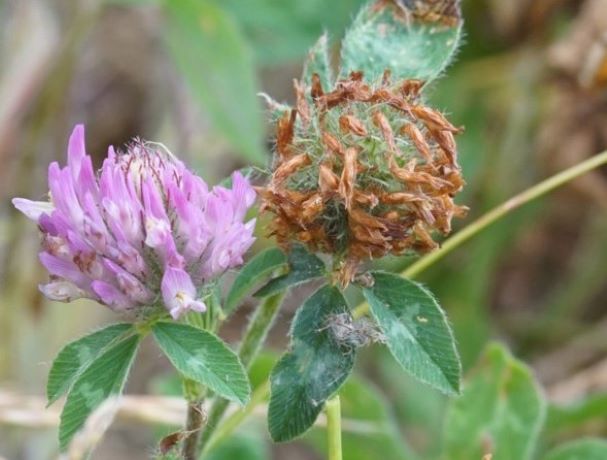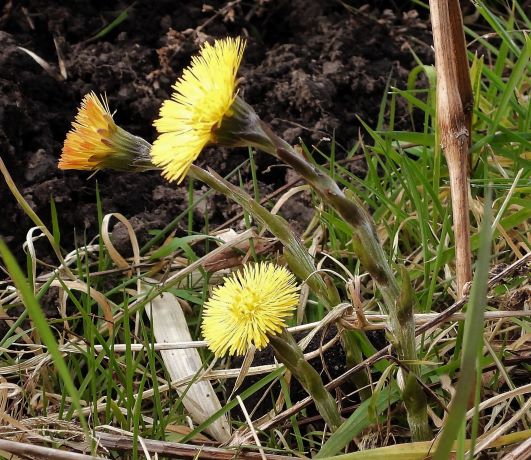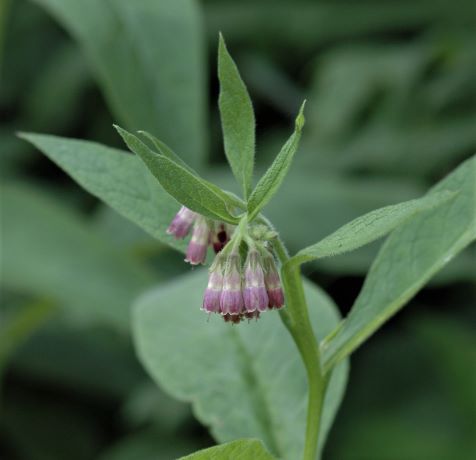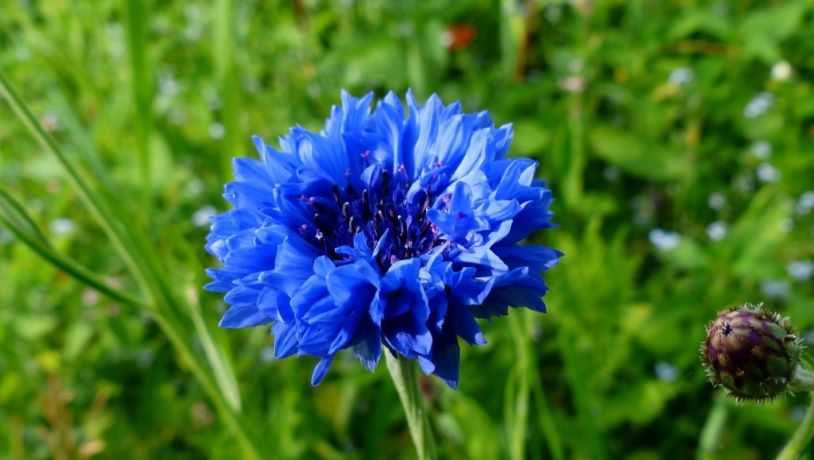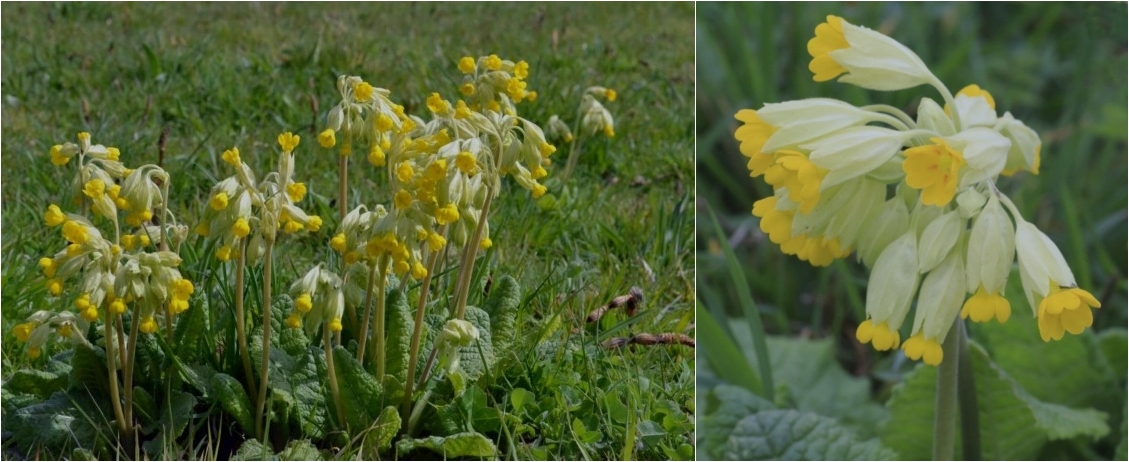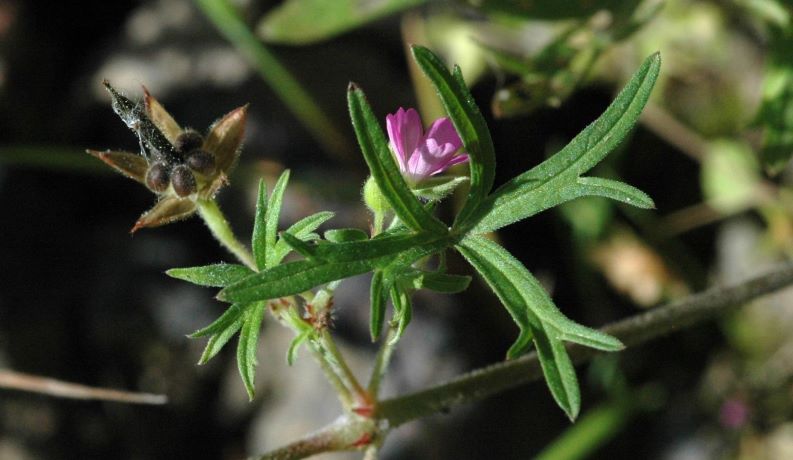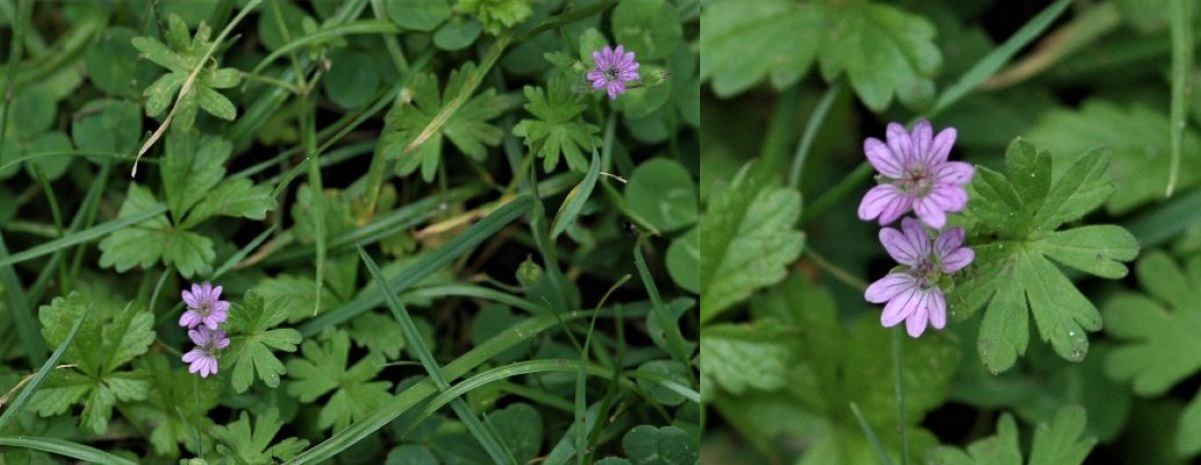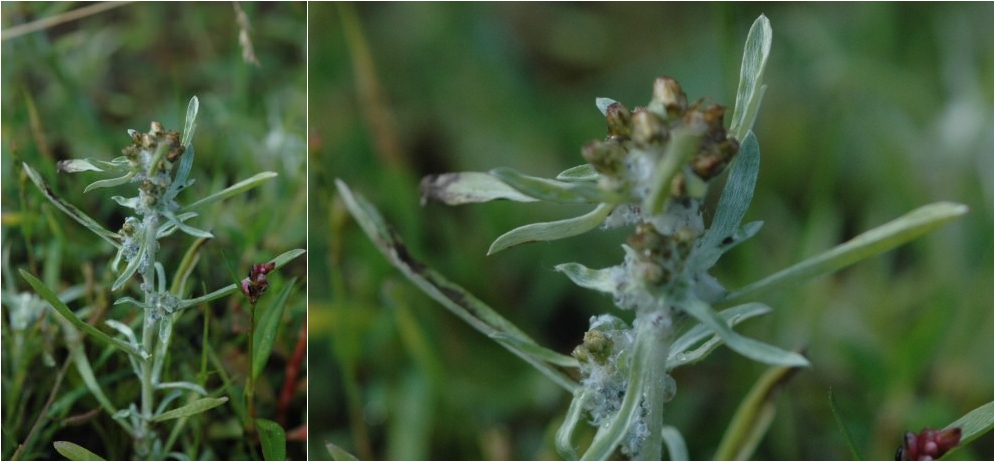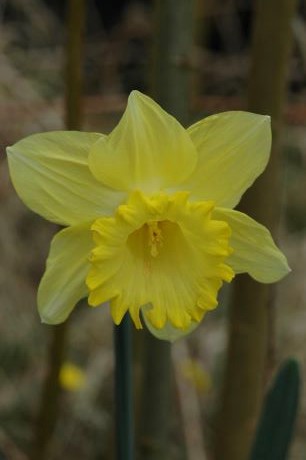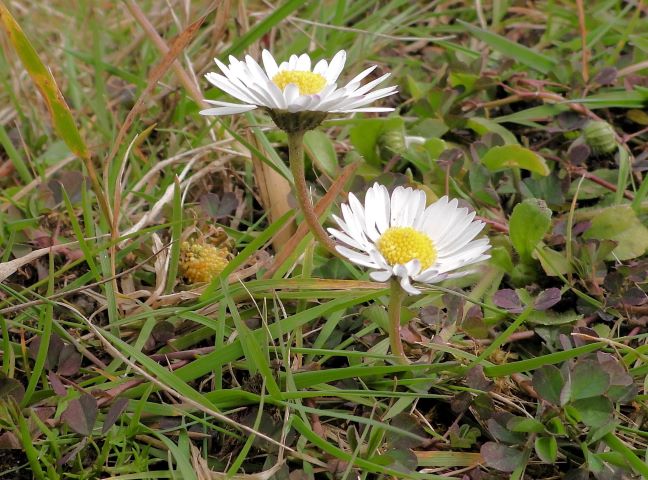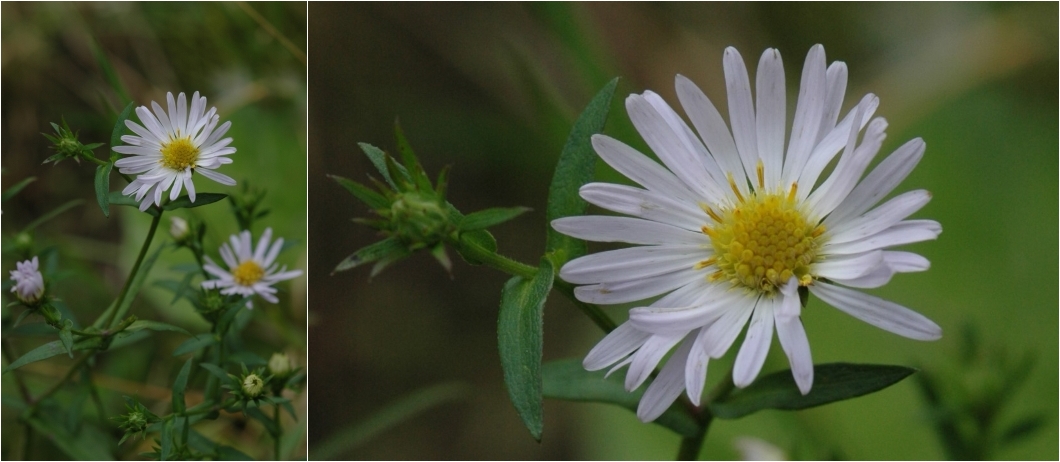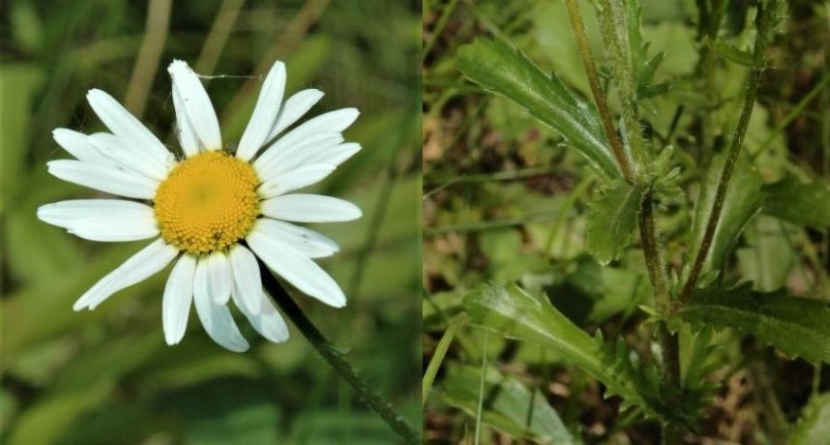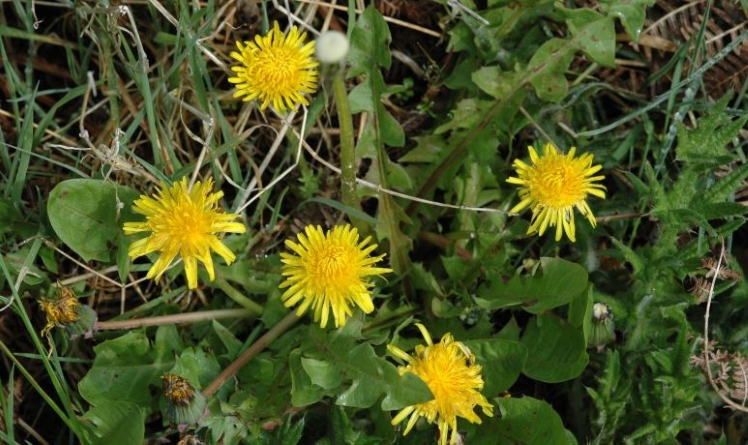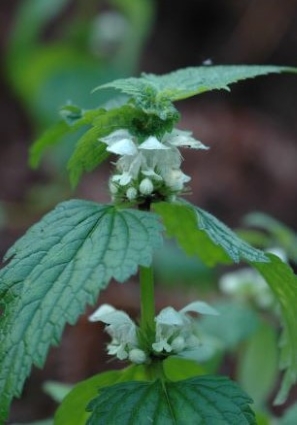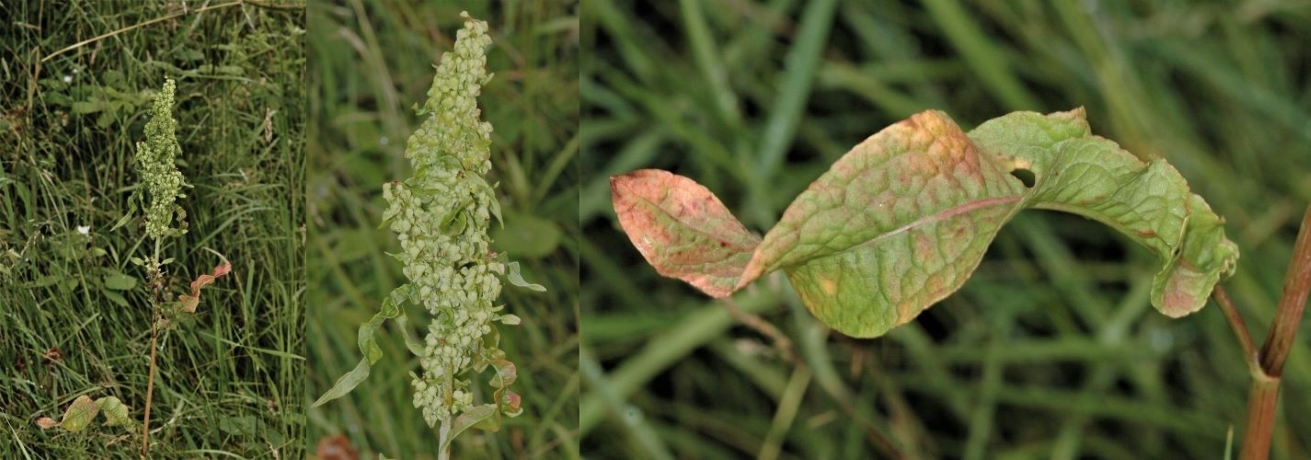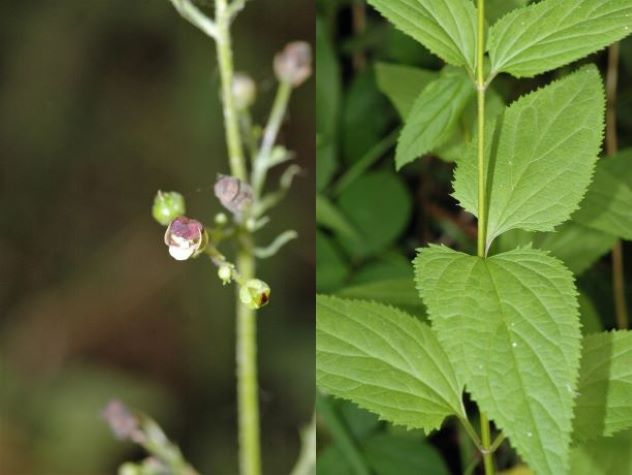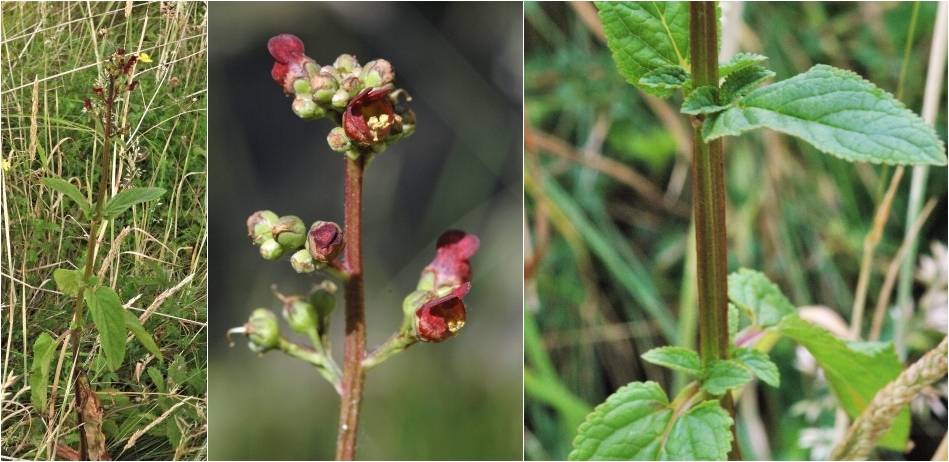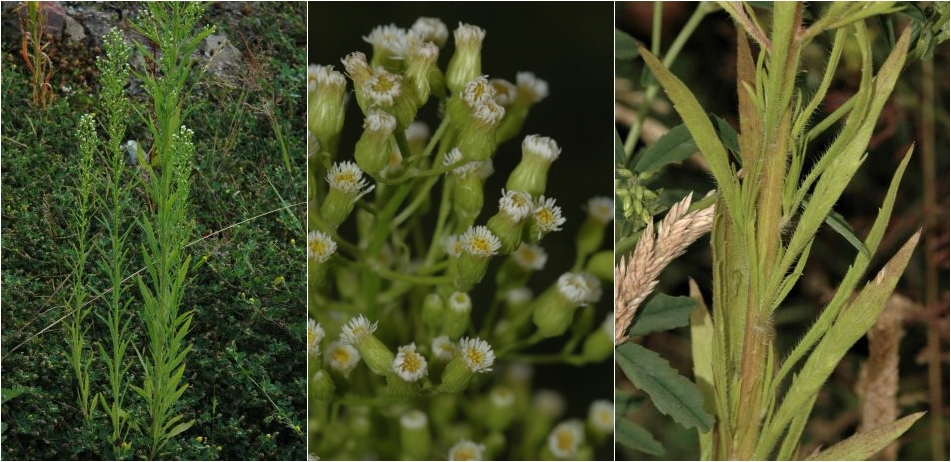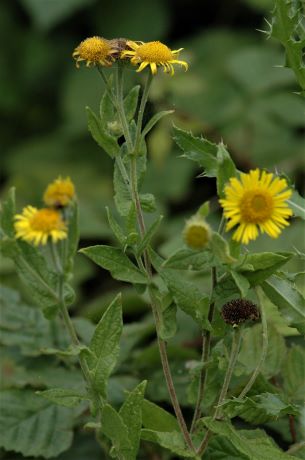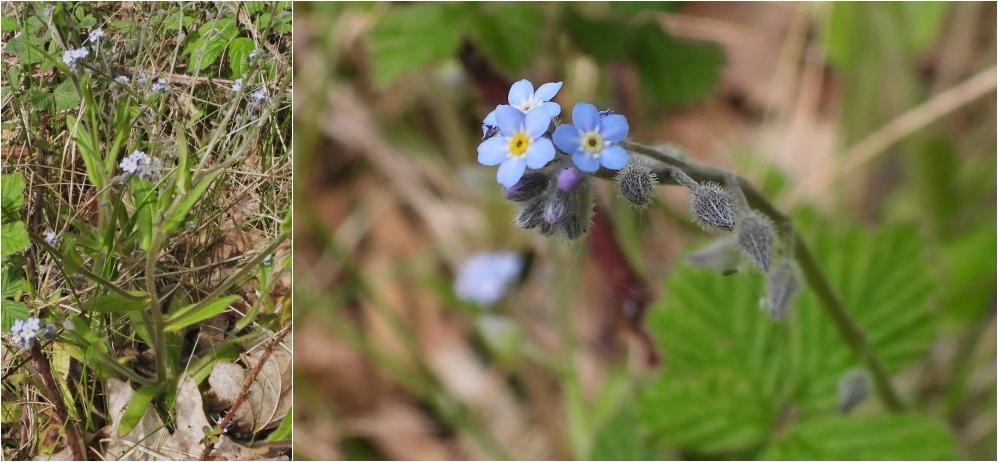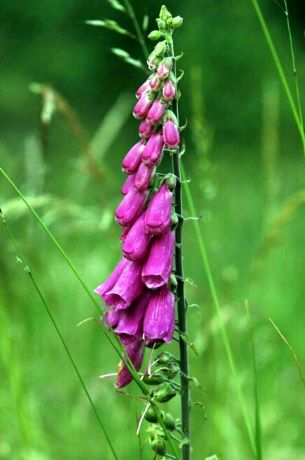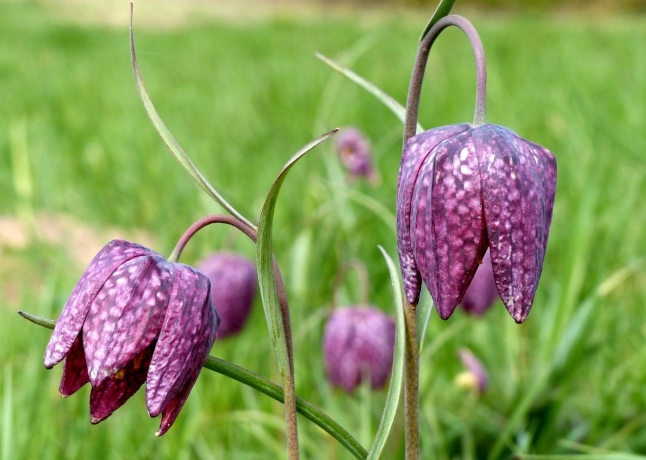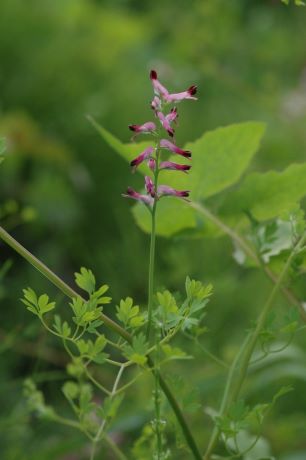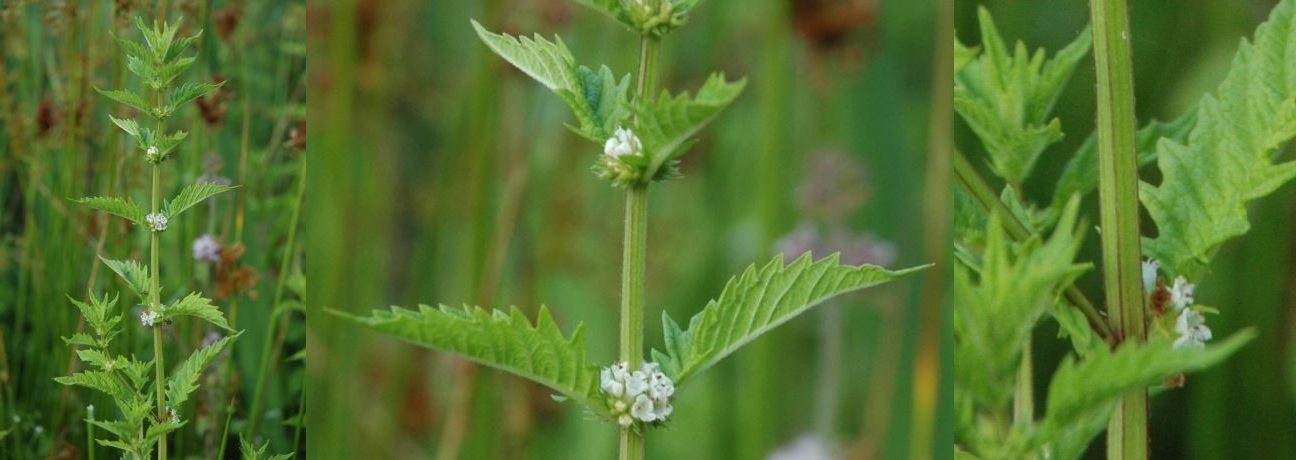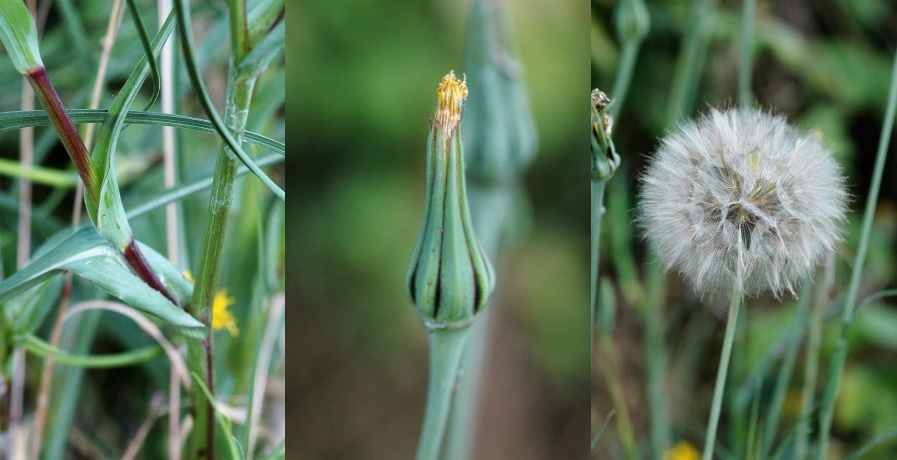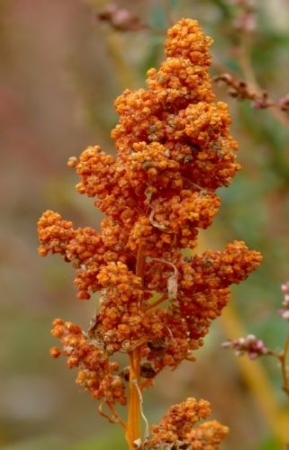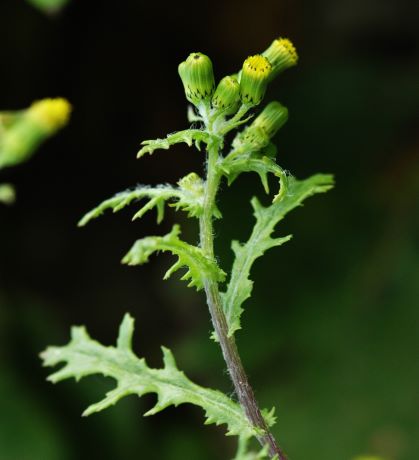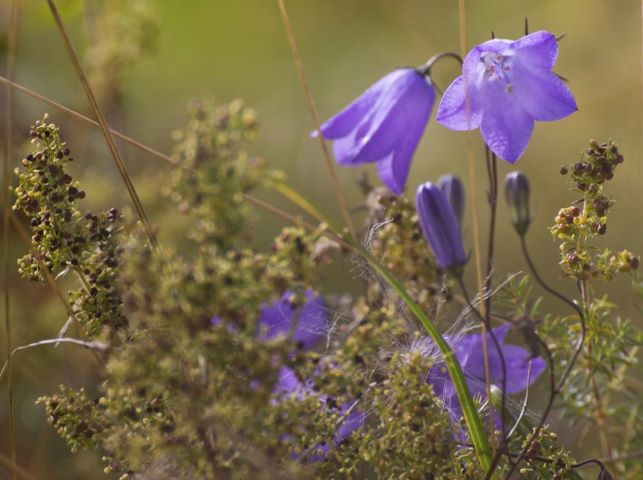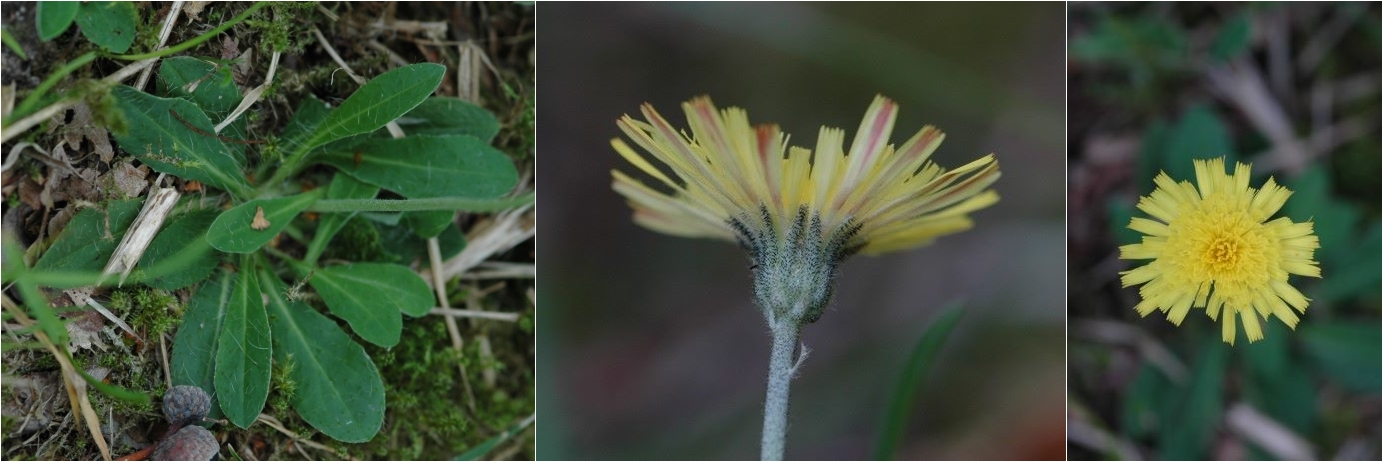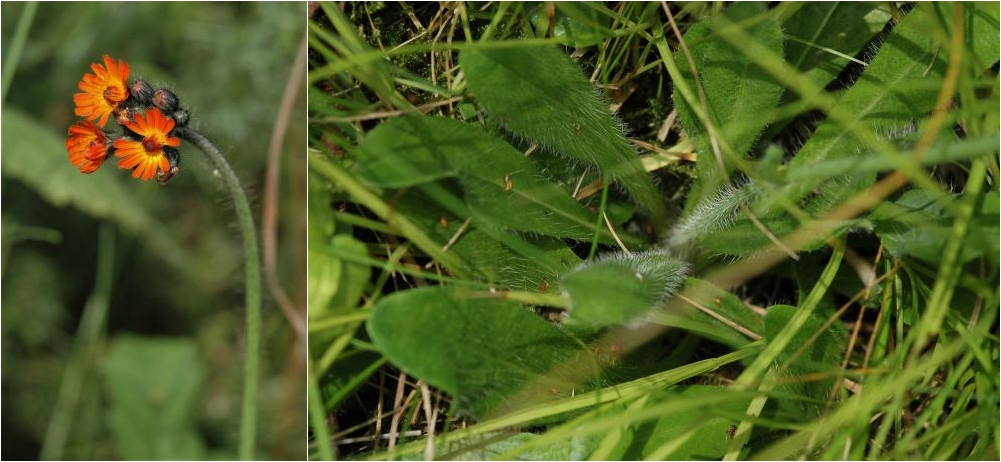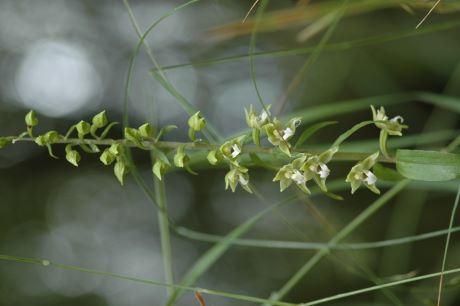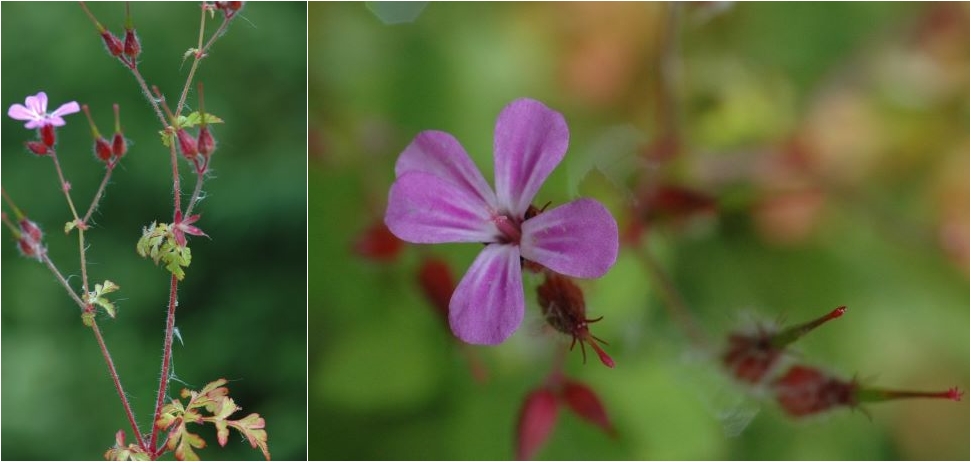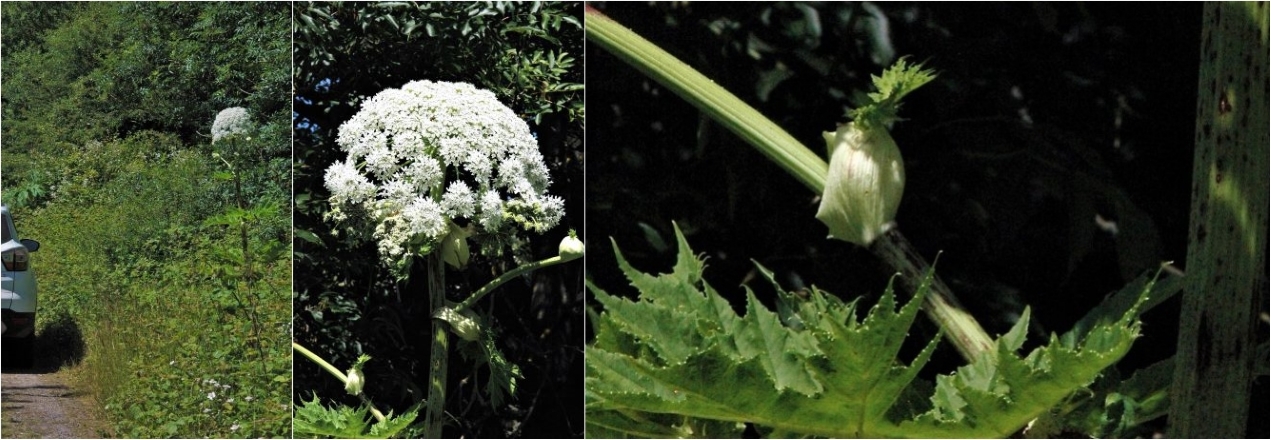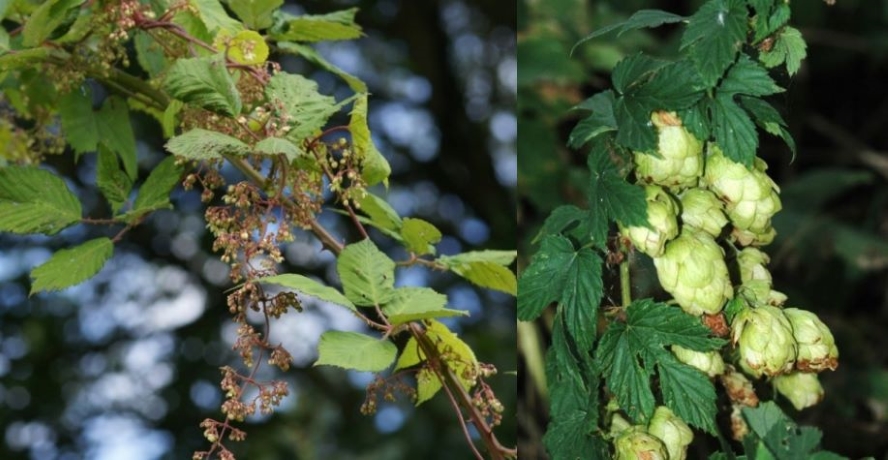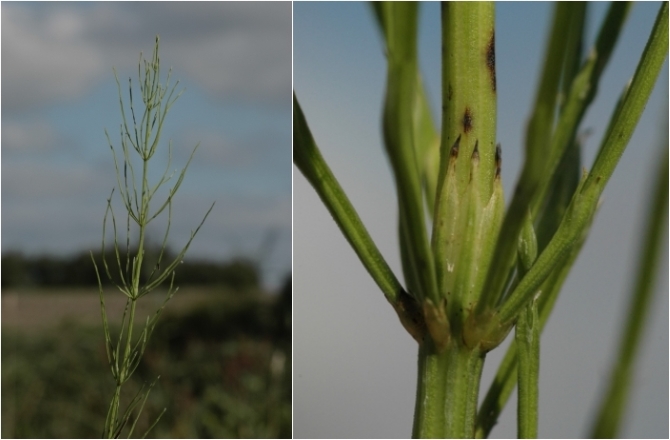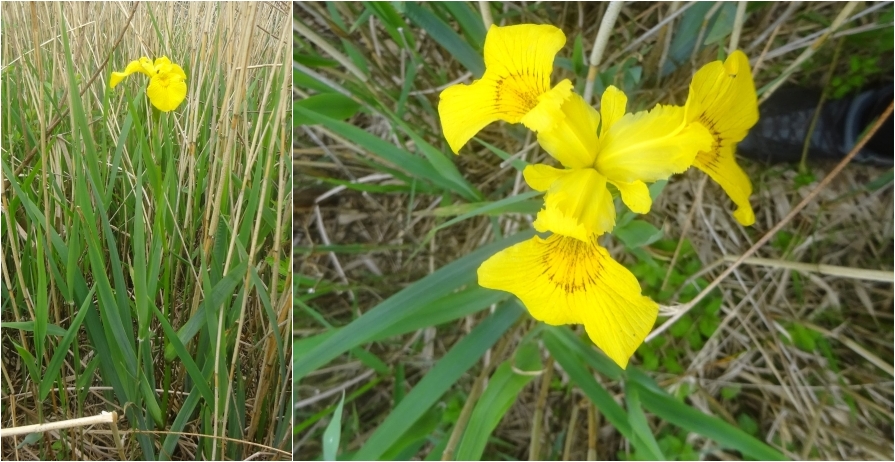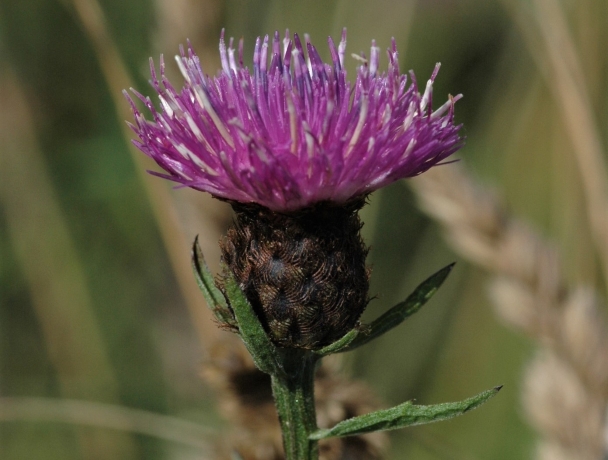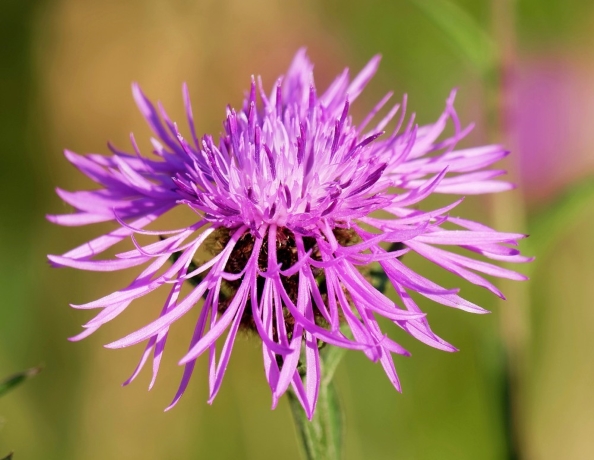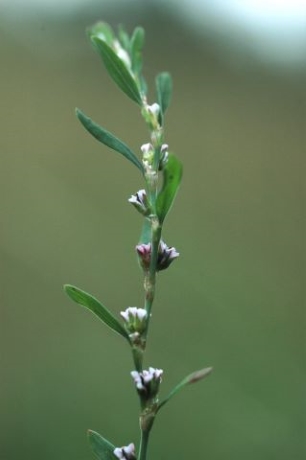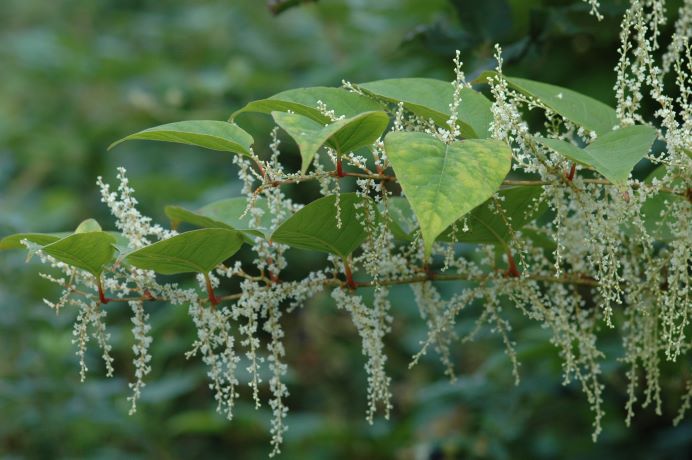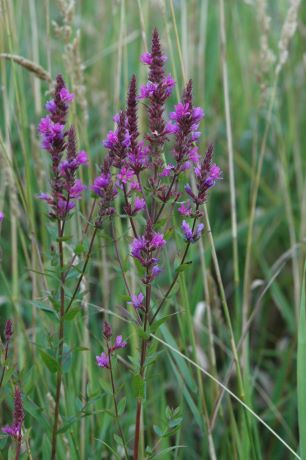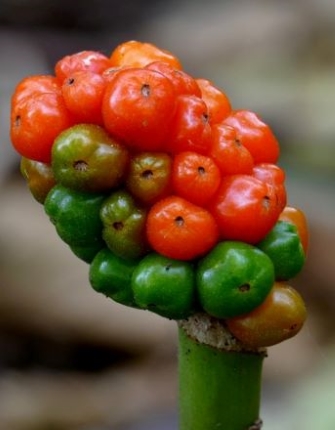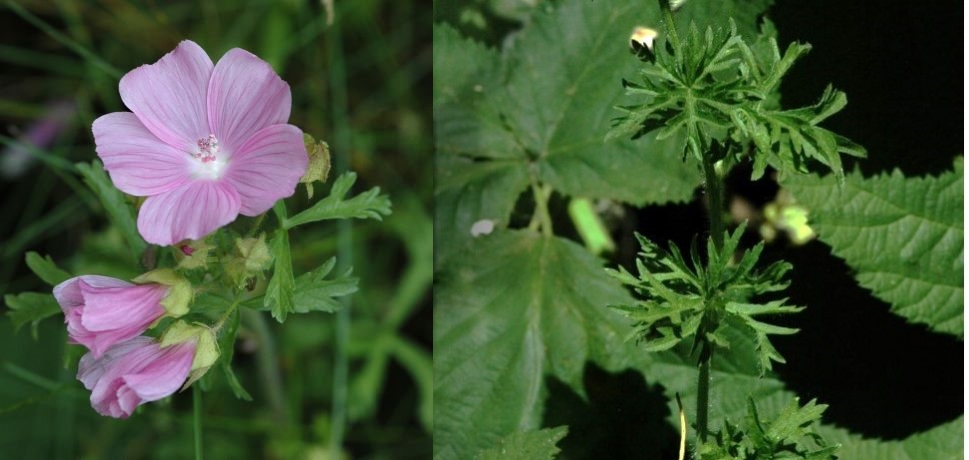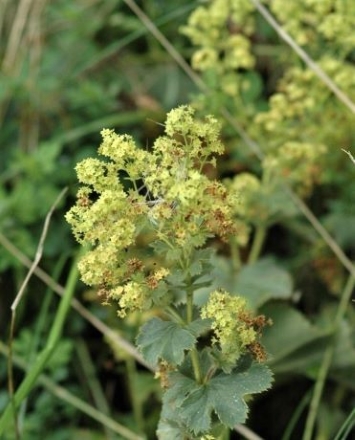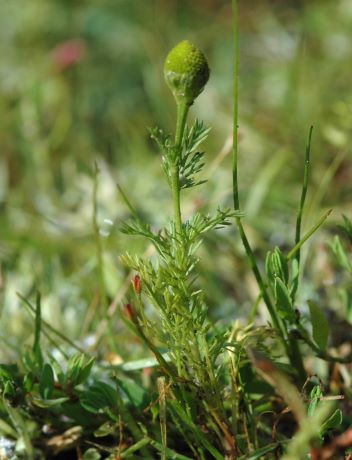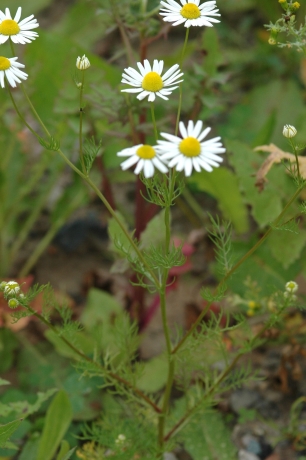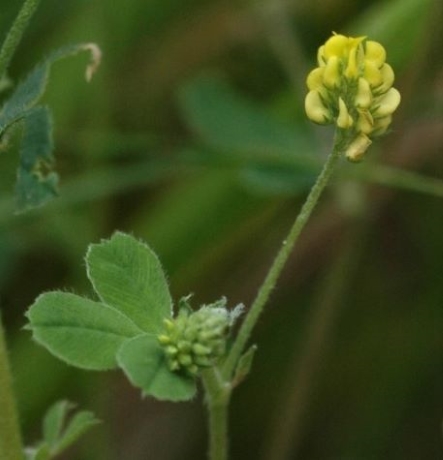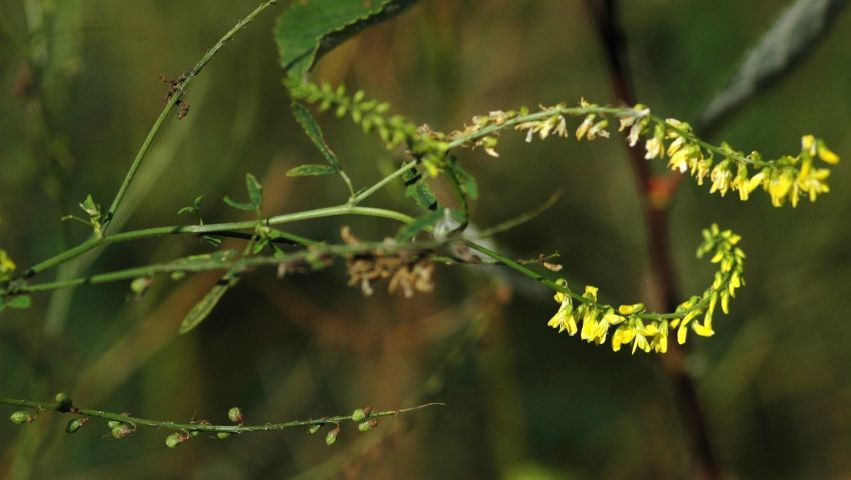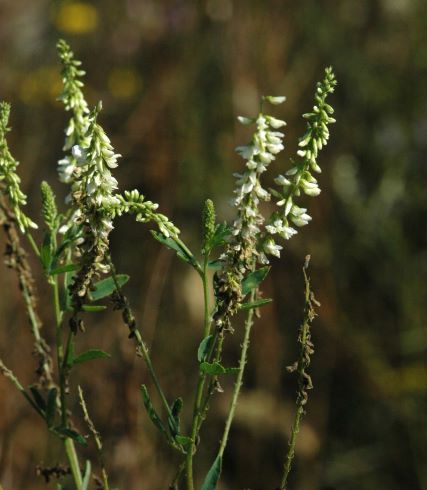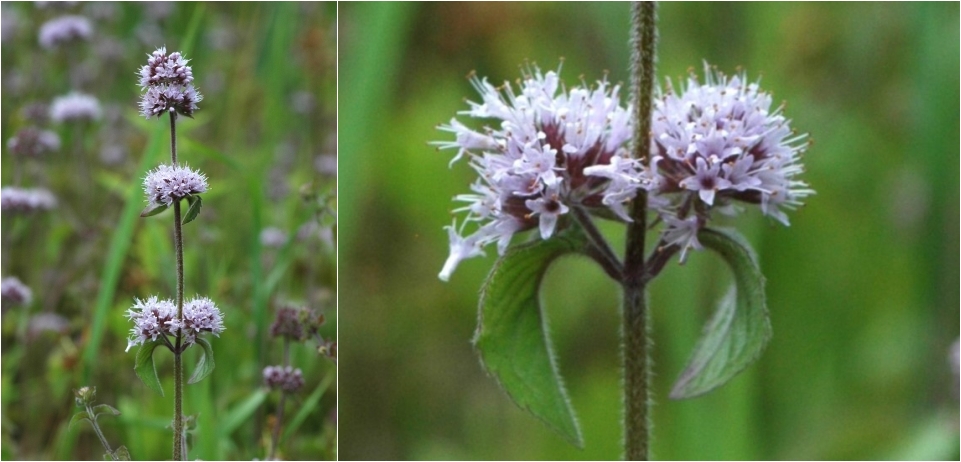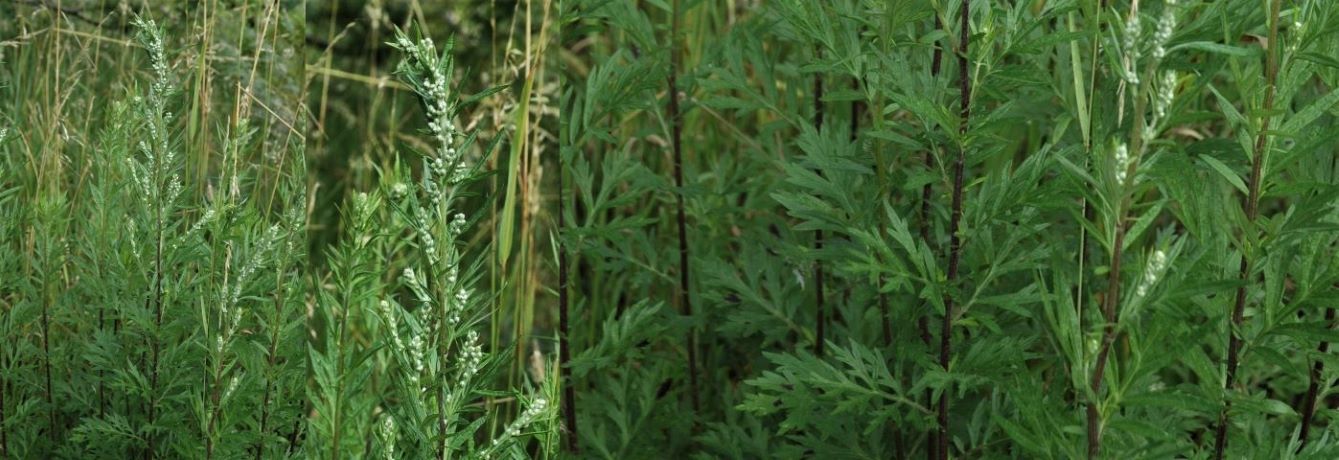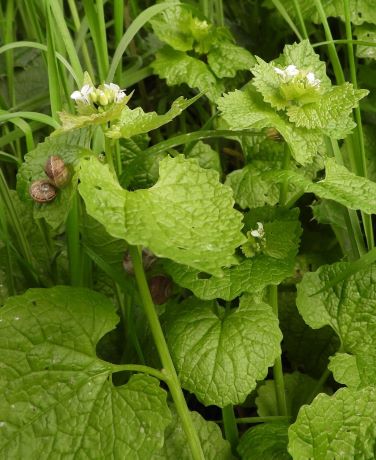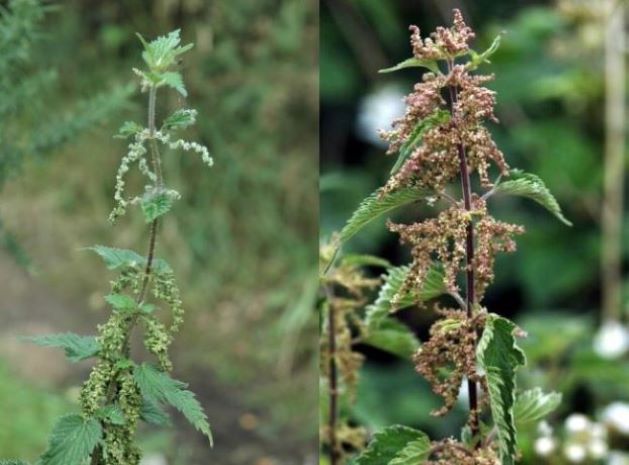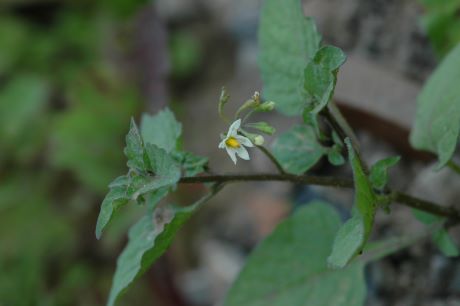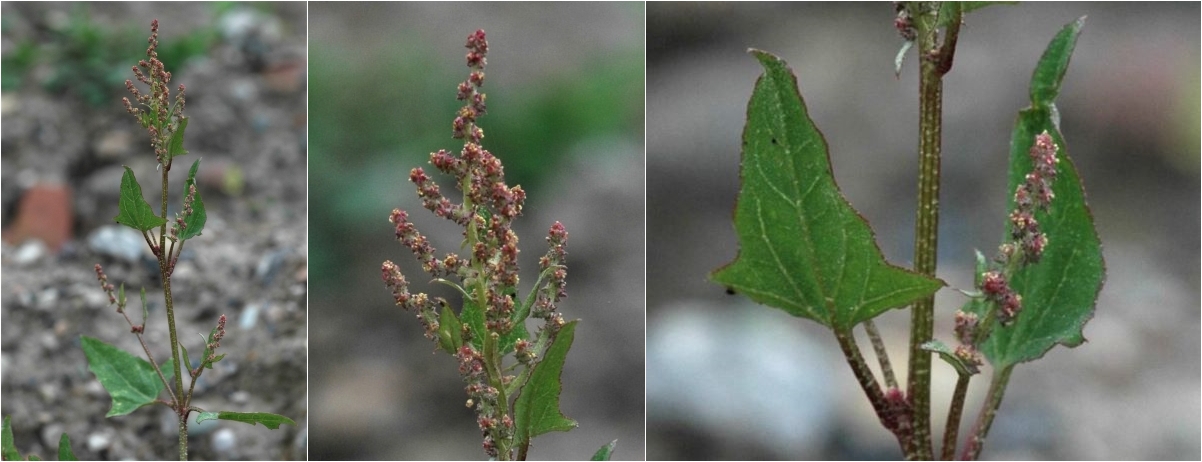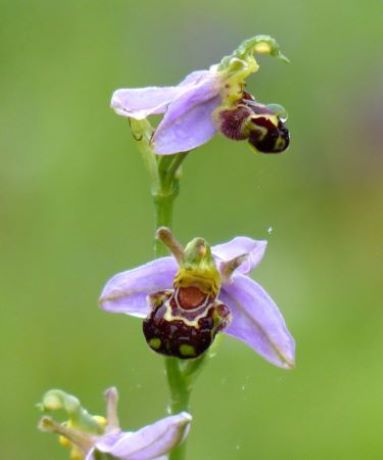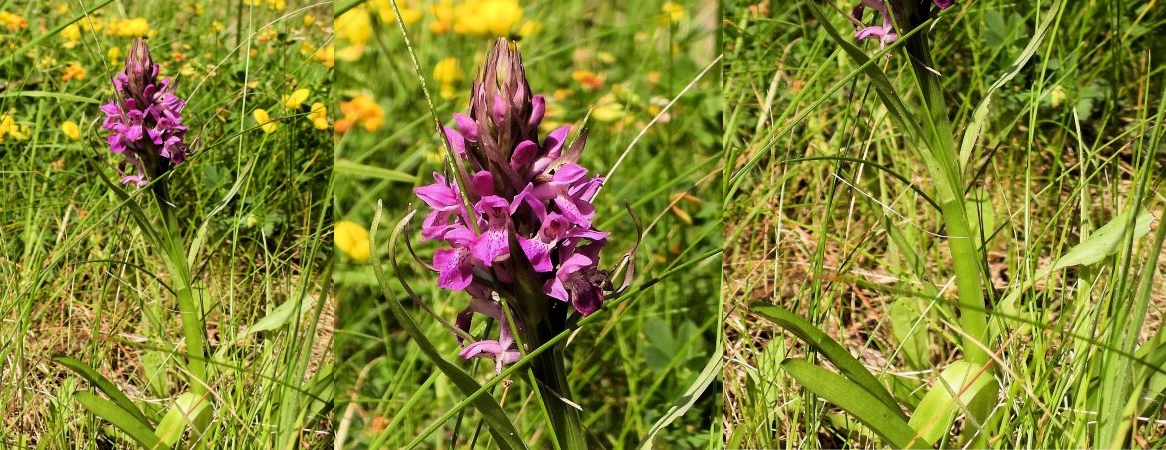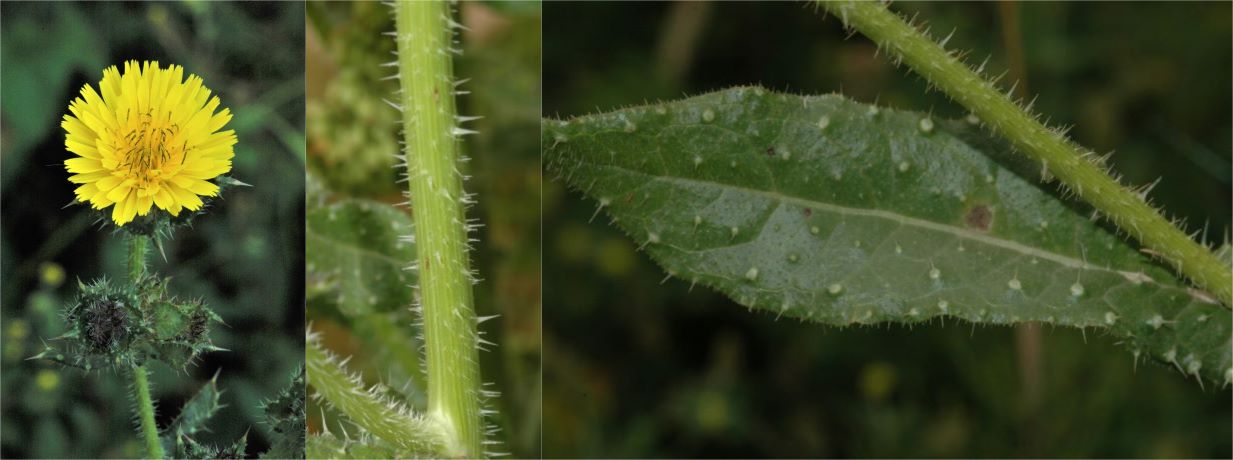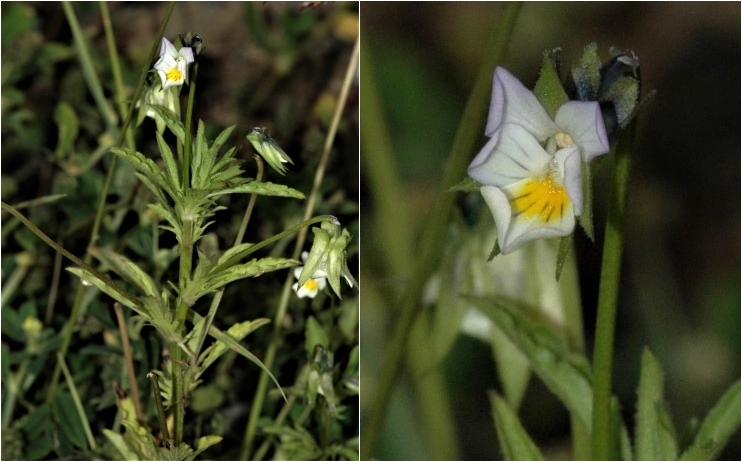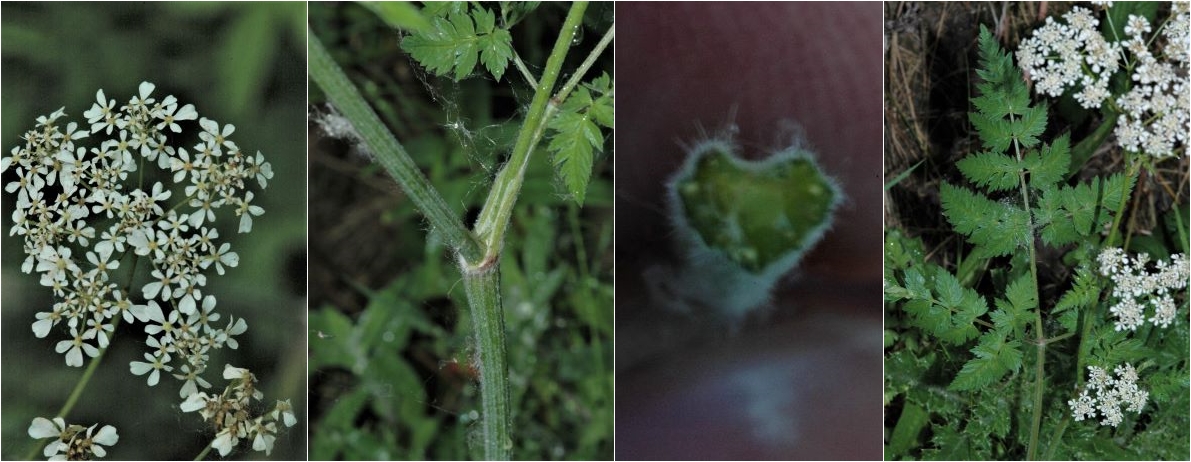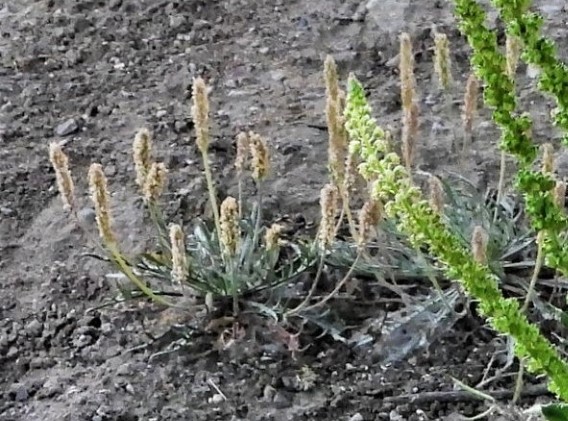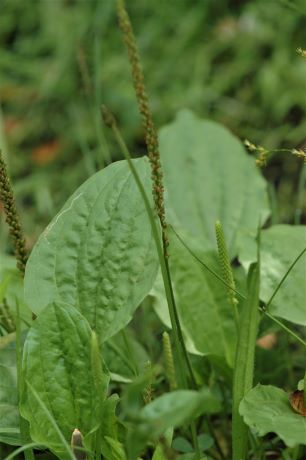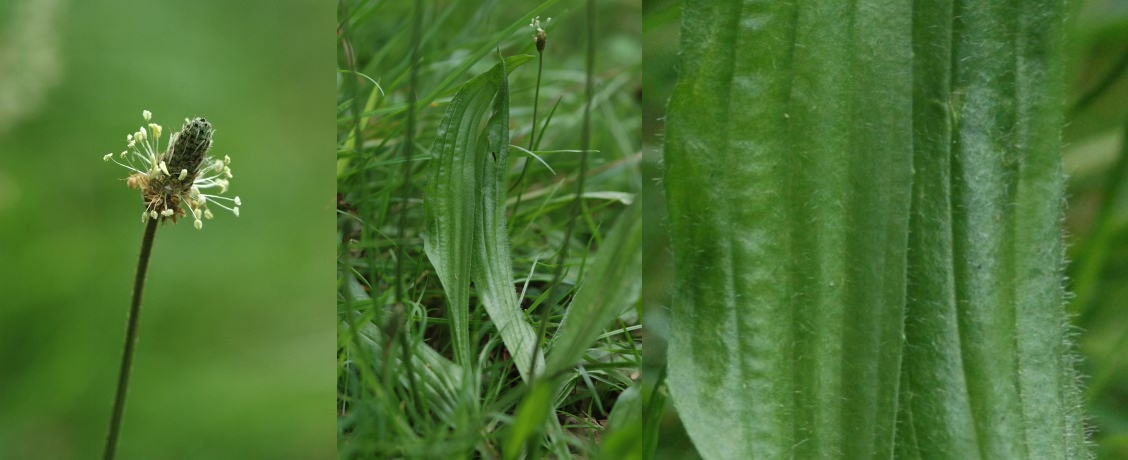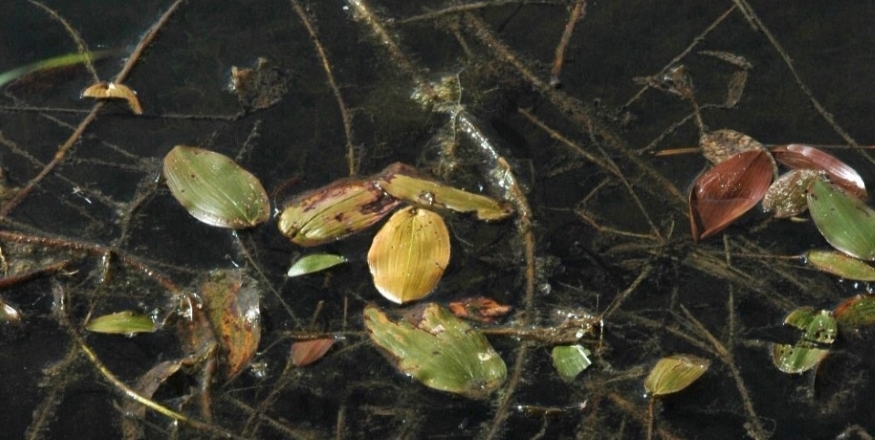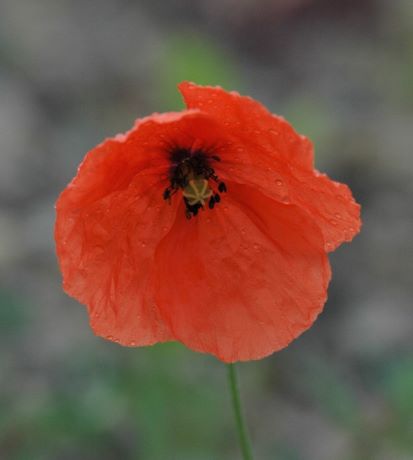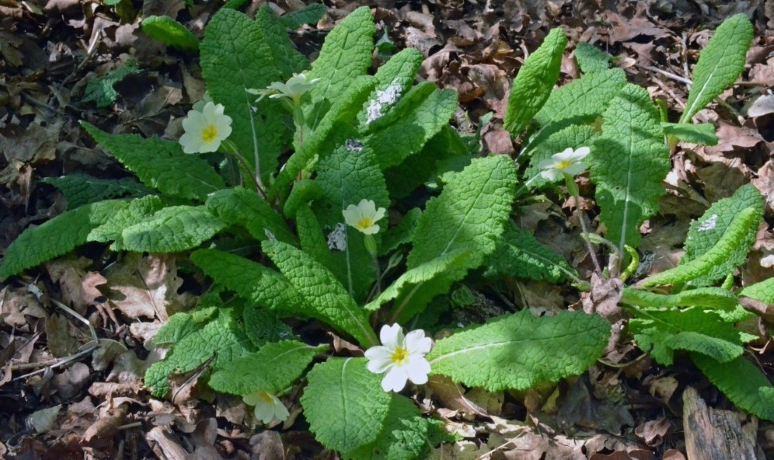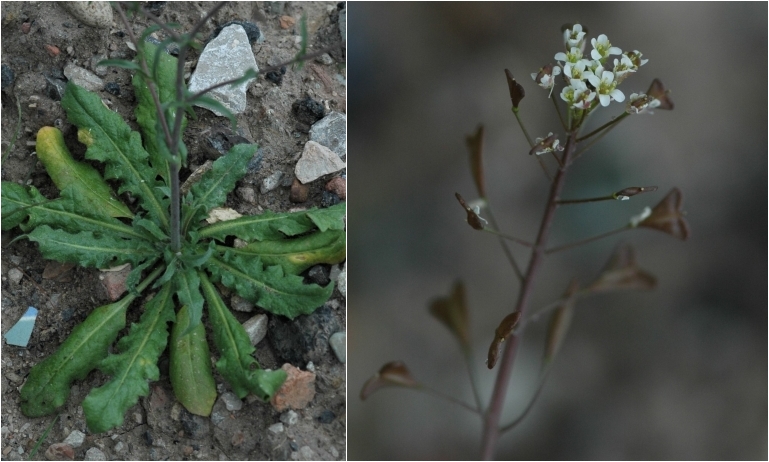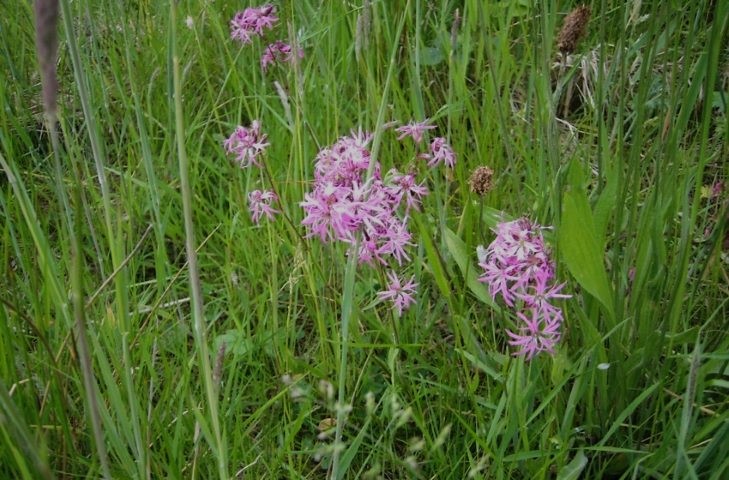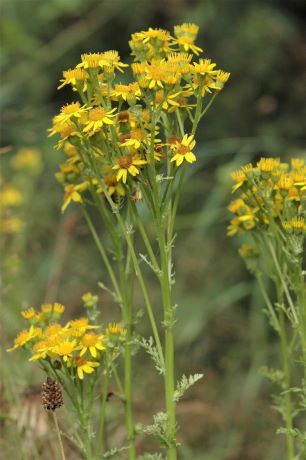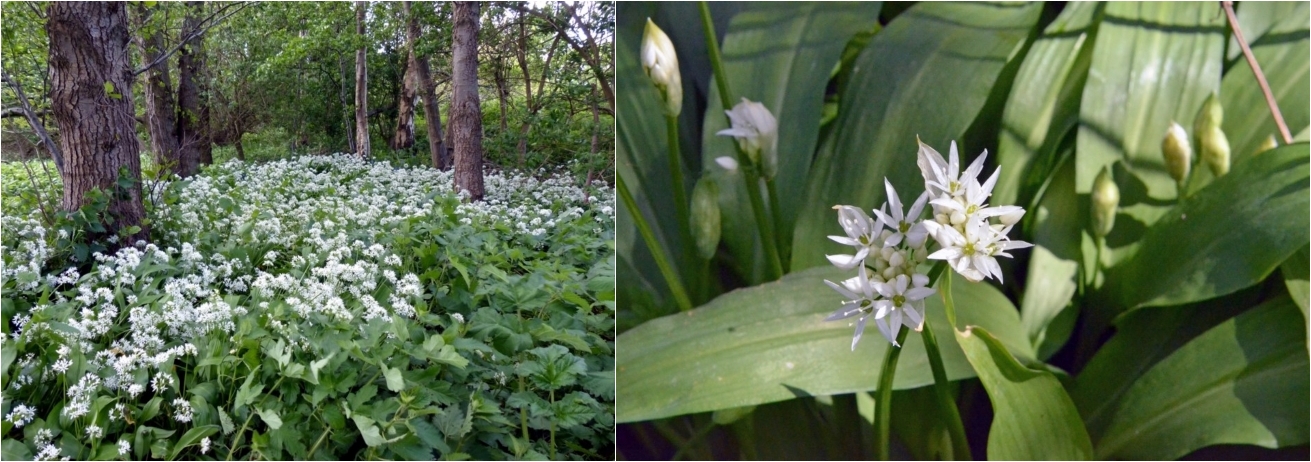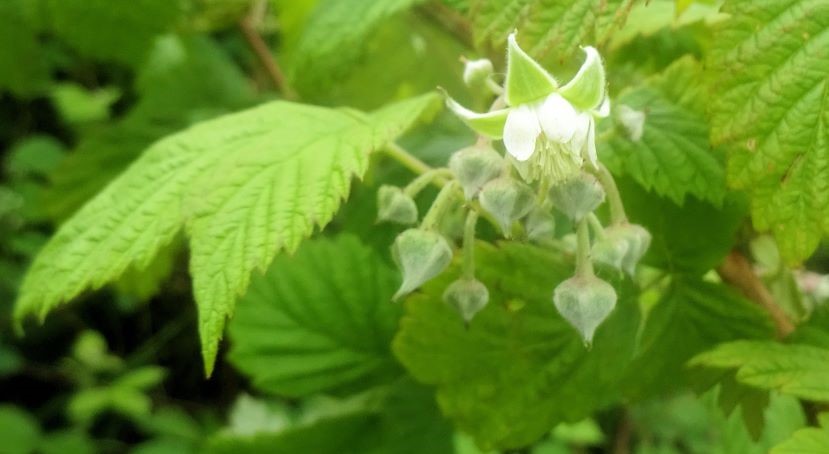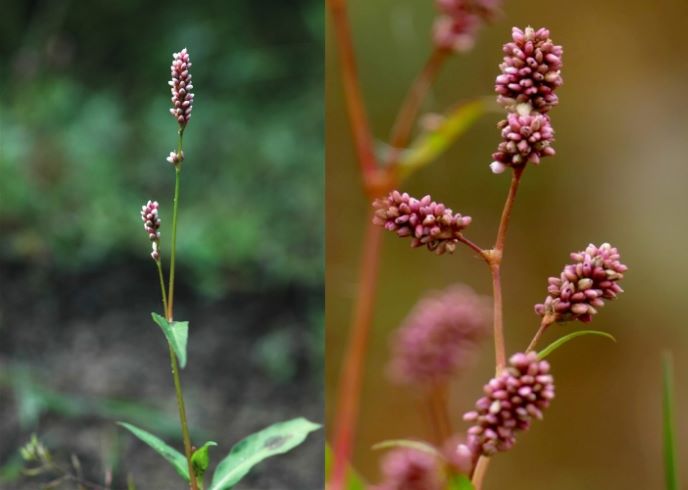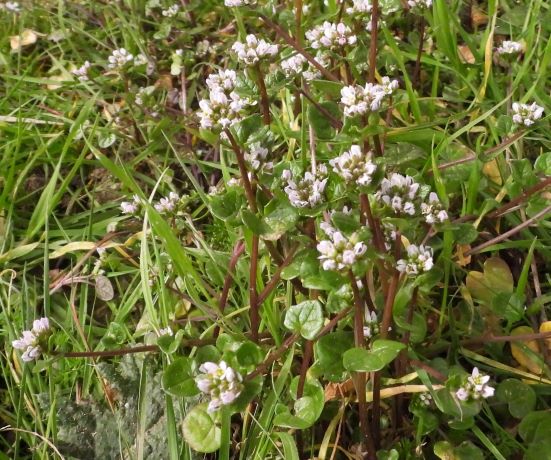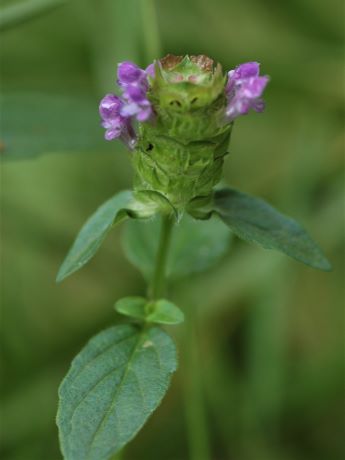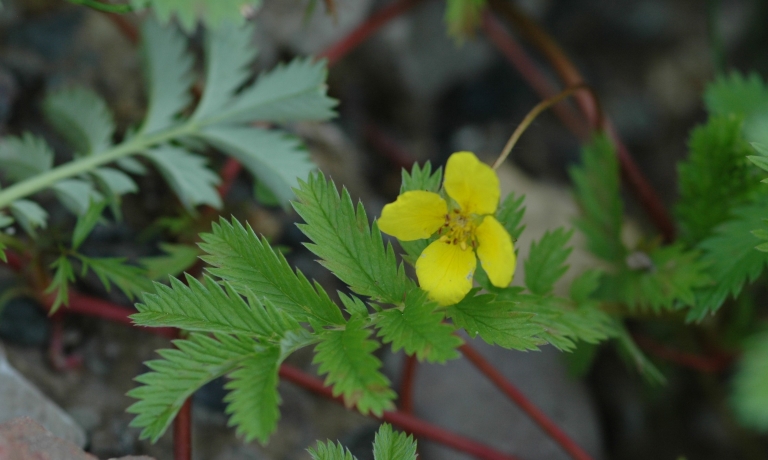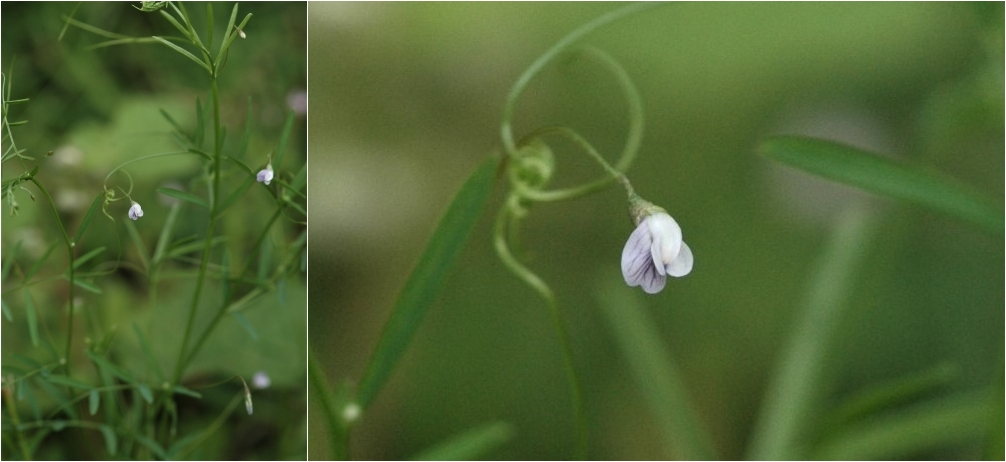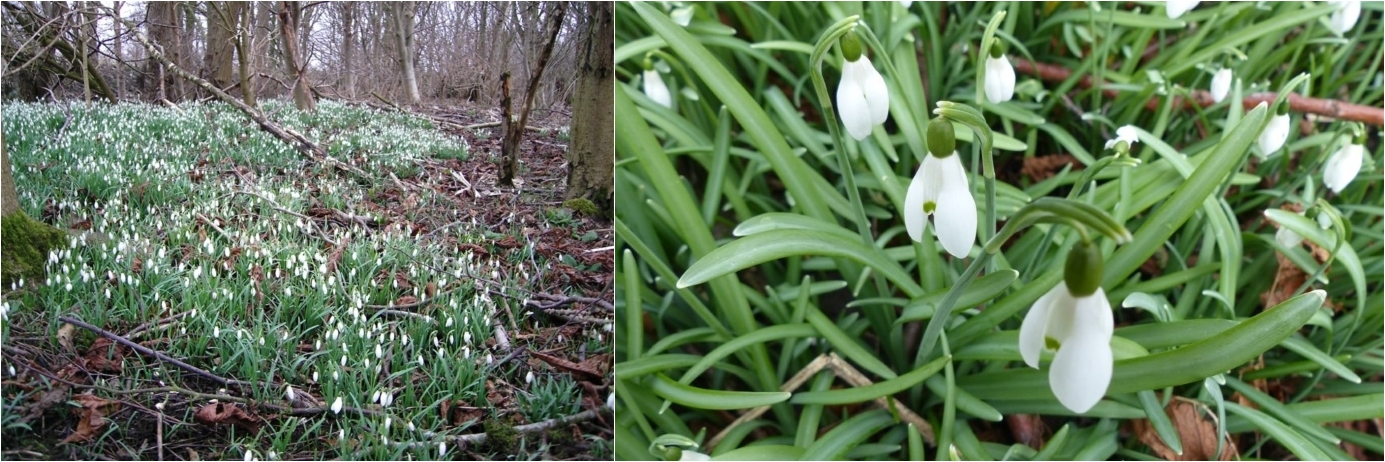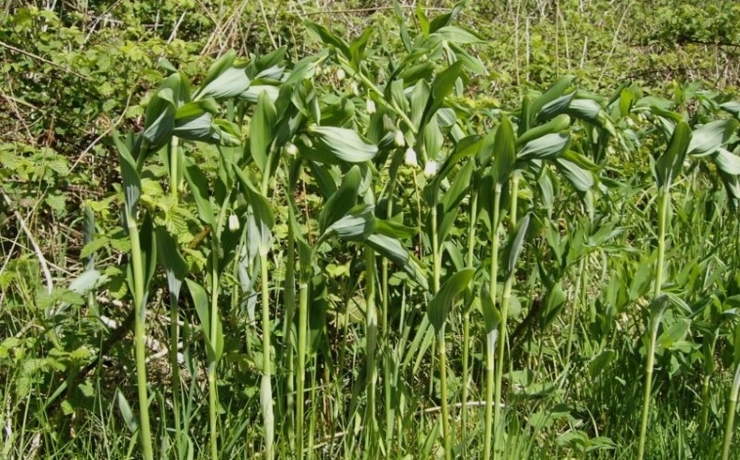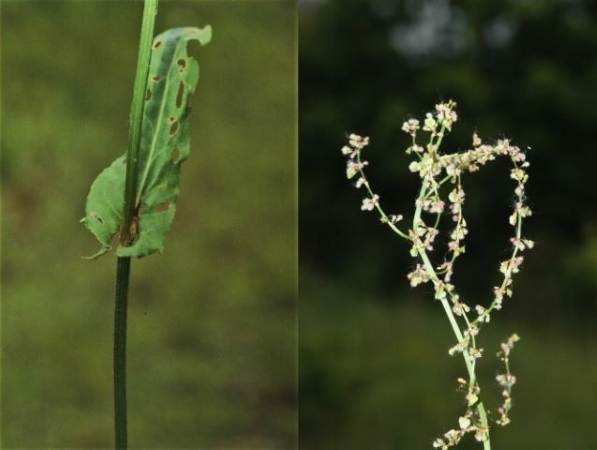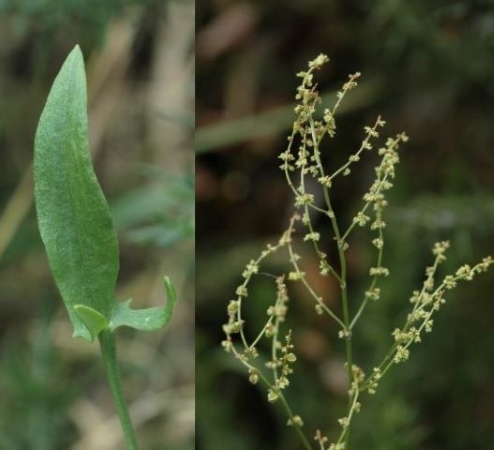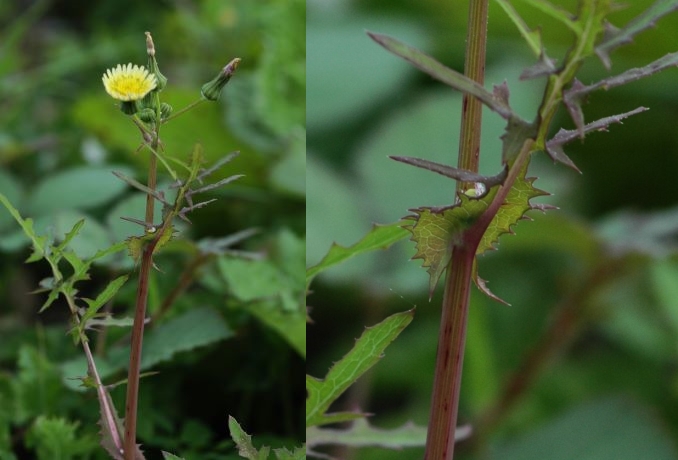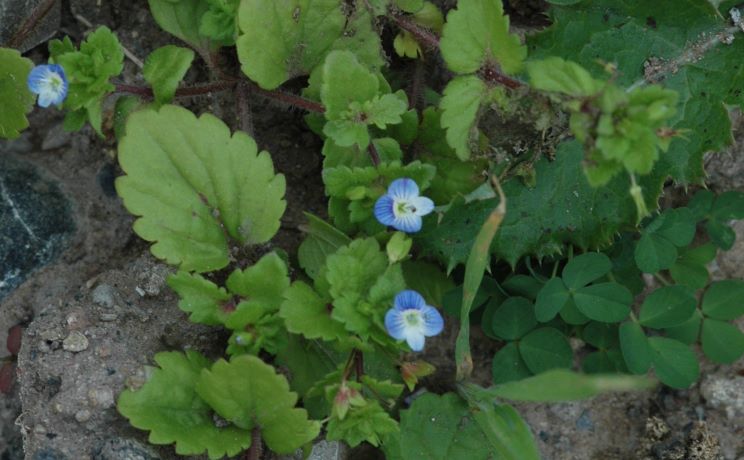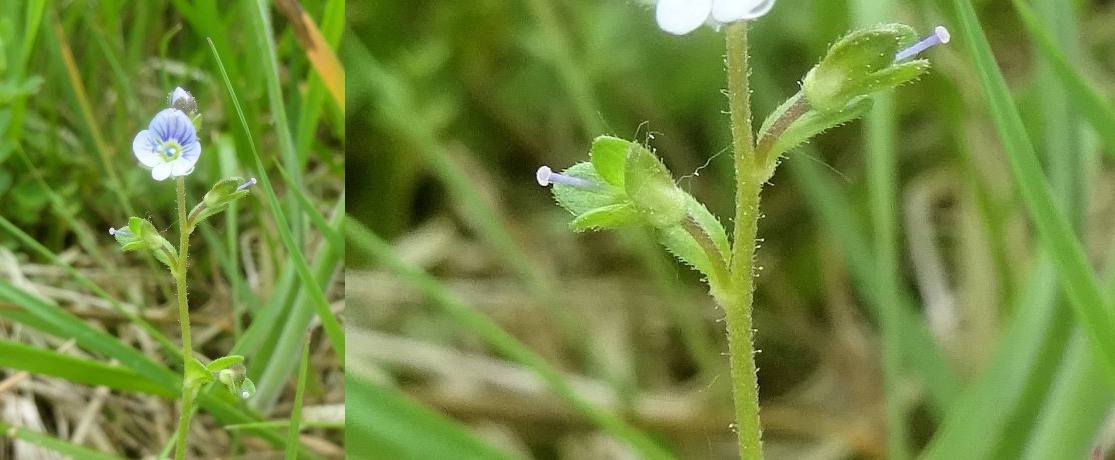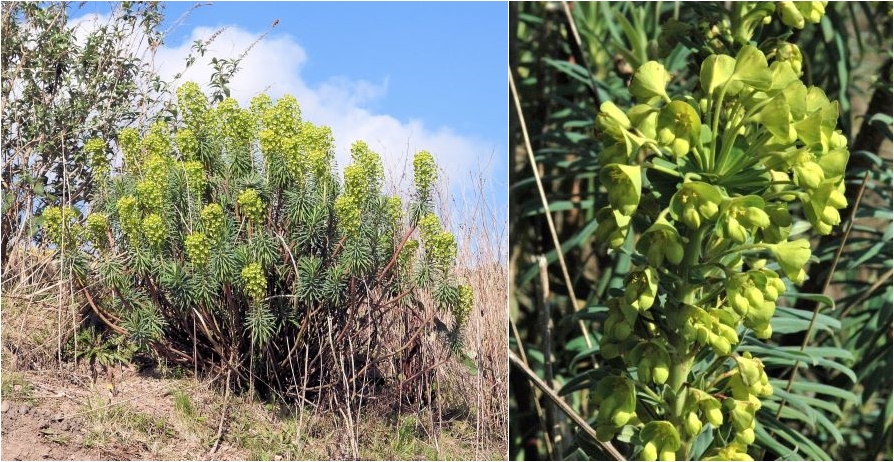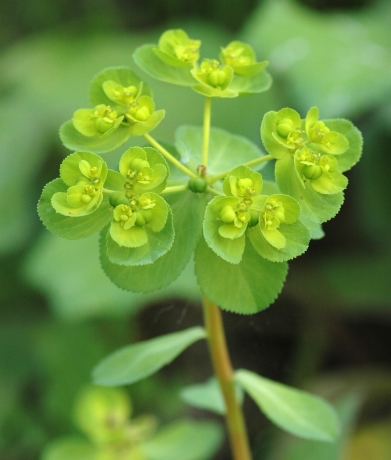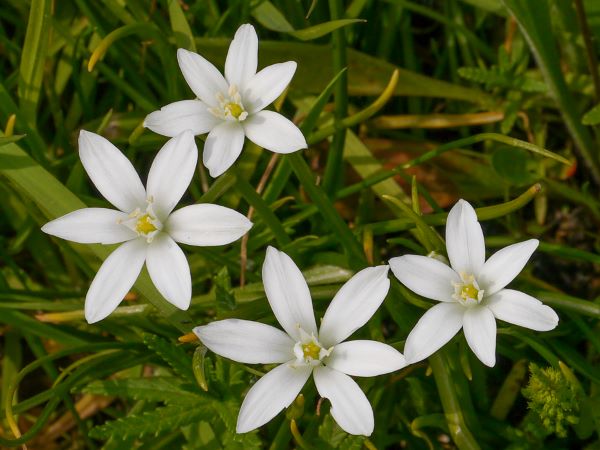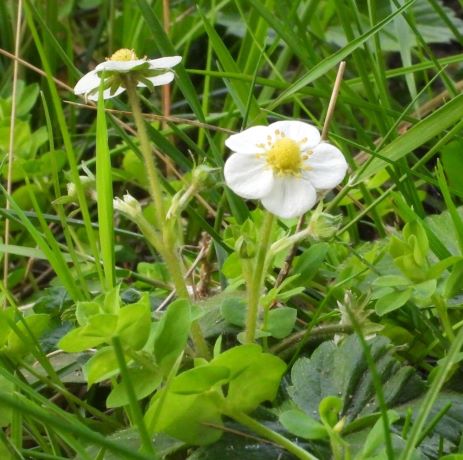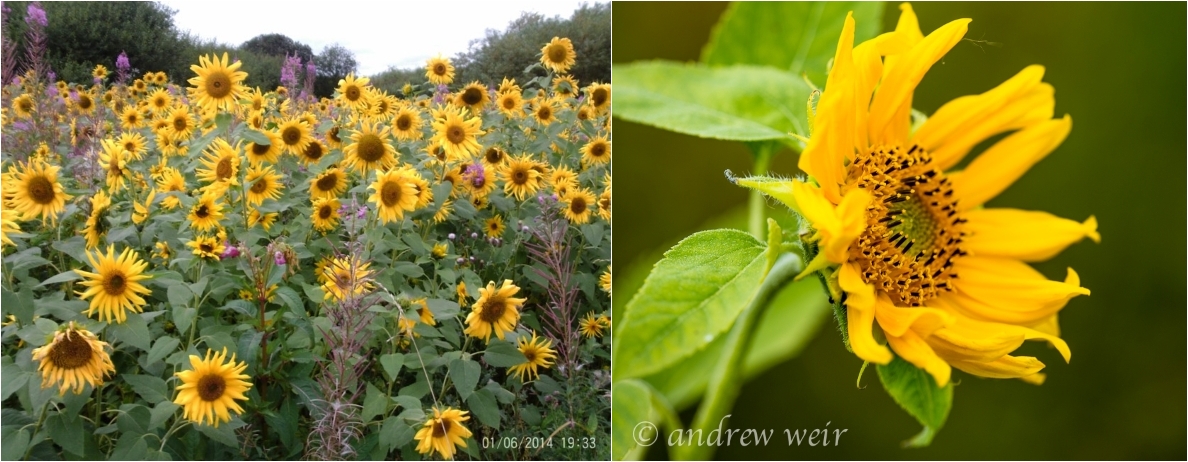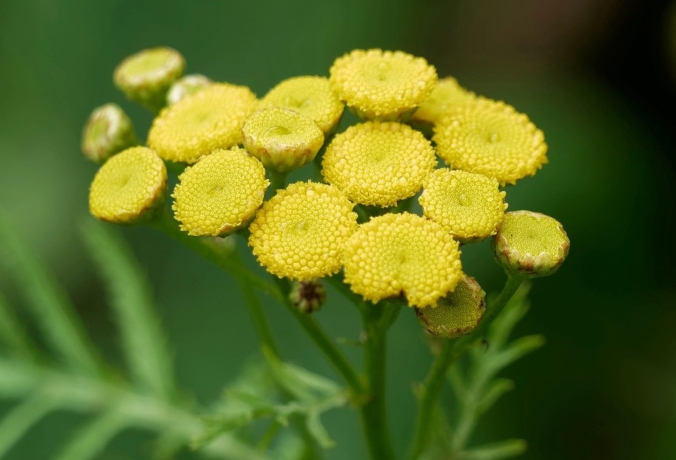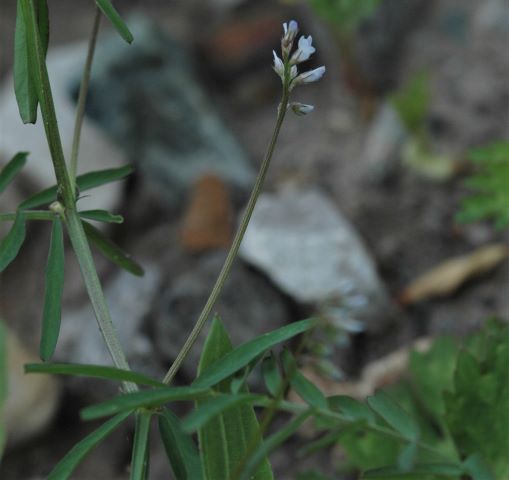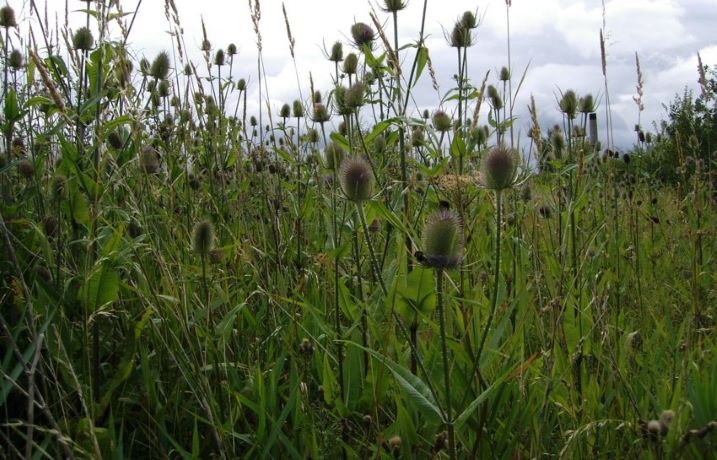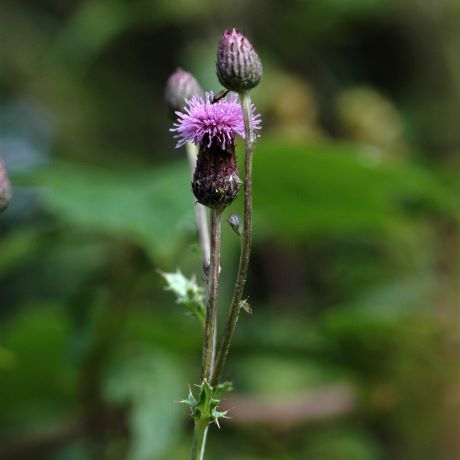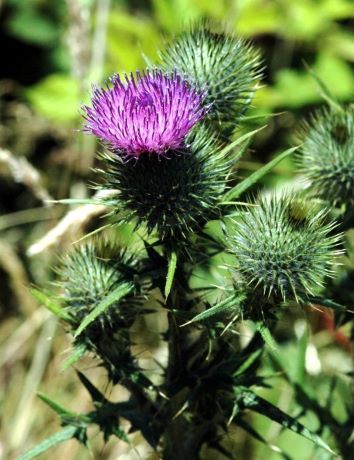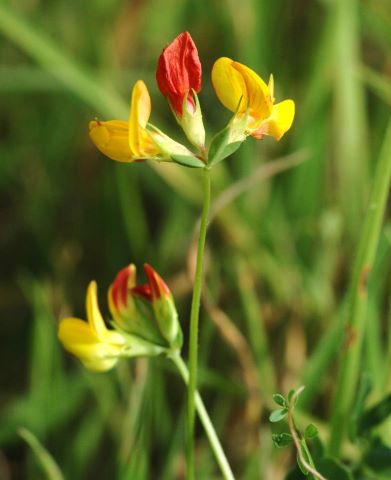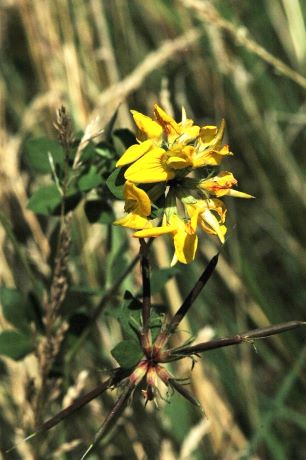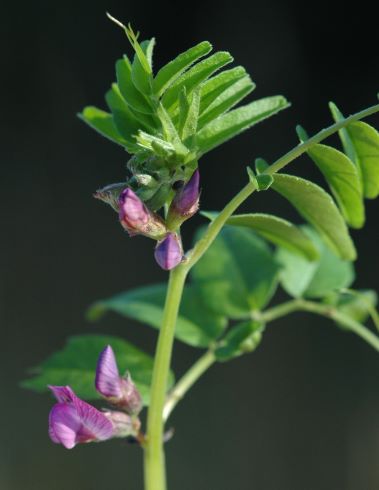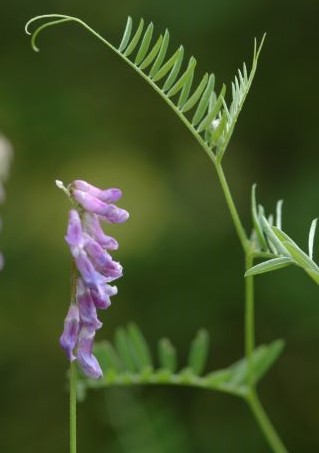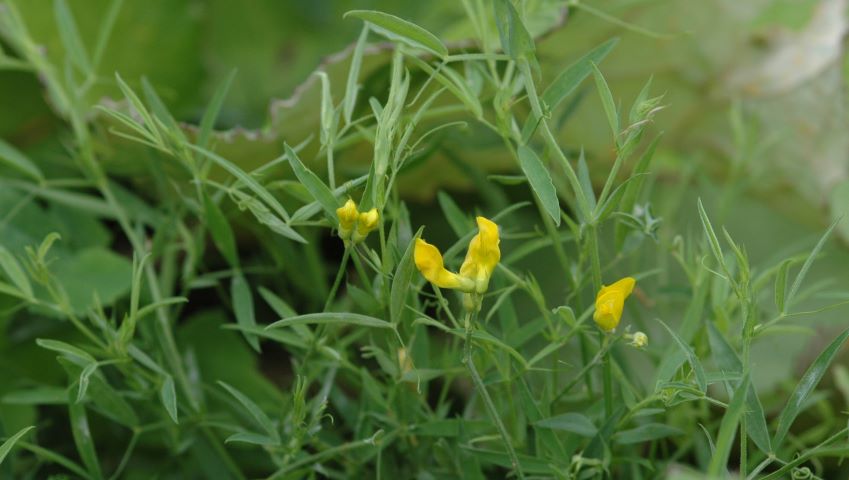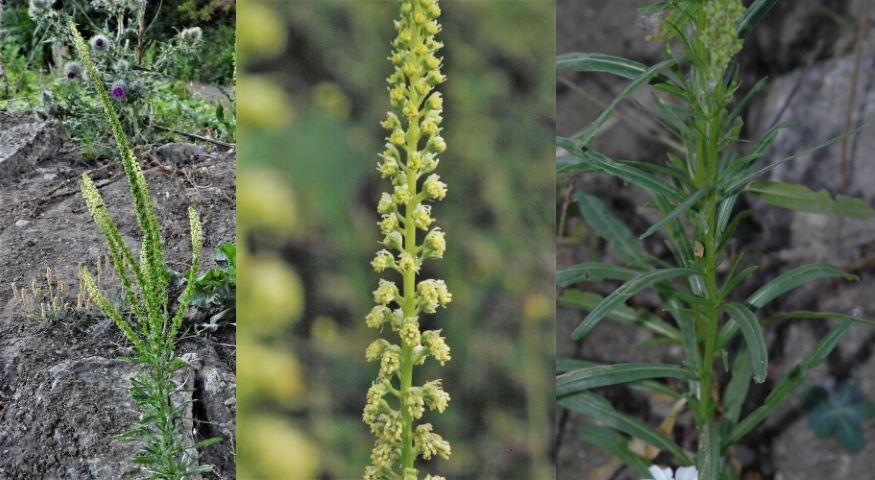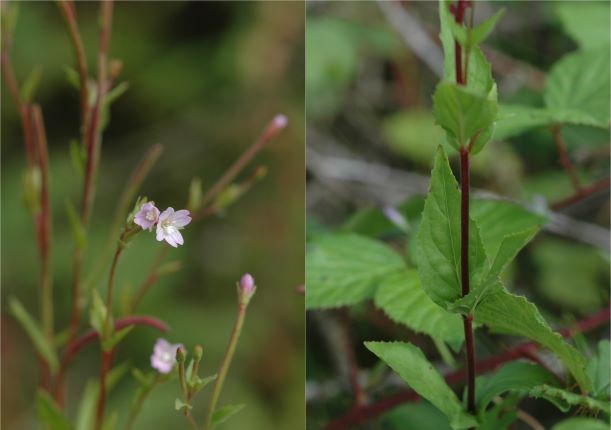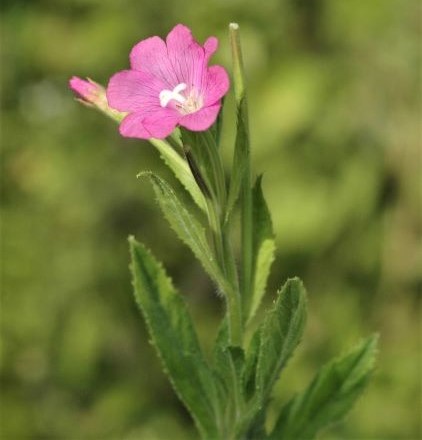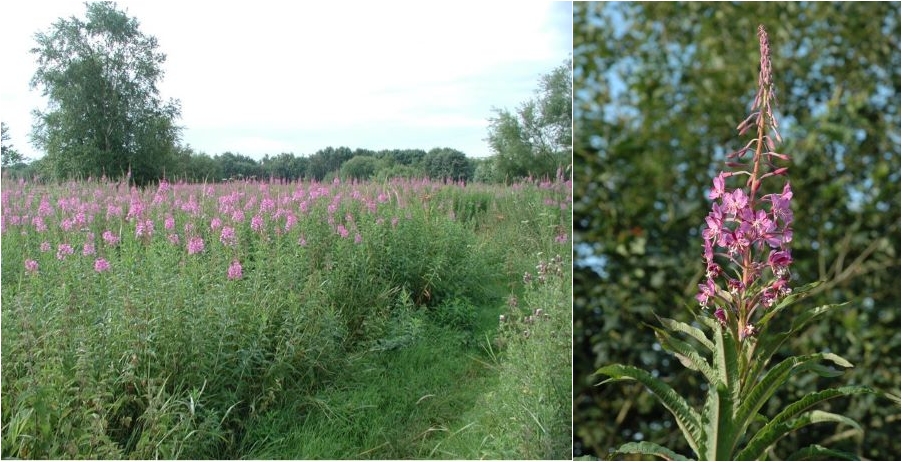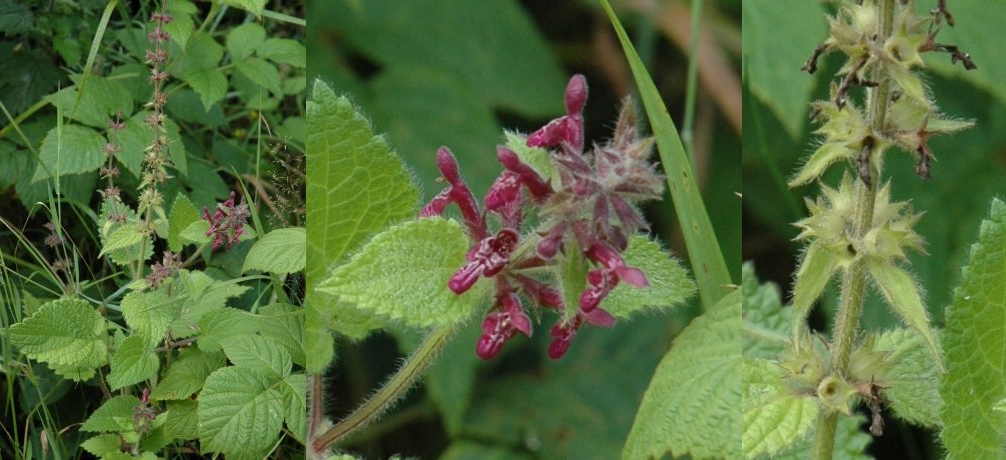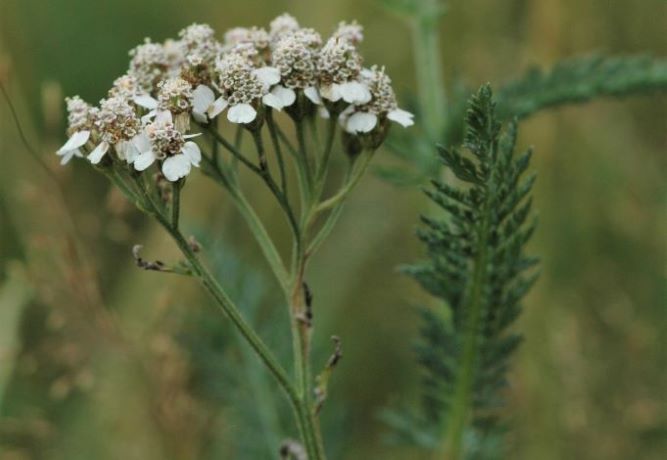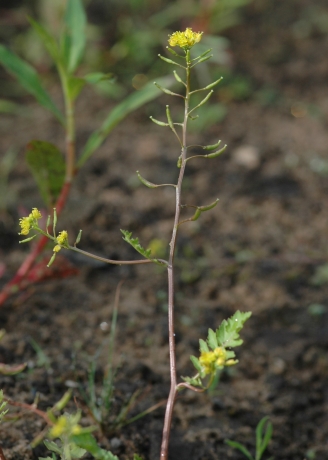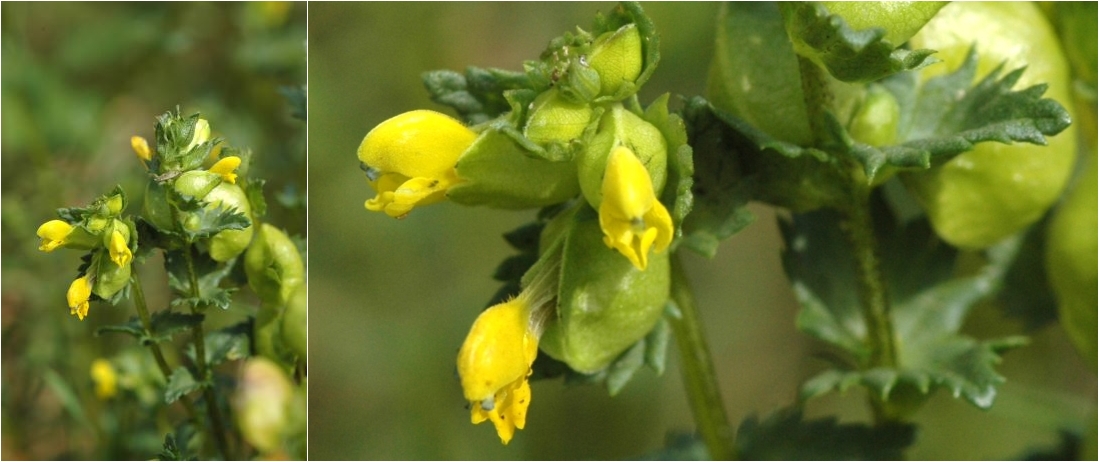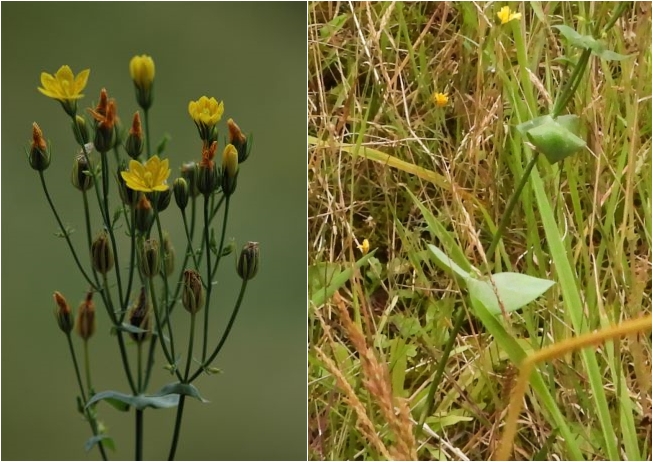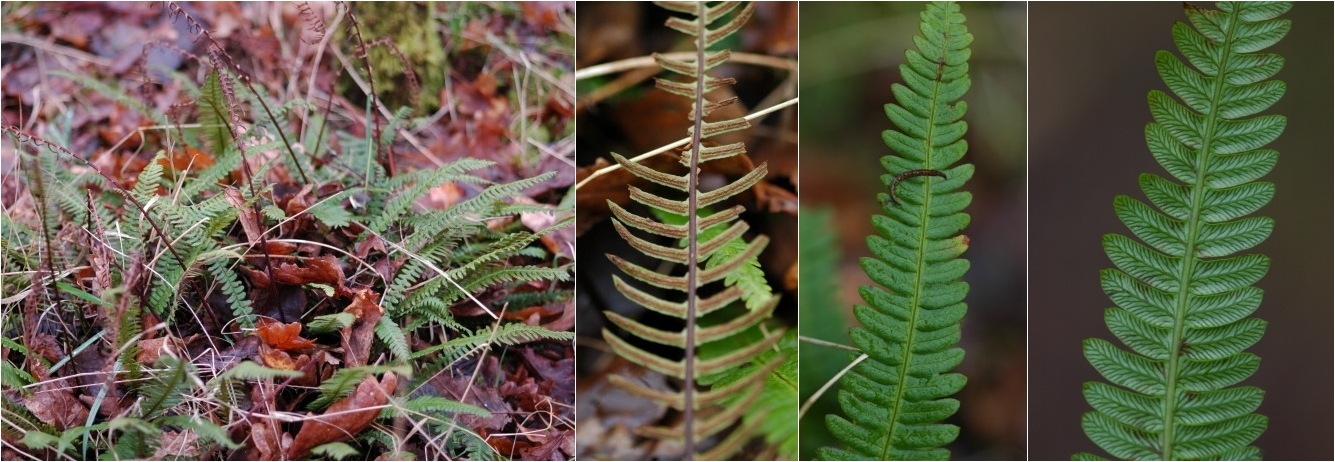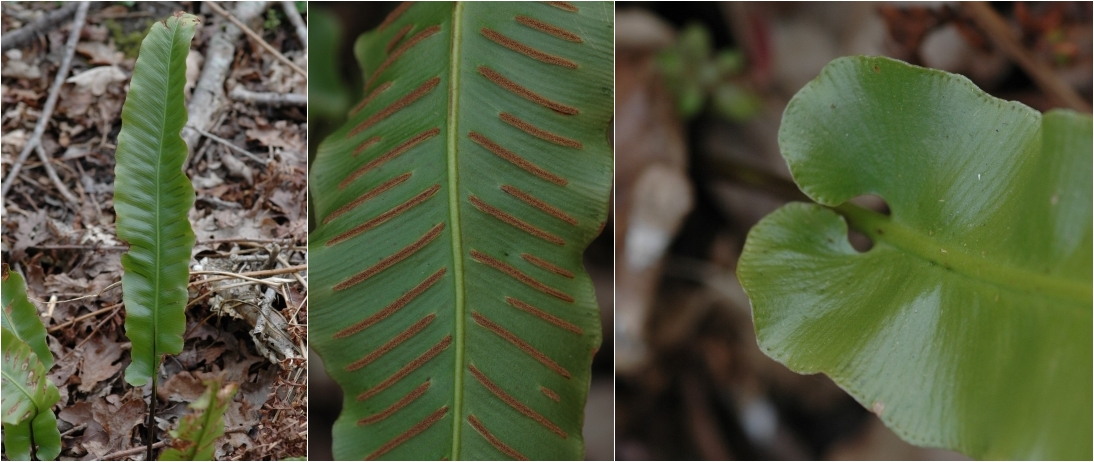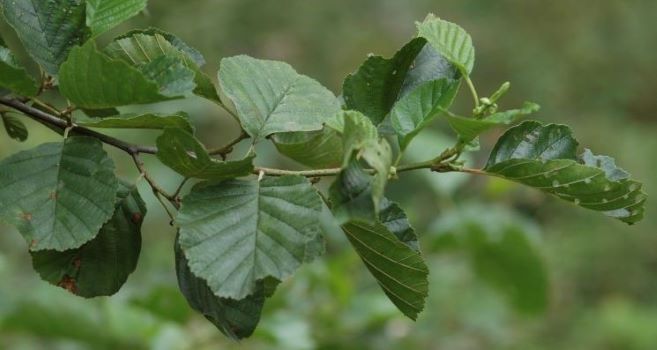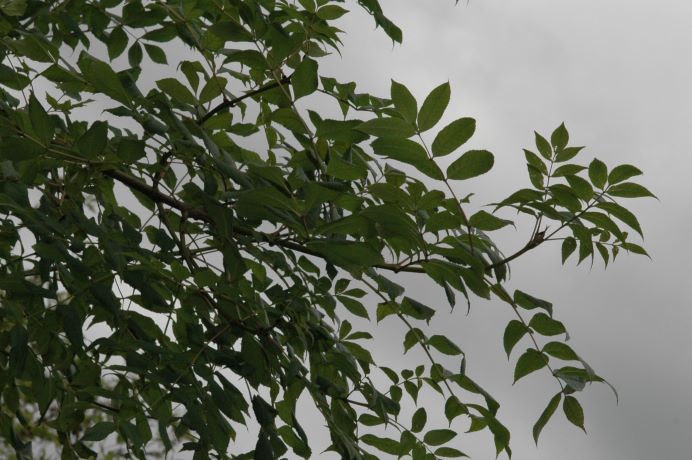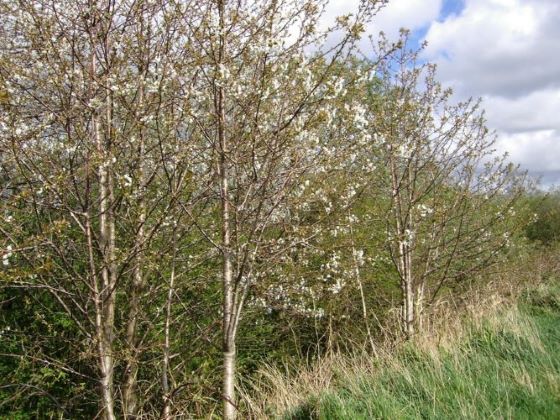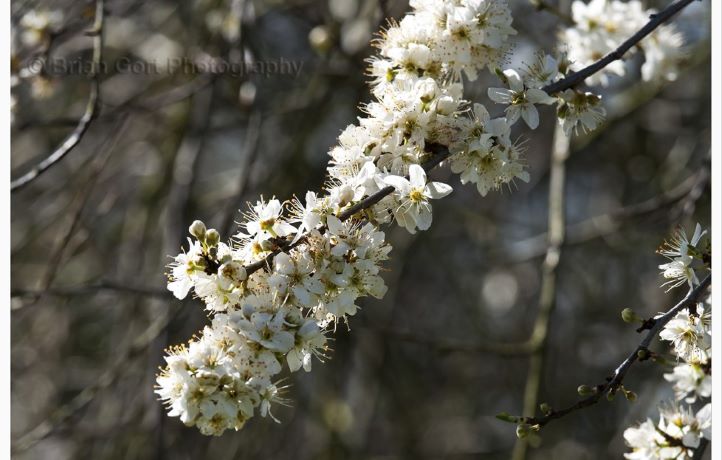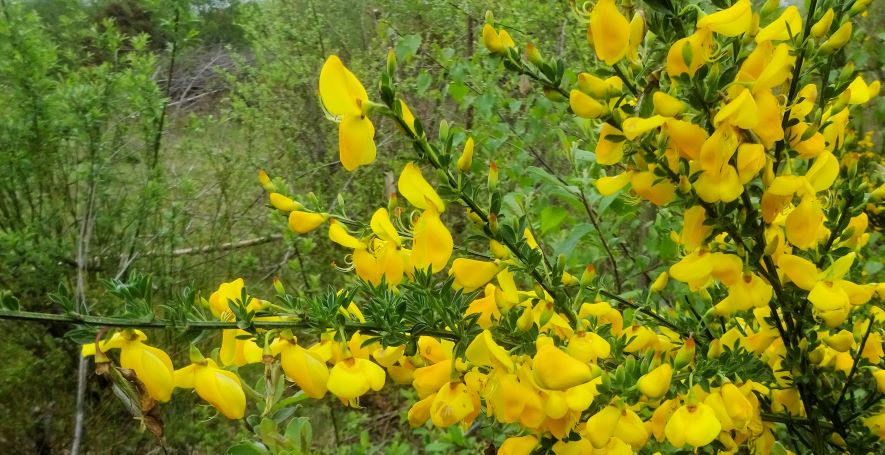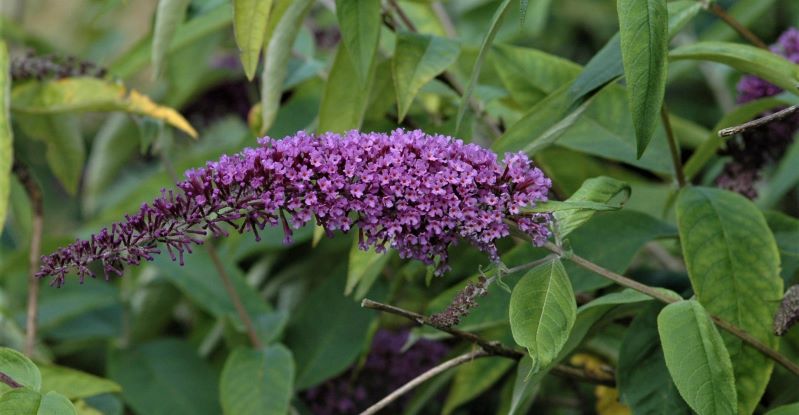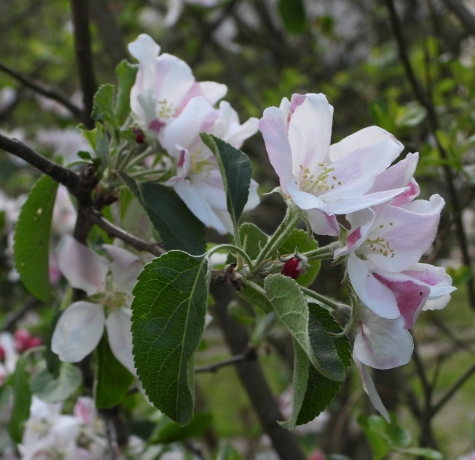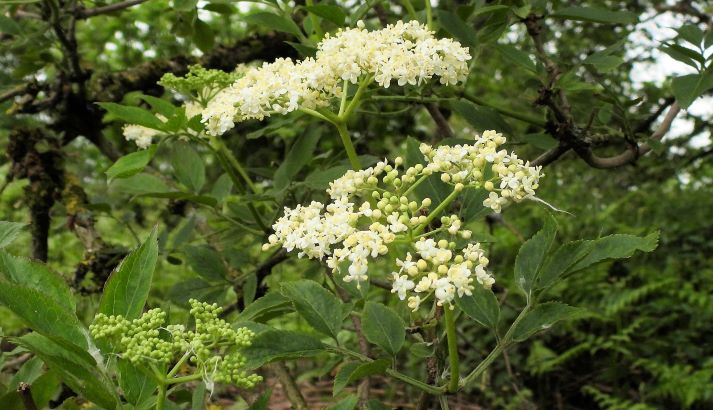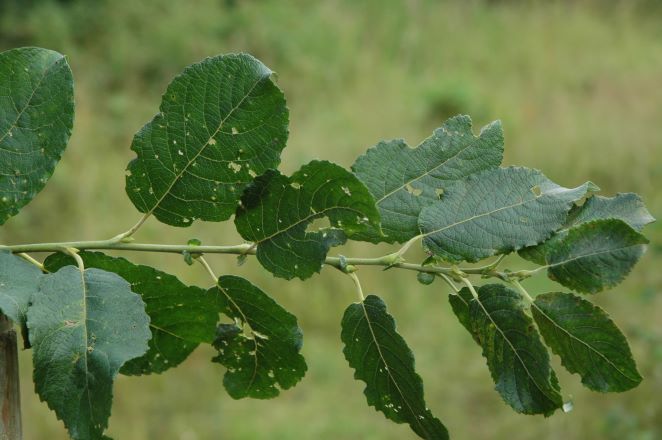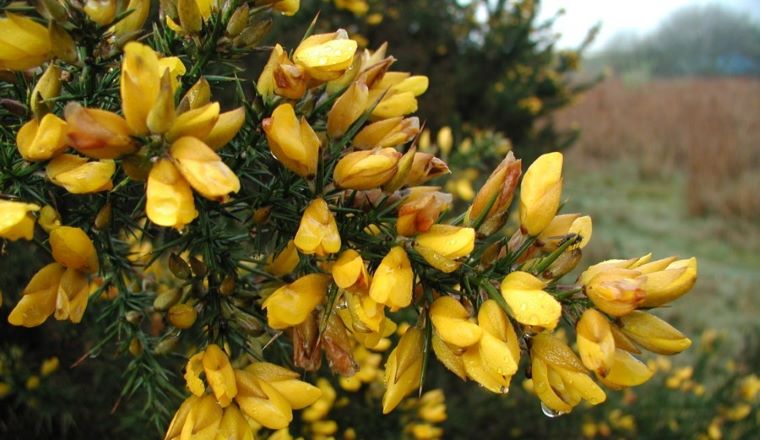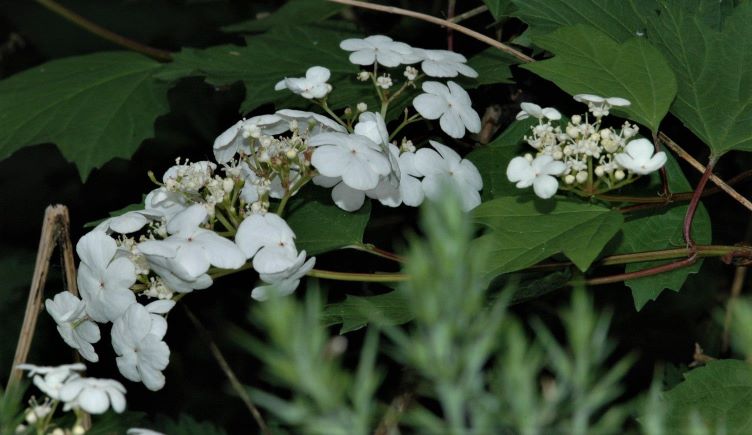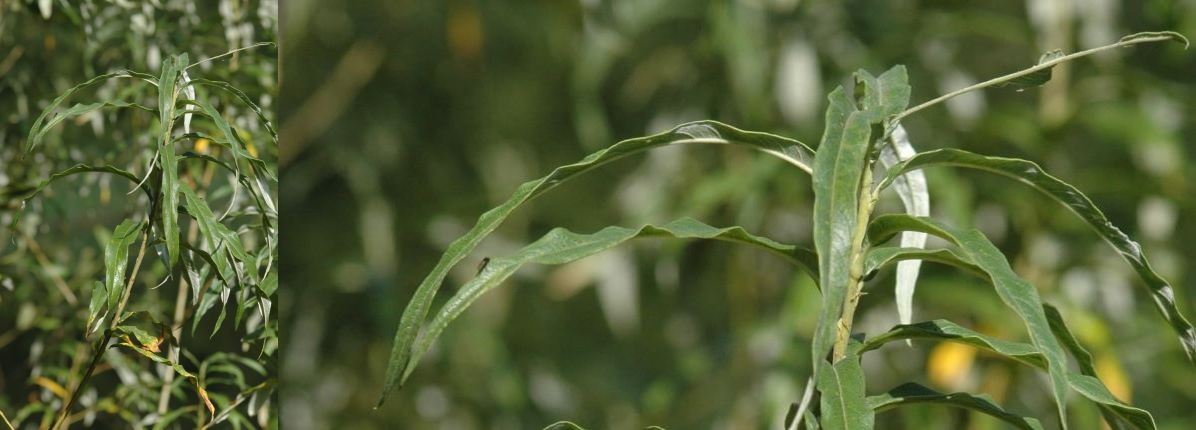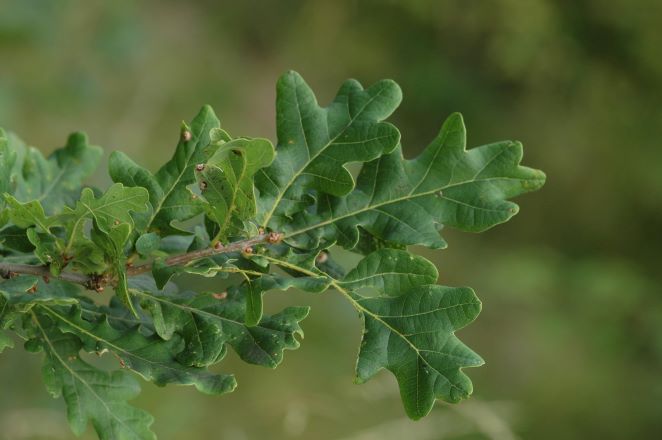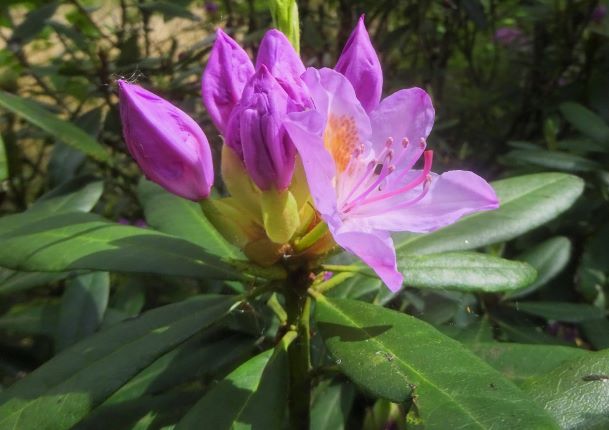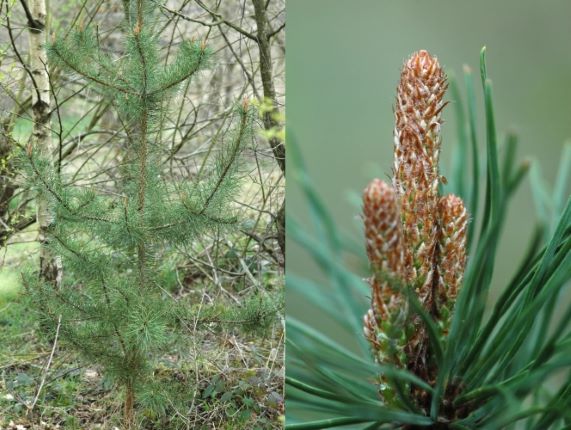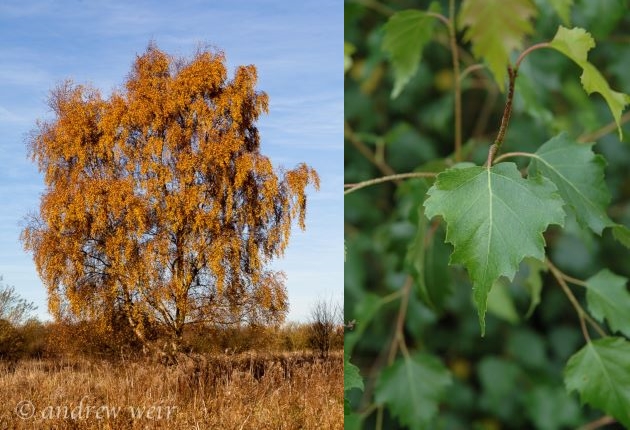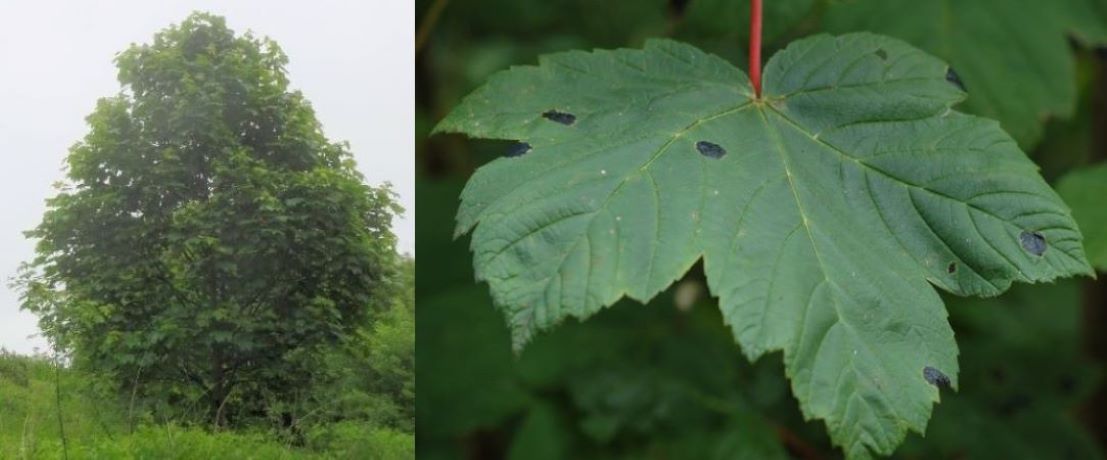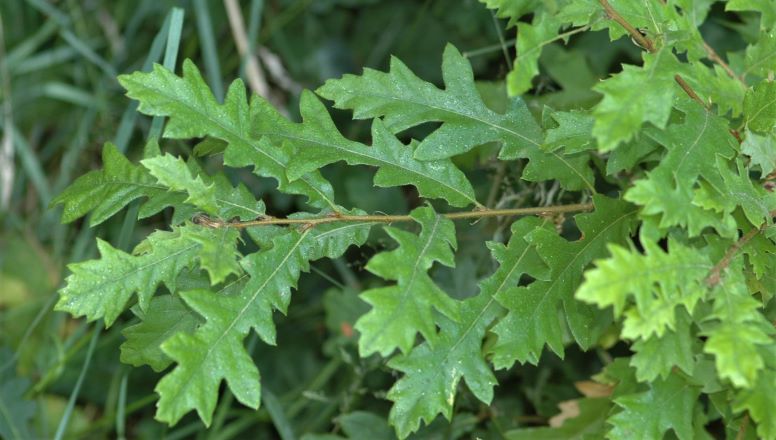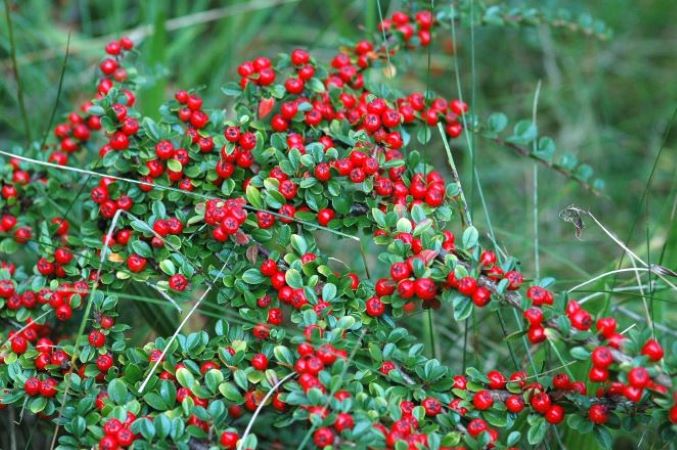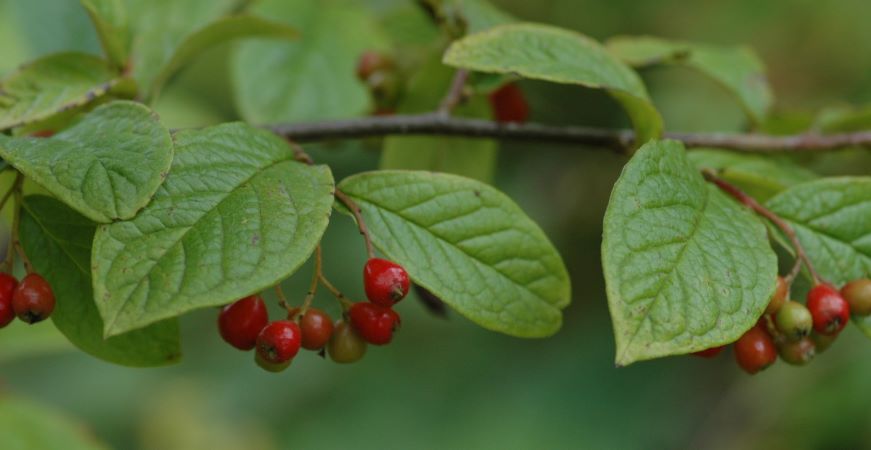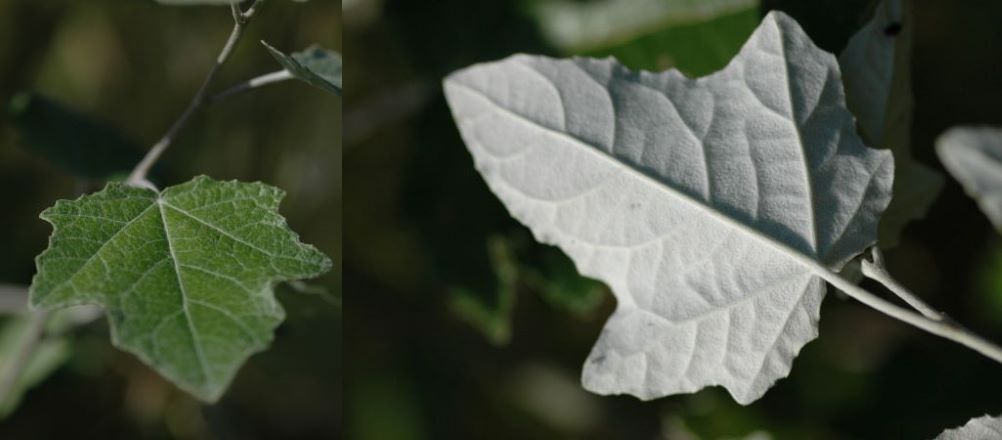This section looks at the flowers, trees and shrubs which have been recorded on Woolston Eyes. All the species following are listed in alphabetical order of their common English name and the flower species are sequenced first followed by the trees and shrubs.
List of Flowers, shrubs & Trees recorded on Woolston Eyes
The list above is compiled from the following reports, surveys and records, in reverse chronological order, and each contain the first discovery of at least one of the species listed. Other records may exist but these do not add new species and are not identified here.
- 2021-2022 A List of Species Photographed Over 1 Year on No.1 Bed - John Blundell & David Riley
- 2013-2018 A List of Flora Recorded On Woolston Eyes - Margaret Rawlins & Colleagues
- 2010 Plants Found on North meadow No.3 Bed 29th August - Unknown
- 2004 WECG Annual Report - Orchids at The Eyes 2004 - Brian martin
- 1996 Survey of the Grasses, Sedges & Rushes on Woolston Eyes - Mik Lees & Colleague
- 1990 List of Flora Woolston Eyes No.3 bed Summer Survey - Cheshire Conservation Trust
- 1985 Management Plan appendix 1 - List of Flora on Woolston Eyes
- 1985 WECG Annual Report - Butcheredfield - Duncan MacNaughton
- 1985 WECG Annual Report - Trees Along the Mersey - P J Nichols
- 1985 WECG Annual Report - Aquatic Flora & Fauna - Albert Cook
- 1983 WECG Annual Report - Some Plants of the Eyes - Duncan MacNaughton
- 1980 Ecological Survey of Woolston Eyes - Warrington new Town Corporation Flora List
1 Agrimony
Family: Rosaceae Species: Agrimonia eupatoria
Identification: tall erect, stiff perennial with stems densely leafed below sparse above. Leaves, basal rosette, pinnate, lobed, toothed of 3-6 pairs of leaflets and smaller pairs of leaflets in between, dark green above woolly whitish below. Flowers, yellow, 7mm across, in long terminal spike, June-September.
Status: frequent in open shrub, woody edges, waysides.
John Blundell No.1 bed 11/08/2021
1 Agrimony Hemp
Family: Compositae Species: Eupatorium cannabinum
Identification: an erect medium to tall perennial, densely leafy with reddish stems. Leaves are palmately 3 to 5-lobed which are elliptical and coarsely toothed. Flowers, pinkish, oblong 2-5mm across with many clustered into a flat topped inflorescence, July to September.
Status: Common in Britain, present on the Reserve but infrequent on damp/shady ground, marsh edges, moist ditches, woodland edges, clearances.
John Blundell No.1 bed 30/08/2021
1 Alkanet Green
Family: Boraginaceae Species: Pentaglottis sempervirens
Identification: an erect medium tall branched perennial which is bristly-hairy all over. Leaves are lanceolate, the lower stalked. Flowers are a deep blue with a white throat from April to July.
Status: Widespread and often encountered on the Reserve in moist places, ditches, damp meadows, marshy edges, hedge banks, field margins.
David Waterhouse No3. Bed 29/03/2014
1 Anemone Wood
Family: Ranunculaceae Species: Anemone nemorosa
Identification: A low perennial, hairless with a single white (sometimes pinkish hue) flower 20 to 40mm across and yellow anthers to the stamen. Leaves are stalked and deeply lobed, characteristically three lobes arranged in a whorl of three leaves below the flower which is from around March to May.
Status: Found in shady places in woody areas, amongst hedges and thickets.
John Blundell No.1 bed 01/09/2021
1 Angelica
Family: Umbelliferae Status: Angelica sylvestris
Identification: tall perennial, almost hairless, stems often purple stained with leaves 2 or 3-pinnate with broad toothed leaflets and inflated sheath stalks clasping the stem. Flowers white and pinkish in globular clusters in a wide umbel in July to September. Fruit a flattened egg-shape with wings.
Status: Infrequent on the Reserve but present on most, if not all beds.
1 Angelica Garden
Family: Umbelliferae Species: Angleica archangelica
Identification: Similar to sylvestris above but stems generally green, leaf stalks aromatic, flowrrs greenish to yellowish and fruit with corky wings.
Status: Only recorded once in 1990 on No.3 bed.
1 Apple Of Peru
Family: Solanaceae Species: Nicandra physalodes
Identification: medium to tall annual, foetid, very poisonous. Leaves pointed oval, jaggedly toothed or lobed. Flowers blue to pale violet with white throat, bell-shaped and solitary c40mm, open only for a few hours, June to October.
Status: an introduced plant from Peru the only specimen recorded, in 1981, was from garden waste of intentionally planted.
John Blundell No.1 bed 01/06/2022, flower head, leaves
1 Aquilegia (Columbine)
Family: Ranunculaceae Species: Aquilegia agg.
Identification: a medium tall annual readily identified by the large nodding violet flowers and 5-backward facing spurs with hooked tips. Leaves are 2-pinnate ending in generally 3-lobed leaflets. May to July around woodland, scrub.
Status: The only record reported is probably of a garden escape.
John Blundell No1 Bed 2014
1 Balsam Himalayan
Family: Balsaminaceae Species: Impatiens glandulifera
Identification: Tall annual, to over 2m, stems hollow, often reddish with swellings at leaf nodes, leaves opposite in fours or in threes, oval with small reddish teeth. Flowers large in loose clusters, two lipped, dark pink to lighter shades with short bent spur at the rear. Seeds swell and explode when touched or plant shaken.
Status: An extremely invasive tall plant which forms dense patches shielding out others and is found throughout the Reserve on banks, gullies shady and reedbed margins.
John Blundell No.1 bed 09/07/2022
1 Bartsia Red
Family: Scrophulariaceae Species: Odontites verna
Identification: low to short annual well branched and semi parasitic on grasses, generally whole plant is stained purplish. Leaves are opposite, lanceolate, toothed and unstalked. Flowers are pinkish-purple, 2-lipped, lower lip is 3-lobed, in leafy one-sided spikes in June to September.
Status: Frequent across the Reserve on bare, disturbed ground and shorter grassy areas on poorer soils.
David Bowman No.3 bed 13/07/2019 flower in situ, 22/07/2013 flower heads
1 Bedstraw Lady's
Family: Rubiaceae Species: Galium verum
Identification: low to short sprawling perennial, leaves linear in whorls of 8-12, shiny, dark-green with inrolled margins. Flowers yellow, tiny but many in leafy clusters, June to September and black seeds.
Status: Well established in No.3 bed meadow areas but scarce elsewhere on the Reserve.
John Blundell No.1 bed 23/07/2021
1 Bedstraw Marsh
Family: Rubiaceae Species: Galium palustre
Identification: short to medium straggling hairless perennial with rough square stems. Leaves elliptical, blunt-tipped in whorls of 4-5. Flowers 4-petalled, white, anthers reddish in very loose clusters, June to August and black seeds.
Status: Frequent on the Reserve in damp/wet places on pond margins, amongst marsh vegetation in ditches.
1 Bindweed Black
Family: Polygonaceae Species: Bilderdykia convolvulus
Identification: twinning, spreading annual with broad ‘ace of spades’ shaped stalked leaves. Flowers greenish-white, 2mm across, in loose stalked spike-like clusters. Fruit are small, 5mm dia, black berries July to October.
Status: Common in waste places, waysides, scrubby places, hedgerows.
1 Bindweed Field
Family: Convolvulaceae Species: Convolvulus arvensis
Identification: creeping or climbing perennial to 2m, with arrowhead-shaped stalked leaves. Flowers pink and/or white c 25mm across which are faintly scented from June to September.
Status: Scarce, only recorded on No.2 bed in 2013-2018.
John Blundell No.1 bed 01/07/2022, flower & flower calyx
1 Bindweed Great
Family: Convolvulaceae Species: Calystegia silvatica
Identification: very similar to Hedge Bindweed but has flowers twice the size at c70mm across and the lower flower bracts are also much larger and overlapping covering the sepals which are visible on the Hedge variety.
Status: Only recently identified but frequent on No.1 bed and should be present in similar habitats in other parts of the Reserve.
John Blundell No1 Bed 30-/08/2021, flower & bracts
1 Bindweed Hedge
Family: Convolvulaceae Species: Calystegia sepium
Identification: Creeping and climbing perennial to 3 metres or more. More or less hairless all over with large arrow shaped stalked leaves. Flowers are white, rarely pink, 30-35mm across. Two large but not overlapping bracts enclose the 5 narrower sepals. Compare Great Bindweed with larger 60-75mm flowers and two very large overlapping bracts which hide the smaller five sepals. Flowers from June to September.
Status: Found in open scrubby places, waste ground, hedgerows and banks climbing through the underlying vegetation.
1 Bistort
Family Polygonaceae Species: Polygonum bistorta
Identification A medium tall plant with smooth unbranched stems and blunt triangular shaped, stalked, lower leaves but small triangular upper leaves which ‘sheath’ the stem. The flower head is a solitary pink dense cylindrical spike of individual flowers circa 40mm long from June to October.
Status A frequent plant on the Reserve, found in the damper and moisture retentive areas.
1 Bistort Amphibious
Family: Polygonaceae Species: Polygonum amphibium
Identification: perennial, has two forms in water with broad floating hairless leaves and submerged stems and in damp places with erect stems and narrow spreading hairy leaves. Leaves obovate to lanceolate, pointed, sheathing stipules without hairs. Flowers, pink in terminal spikes June-September.
Status: Common and widespread in Britain, ponds, ditches, slow moving water, prefers its roots in water which is where it is found on the Reserve.
John Blundell flowering plant with seed heads forming No1 bed 13/04/2022
1 Bittercress Hairy
Family: Cruciferae Species: Cardamine hirsute
Identification: A low to short hairy annual plant, center rosette of pinnate leaves with up to 7 pairs leaflets and larger terminal leaflet. Single straight stems or branched from base, few stem leaves smaller and narrowly pinnate. Flowers almost throughout the year, Feb-Nov, small white less than 5mm across, 4 petals which are shorter than underlying sepals and 4 stamens. Seed pods erect, long and upright.
Status: Disturbed/open ground, poor or shallow soil areas, track sides, waste ground etc.
1 Bittercress Wavy
Family: Cruciferae Species: Cardamine flexurosa
Identification: Very similar to Hairy Bittercress but prefers damper ground has ‘wavy’ stems, rosette leaves with up to 15 leaflets per leaf and 6 stamens were Hairy Bittercress has 4 and the seed pods do not extend above the top of the stem.
Status: Found in damper places than Hairy Bittercress, woody margins, wet meadows, ditches from April to September.
John Blundell No.1 bed 18/06/2021. flower head and leaf shape & early berries
1 Bittersweet
Family: Solanaceae Species: Solanum dulcamara
Identification: Weak clambering perennial up to 2 metres. Five petalled deep purple flowers with yellow anthers held in a central column in loose stalked clusters, May-September. The purple petals turn back further exposing the yellow anther columns. Leaves are pointed-oval with or without 2 lobes at the base on the lower leaves. The slightly ovoid fruiting berry is at first green then yellow and finally red when ripe and is poisonous.
Status: Is not common on the Reserve but frequently located amongst bramble stands, hedges and open scrubby damp areas.
Bluebell - Andy Weir No3 Bed 27/04/2014 plant in situ, David Waterhouse 08/04/2014 No.3 bed flower heads
1 Bluebell
Family: Species: Endymion non-scriptus
Identification: Perennial from bulb, short, hairless forms carpeting outcrops. Leaves linear, keeled with a hooded lip. Flowers deep blue with creamy anthers, an elongated bell, very fragrant, in a one-sided drooping spike from a leafless stem. Fruit, egg-shaped, black on maturity.
Status: Infrequent on the Reserve, April to June in shady places, woodland, hedge-rows and banks.
1 Bluebell Spanish
Family: Species: Endymion hispanicus
Identification: As our native bluebell but stouter with broader leaves, larger paler flowers held on an erect stem and not a one-sided spike with blue not creamy anthers.
Status: Introduced and garden escape, isolated spots on the Reserve.
David Waterhouse No.3 Bed 08/07/2013 side view, David Bowman No.3 bed 21/09/2014 flowerhead
1 Borage
Family: Boraginaceae Species: Borago officinalis
Identification: A roughly hairy medium tall annual with pointed oval shaped leaves, the lower stalked, with wavy edges. The flowers are bright blue, 20mm across, in loose drooping clusters, with narrow green, turning purple, sepal lobes, prominent dark purple stamen column. May-September.
Status: Irregular across the Reserve on rough ground and grassy places.
John Blundell No1 Bed 18/06/2018
1 Bramble
Family: Rosaceae Species: Rubus fruticosus
Identification: Heavily protected with thorns on all stems, stalks and even leaf midribs. Leaves prickly with 3-5 leaflets, stalked. Flowers 20-30mm 5 petalled white sometimes pinkish. Fruit develops from green to red then purple-black when ripe. The familiar blackberry.
Status: A vigorous and scrambling dense patch forming woody biennial, variable in size, spreading via rooting runners is found all over the Reserve.
1 Brooklime
Family: Scrophurlariaceae Species: Veronica beccabunga
Identification: low creeping rooting perennial, hairless and fleshy. Leaves oval, stalked, bluntly toothed opposite with flower spike stalks from upper stem leaf axils. Flowers 4-petalled blue 8mm across May-September.
Status: Frequent in and on the edges of wet places.
1 Bugloss Viper's
Family: Boraginaceae Species: Echium vulgare
Identification: short to medium tall perennial roughly hairy leaves lanceolate with no prominent veining, the lower stalked and upper unstalked. Flowers pink turning blue, c18mm, in a branched spike with all stamens protruding in May to September.
status: Infrequent in localised areas on dry bare and waste ground.
1 Bur Marigold Nodding
Family: Compositae Species: Bidens cernua
Identification: a short to medium tall annual, hairy, with unstalked lanceolate leaves, toothed and opposite. Flowers are rayless, button-like and a yellow-brown on usually solitary stalks, nodding and generally larger than Trifid Bur Marigold. July to October.
Status: Probably more common on the Reserve than encountered in damp conditions by fresh water, marshes, ponds and ditches.
1 Bur Marigold Trifid
Family: Compositae Species: Bidens tripartita
Identification: Short to medium annual, leaves lanceolate generally with 2 small lobes at the base, toothed and opposite on winged stalks. Flowers are normally rayless, button-like, yellowish and erect in July-October. Fruit is flattened with two barbed bristles which cling to clothing or animal fur for dispersal.
Status: Found in damp places, boggy ground and water margins, probably widespread on the Reserve but infrequent.
1 Burdock Greater
Family: Compositae Species: Arctium lappa
Identification: a medium to tall biennial, erect, stout and downy with broadly heart shaped leaves. Differs from Lesser Burdock in leaves being blunter tipped, and as long as they are wide, having solid not hollow stalks. and larger c37mm and more globular flower heads. July to September.
Status: Uncommon but frequent on the reserve in shady, waste places and margins.
John Blundell No.1 bed 29/06/2022, plant in situ, flowerhead
1 Burdock Lesser
Family: Compositae Species: Arctium minus
Identification: a medium to tall biennial, erect, stout and downy with broadly heart shaped leaves. Flowers purplish, c25mm, thistle like, with hooked bracts forming the familiar burrs. Differs from Greater Burdock in leaves being more pointedly tipped, longer than they are wide, having hollow stalks. and smaller more egg-shaped flower heads. July to September.
Status: Shady, waste places and margins. Has only been recorded in 2022 on No.1 bed with a small colony of plants.
1 Burnet Salad
Family: Rosaceae Species: Sanguisorba minor
Identification: Short to medium greyish looking almost hairless perennial. Leaves pinnate, basal in a rosette, upper containing 4-12 pairs of rounded to elliptical toothed leaflets plus terminal leaflet all of similar size not larger towards the terminal leaflet. Flowers May to September, globular head of small petal less individuals green with purple tinge, upper with red styles and lower with yellow stamens.
Status: Very isolated in dry grassy places on lime rich soils.
John Blundell No3 Bed 2014
1 Butterbur
Family: Compositae Species: Petasites hybridus
Identification: Short perennial has very large leaves heart shaped and toothed edge stalked on average 500mm across in maturity and silvery underneath. Flowers appear before the leaves in spikes, rayless and pale mauve, March to May. The stem has clasping purple-green bracts .
Status: There are a number of established colonies on the Reserve some quite large as the plant is patch forming.
1 Buttercup Celery-leaved
Family: Ranunculaceae Species: Ranunculus sceleratus
Identification: An almost smooth plant, medium high, branched with a stout but hollow stem. Lower leaves are deeply 3 lobed, these lobes further lobed and toothed, upper leaves lanceolate sparsely toothed lobes. Flowers May to September are small, 5 to 10mm across, 5 petalled. Fruiting head is Ovoid and large in comparison to the flower size.
Status: Found with its roots in water, boggy, marshy areas.
1 Buttercup Creeping
Family: Ranunculaceae Species: Rannuculus repens
Identification: Has runners which root at the nodes allowing the plant to ‘creep’ across a suitable area. Flowering stems, May to September, are erect, low to medium height with glossy yellow flowers 15-25mm across, 5 petalled on grooved stalks form a cup shape above reflexed sepals. Leaves are triangular at base divided into 3 stalked segments which are further divided into 3 toothed lobes, upper leaves are smaller and less divided.
Status: Very common across the Reserve in grassy areas, banks, waysides, woody margins and damp places.
John Blundell No.1 bed 13/08/2021
1 Buttercup Meadow
Family: Ranunculaceae Species: Ranunculus acris
Identification: Medium tall hairy perennial with variable palmately lobed toothed leaves, more deeply divided on upper leaves than lower. Flowers April to November, golden yellow in terminal branched clusters around 15-25mm across, 5 petalled forming a cup shape above the much shorter sepals.
Status: Found across the Reserve in grassy places including damp areas and track margins.
Dave Hackett No3 Bed 18/05/2014 plant in situ, John Blundell No.1 bed flowerhead 04/08/2021
1 Campion Red
Family: Caryophyllaceae Species: Siliene diocia
Identification: Medium tall perennial, softly hairy, leaves pointed oval, flowers bright pink to light shades, five cleft petals, white stamen and flower centre sit above a swollen calyx often upper plant has an overall reddish hue.
Status: Widespread across the Reserve on grassy or woody margins, shady hedgerows, banks and disturbed ground.
1 Campion White
Family: Caryophyllaceae Species@ Siliene alba
Identification: Very similar to Red Campion, medium tall hairy perennial, lower leaves ovate and stalked, upper more lanceolate, narrow and unstalked. Flowers 20-30mm across white with 5 cleft petals which sit above a swollen calyx, May to October.
Status: Found in hedges, woody margins, grassy margins, banks, bare and disturbed ground around the Reserve.
John Blundell No.1 bed 01/07/2022, the distinctive flower head & hairy stem and 3-pinnate leafves
1 Carrot Wild
Family: Umbelliferae Species: Daucus carota
Identification: medium tall biennial, hairy with leaves 3-pinnate (feathery) and many small white flowers held in a flat top cup shaped umbel. The flowers tend to run pinkish in the centre of the umbel and close examination will reveal the petals are often unequal in size, June to September. The lower flower bracts are conspicuously pinnate.
Status: Common on the Reserve in grassy places.
1 Cats-ear Common
Family: Compositae Species: Hypochaeris radicata
Identification: short perennial little branched. Leaves generally roughly hairy, lobed with end lobe blunt. Flowers, yellow, solitary on leafless stems with a few scaly bracts, June-October.
Status: Common on shorter dry grassy places.
1 Celandine Lesser
Family: Ranunculaceae Species: Ranunculus ficaria
Identification: Low Perennial and early flowering, February to May. Has distinctive triangular heart shaped stalked leaves. Flowers, stalked, bright pale yellow 15-25mm across, usually 8 narrow petalled giving an open star effect over 3 green sepals.
Status: Found in shadier and moist/damp places, woods, ditches, base of banks marshy margins.
Dave Riley No.1 Bed 13/06/2018 flower, John Blundell No.1 bed larger more branched flower
1 Centaury Common
Family: Gentianaceae Species: Centaurium erythraea
Identification: Variable low/short annual with elliptical leaves in a basal rosette but with a few stem leaves which are opposite, narrower and shorter. Flowers are pink, 5 petalled, almost unstalked, usually in a tightly packed clusters but occasionally singular or pairs. Leaves are 3 to 7 veined. June to September.
Status: Frequent on the Reserve in well drained grassy places often sandy.
1 Chickweed Common
Family: Caryophyllaceae Species: Stellaris media
Identification: Variable branched straggling low or prostrate annual. Leaves oval, upper unstalked lower stalked in pairs. Flowers small 5-10mm in loose branched clusters, 5 petalled each deeply cleft, almost bi-lobed, and usually shorter or equal in length to the green sepals which are clearly visible between each petal. Flowers February through to December.
Status: Found throughout the Reserve in bare, disturbed ground and margins on poorer soils throughout the year.
John Blundell No.1 bed 23/08/2021
1 Chickweed Common Mouse-ear
Family: Caryophyllaceae Species: Cerastium fontanum
Identification: A variable, spreading to erect perennial slightly hairy all over with leafy non-flowering shoots. Leaves in pairs, lanceolate. Flowers April to November, white, 5 petalled, deeply cleft, green sepals clearly show between usually shorter or equal length petals.
Status: Found in grassy areas, disturbed ground and poorer soil areas throughout the Reserve.
John Blundell No.1 bed 08/09/2021
1 Chickweed Water
Family: Caryophyllaceae Species: Myosoton aquaticum
Identification: straggling medium tall perennial, downy with pointed oval leaves, the lower stalked the upper not. Flowers 15mm 5-pettalled, white deeply split and much longer than the sepals.
Status: Unknown. Perhaps previously overlooked prefers wet places.
1 Chicory
Family: Compositae Species: _ Cichorium intybus_
Identification: medium to tall perennial with stiff stems, well branched, hairy or not and no ‘milky juice when broken. Leaves pinnate and lobed, the upper undivided. Flowers pale blue, 25-40mm across in leafy spikes June-September.
Status: Infrequent on the Reserve, disturbed ground, wasteland and grassy places.
John Blundell No.1 Bed on grassy bank 18/08/2021, on arid ground alongside a track showing red trailing stem 01/07/2018
1 Cinquefoil Creeping
Family: Rosaceae Species: Potentilla reptans
Identification: Low creeping with stems often reddish and up to 1 metre, rooting at leaf junctions. Leaves commonly have five leaflets but up to seven can occur with untoothed stipules and stem leaves stalked. Flowers are bright yellow solitary with five petals and sepals, compare with Tormentil which commonly have four. Flowers approx. June to September.
Status: Found on grassy margins and bare waste places especially on hard track edges around the Reserve.
John Blundell No.1 bed 02/08/2021
1 Cleavers Common
Family: Rubiaceae Species: Galium aparine
Identification: a scrambling but robust annual with generally stout square stems, Leaves are oblanceolate, in whorls of 6-9 and covered in hooked bristles which cling to other objects. Flowers whitish, small 1-2mm, in few flowered axillary clusters in June to August. Fruit is a round nutlet also covered in the dense bristles.
Status: Common amongst the tall sward and bramble which covers a lot of the Reserve.
1 Clematis Wild (Old Man's Beard)
Family: Ranunculaceae Species: Clematis vitalba
Identification: Tall clambering woody perennial with very long stems. Leaves pinnate, often with twisting stalks. Flowers 4-petalled, greenish, fragrant and conspicuous stamens. July to September. Fruit with long grey hairy plumes in dense clusters.
Status: Only recorded in 1985.
1 Clover Aslike
Family: Leguminosae Species: Trifolium hybridum
Identification: best separated from White Clover by its long-pointed calyx-teeth which are nearly equal and separated by a broad blunt space. White Clover calyx-teeth lanceolate, unequal and separated by a narrow acute spacing. Usually erect straggling perennial June-September.
Status: Common in Britain, short grassy places, waste ground, meadows, field margins.
John Blundell No.1 bed 03/09/2021
1 Clover Haresfoot
Family: Leguminosae Species: Trifolium arvensis
Identification: a low softly hairy annual with the trefoil clover-leaf shape but with narrow leaflets. Flower heads are egg-shaped, stalked c15mm with whitish flowers with a pinky hue much shorter than the sepal tubes giving them a fluffy appearance. June to September.
Status: Scarce on the Reserve and from available records only on No.1 bed.
Dave Riley No.1 Bed 15/06/2018 shows typical flower and adjacent seed head
1 Clover Red
Family: Leguminosae Species: Trifolium pretense
Identification: Variable erect/low hairy perennial. Unmistakable three leaved leaflets often with whitish crescent present. Flowerheads globular, usually unstalked, 20 to 40mm across of varying shades of pink-purple, May-October. Flowers develop into brown seed heads.
Status: Widespread across the Reserve in shorter grassy areas, track edges and waste ground.
John Blundell No.1 Bed 18/06/2018, plant, flower & basal leaves
1 Clover White
Family: Leguminosae Species: Trifolium repens
Identification: A low creeping perennial with trefoil leaves more or less hairless. The leaflets often have a white crescent mark. Flowerheads white globular (sometimes pinkish) and long stalked around 15-30mm across.
Status: Widespread across the Reserve, favours shorter grassy areas, edges of paths and tracks. Flowers May-November.
1 Clover Zigzag
Family: Leguminosae Species: Trifolium medium
Identification: a short to medium tall perennial with stems zig-zagged. Has narrower leaflets which are less hairy and larger more uniform coloured purple-red flowers than Red Clover. To fully separate check the flower stipules which are narrow and triangular and do not end in the bristle point of Red Clover.
Status: Unsure, has only been reported a few times since 1980 on No.1 bed but probably down to under-reporting than absence from the Reserve.
David Riley No1 bed 09-03-2022
1 Coltsfoot
Family: Compositae Species: Tussilago farfara
Identification: Low perennial, downy, flowers before the leaves develop on unbranched stalks covered with purplish tinged scales. Flowers single composed of narrow rays and held semi-erect until mature and form a small pappus seed clock February to April. Leaves are heart shaped and grow large after the flower seeds.
Status: Very common on the Reserve, found in short grassy areas, path edges, waste and bare ground.
John Blundell No.1 bed 25/08/2021
1 Comfrey Common
Family: Boraginaceae Species: Symphytum officinate
Identification: a stout erect medium tall perennial with winged stems, often branched. Leaves ovate to lanceolate and pointed the middle and upper stalkless continuing down the stem to create the wings. Flowers, purplish, pinkish-violet or whitish in rather flat topped clusters with cylindrical corolla tube circa 15mm long. Fruit nutlets are shiny black.
Status: Common but scattered May to June in damp grassland, banks and margins.
1 Corn Cockle
Family: Caryophyllaceae Species: Agrostemma githago
Identification: a medium to tall annual with erect stems with long greyish hairs. Leaves linear, opposite and fused at the base. Flowers purple-pink c45mm across, 5-petalled which are notched at the tips and calyx -lobes much longer than petals, May to August.
Status: a product of the seed crop/wild flower meadow sowing on No.3 bed.
David Bowman No.3 bed 13/07/2013
1 Cornflower
Family: Compositae Species: Centaurea cyanus
Identification: a short to medium annual, greyish hue with downy covering. Leaves pinnately lobed, stalked below and upper unstalked and lanceolate. Flower head bright blue and solitary c25mm across, June to August.
Status: All records are from No.3 bed from the annual seed and meadow crop sowing.
Chris Monks No.3 bed 22/04/2016 flower in situ, Alan Debenham No.3 bed 04/04/2014 flower head
1 Cowslip
Family: Primulaceae Species: Primula veris
Identification: a low hairy perennial with leaves oval but abruptly narrow towards the base. Flowers in a nodding loose cluster, orange-yellow with orange centres c12mm in April and May.
Status: Found in grassland and meadows on No.3 bed.
John Blundell No.1 bed 08/09/2021
1 Cranesbill Cut-leaved
Family: Geraniaceae Species: Geranium dissectum
Identification: a short to medium tall annual, often straggling with leaves palmate cut almost to the base, Flowers pink c8mm, 5-petalled, shallowly notched, May to September. Fruit downy.
Status: Frequent on the Reserve on bare and sparsely grassy places.
John Blundell No.1 bed 04/08/2021, plant in situ & close up of flowers and leaf
1 Cranesbill Dovesfoot
Family: Geraniaceae Species: Geranium molle
Identification: low annual, tiny flowers with long hairs on stems, leaves are rounded and palmate, from roots cut to less than half-way, on stem cut to more than half-way. Flowers pink, less than 10mm dia. 5-petalled and well notched in April to September. Fruit long pointed, hairless and usually wrinkled.
Status: Frequent on the Reserve in bare ground, short grass and track edges.
1 Cranesbill Meadow
Familiy: Geraniaceae Species: Geranium pratense
Identification: a medium tall perennial with leaves palmately cut almost to the base. Flowers blue c28mm, 5-petalled, un-notched June to September. Flower stalks bend down after flowering and become erect after fruit ripens.
Status: Infrequent on the Reserve, prefers alkaline soils in grassy places and margins.
John Blundell No.1 bed 28/07/2021
1 Cudweed Marsh
Family: Compositae Species: Filaginella uliginosa
Identification: a low to short annual well branched with a silvery/grey appearance, Leaves are alternate, narrow, oblong and green above, silvery below. Flower heads are rayless, yellow-brown in clusters in July to October.
Status: Frequent on the Reserve in damp but not permanently wet places, damp hollows, marshy margins, pond edges which dry out.
John Blundell No.1 bed 28/03/2022
1 Daffodil
Family: Amaryllidaceae Species: Narcissus agg.
Identification: a short to medium perennial, leaves long, linear, blades from the bulb, Flowers solitary, yellow, a trumpet in the centre of 5 petals on leafless stems with yellow anthers and stamens, March to April.
Status: All records probably relate to garden disposal or escapes varities.
David Riley No1 bed 11-04-2022
1 Daisy
Family: Compositae Species: Bellis preenis
Identification: Low perennial, hairy, leaves spoon-shaped in a basal rosette, flower stalk unbranched, leafless with a solitary flower 15mm of a double row of white florets around a yellow disc.
Status: Very common on the Reserve, anywhere with short grassy areas. Found throughout the year.
John Blundell No.1 bed 03/09/2021
1 Daisy Michaelmas
Family: Compositae Species: Aster novi-belgii
Identification: a medium tall erect perennial well branched, leaves lanceolate, untoothed the upper unstalked and numerous up the stems. Flowers with purple to pale mauve rays and yellow central disc-florets in a branched cluster. August to November.
Status: Common on the Reserve in damper waste places and margins.
John Blundell No.1 bed 01/06/2022, flower and leaf shape & arrangement
1 Daisy Ox-Eye
Family: Compositae Species: Leucanthemum vulgare
Identification: Medium to tall perennial slightly hairy usually unbranched with dark green bluntly toothed or lobed clasping the stem and rounder at the base. Flowers daisy-like, large at 25-50mm dia. with white rays and yellow disc. in May to September
Status: Frequent on the Reserve in grassy places and waste ground.
John Blundell No.1 bed 13/04/2022
1 Dandelion
Family: Compositae Species: Taraxacum Sect. Vulgaria
Identification: Short perennial. leaves bluntly pinnate from a rosette. Flower stem leafless smooth and hollow and like the leaves bleed a white milk when broken. Flowers 30-50mm across consist of many yellow florets April to June but can be found all year.
Status: Very common on the Reserve.
1 Dead-nettle Red
Family: Labiatae Species: Lamium purpureum
Identification: a short annual, downy and often purplish hued. Leaves heart-shaped, bluntly toothed, wrinkled and all stalked. Flowers purplish, dark or sometimes pale c12mm long which can be found through the year.
Status: Common on the Reserve but confusion with other labiates, bare places, disturbed ground, clearings and general margins.
John Blundell No.1 Bed 05/11/2021
1 Dead-nettle White
Family: Labiatae Species: Lamium album
Identification: A short hairy creeping perennial with vertical unbranched flower stalks with heart shaped stalked leaves toothed at the margin soft to touch with no sting as the similar looking Nettle. Flowers are white, 2-lipped and open mouthed, 20-25mm with small greenish streaks on the lower lip if looked at closely. In whorls around the stem at the base of the paired opposite leaves. Usually early flowering from March but can be much later in the year.
Status: Located in pockets around the Reserve on all four beds.
1 Dock Broad-leaved
Family: Polygonaceae Species: Rumex obtusifolius
Identification A tall perennial plant of uncultivated, bare and disturbed ground. The leaves are large and broadly oblong, the lower rounded or heart shaped at the base. Flowers from June to October, the spikes consisting of small reddish-green-yellow flowers arranged in whorls up the branched stems.
Status Common throughout the Reserve.
John Blundell No.1 bed 29/06/2022, plant in situ, flowerhead, leaf shape
1 Dock Curled
Family: Polygonaceae Species: Rumex crispus)
Identification Very similar looking plant to the Broad-leaved Dock but the leaves are narrower and exhibit wavy edges and merge into the stalk without the obvious rounded heart shaped base.
Status Less common than the Broad-leaved Dock but localised over the Reserve.
1 Dog Violet Common
Family: Violaceae Species: Viola riviniana
Identification: a low perennial with erect stems to 150mm and basal rosettes. Leaves are heart-shaped and flowers March to April and differ from Early Dog Violet by generally being larger and bluer but checks of calyx lobes 2-3mm not 1mm or less and a stout pale spur not deep violet and often notched at the tip separates the two.
Status: Infrequently encountered prefers shady places, woodland, denser scrub, ditches and hedgerows.
John Blundell No.1 bed 30/08/2021
1 Duckweed Common
Family: Lemnaceae Species: Lemna minor
Identification: a floating plant with light green elliptic/obovate fronds (leaves) flat above and 3-veined below, each frond has two leaves of 2-5mm long and a single hanging root. Flowers are tiny with 2 stamens and 1 ovary enclosed in a sheath April to July.
Status: Found across the Reserve in still water, ponds and permanent wet marsh and similar places.
1 Elder Ground
Family: Umbelliferae Species: Aegopodium podagraria
Identification: a short creeping, patch forming perennial with 1-2 trefoil leaves, leaflets bluntly toothed. Flowers white in umbels June to August with no bracts and egg-shaped fruit which is ridged.
Status: Common in shady places, track edges, banks, woodland.
Dave Hackett No.3 bed 17/07/2013 plant in situ, John Blundell No.1 bed 13/08/2021 flowers & seed pods
1 Evening Primrose Large Flowered
Family: Species: Oenothera erythrosepala
Identification: an erect annual/biennial to over 1 metre tall, hairy stem with red blotches and hairs and red staining and lines on calyx. Leaves broadly lanceolate, crinkled with pale mid-rib. Flowers June to September, yellow, 4 petals circa 30-50mm long held in an open saucer shape in loose clusters at the tops of the flowering stems.
Status: Found on sandy places, waste areas, dry banks, track edges.
1 Fat Hen
Family: Chenopodiaceae Species: Chenopodium album
Identification Tall green plant covered in a silvery-grey mealy covering and often reddish hued stem. Leaves are variable being diamond to lanceolate and generally toothed. Flowers are green forming dense clusters originating from the upper leaf joints from June to October.
Status Widespread on the Reserve.
John Blundell No.1 bed 15/07/2022, flower head, leaf detail showing no leaflets in the leaf axils
1 Figwort Common
Family: Scrophulariaceae Species: Scrophularia nodosa
Identification: tall perennial almost hairless, stems not winged, leaves pointed oval, finely toothed & short stalked. Flowers tiny, red-brown, sepals green from June to September.
Status: Common on the Reserve in shady places, hedgerows, open copse and scrub.
John Blundell No.1 bed 29/06/2022, plant in situ, flower head, leaflets in leaf axils & winged square stem
1 Figwort Water
Family: Scrophulariaceae Species: Scrophularia auriculata
Family: Scrophulariaceae Species:Scrophularia auriculata
Identification: Very similar to Common Figwort above differs in having winged stems and leaf stalks, blunter pointed leaves with two lobes at the base and sepals white edged June to September.
Status: Only a single record of this species on No.1 bed in 2022.
John Blundell No.1 bed 01/07/2022, plant in situ, flower head, stem & leaves
1 Fleabane Canadian
Family: Compositae Species: Conyza canadensis
Identification: erect medium to tall annual with lanceolate, finely toothed hairy leaves, the upper turning linear and stalkless. Flowers whitish-mauve with ray-florets scarcely longer than the disk-florets are numerous, around 5mm across in crowded branched inflorescence. August to October.
Status: Locally common when the habitat is suitable otherwise isolated patches or plants. Disturbed ground, wates places, waysides, grassy margins.
John Blundell No.1 bed 27/08/2021
1 Fleabane Common
Family: Compositae Species: Pulicaria dysenterica
Identification: a short perennial with sparsely hairy erect stems, branched above. Leaves oblong at base changing to lanceolate with heart-shaped clasping bases and some toothing towards the upper stem. Flowers orange-yellow 20-30mm across in flat clusters in July-September.
Status: Frequent, in damp places, wet meadow, marshy edges, ditches.
1 For-Get-Me-Not Field
Family: Boraginaceae Species: Myosotis arvensis
Identification: a low to short annual, softly hairy with lower leaves stalked in a rosette. Flowers pale blue c4mm across, cup-shaped and sepal tubes with numerous hooked hairs, April to October. Fruit shiny, dark brown on stalks longer than sepal tube.
Status: Frequent on the Reserve in dry bare places, waysides, sparsely grassed banks, margins.
John Blundell No.1 bed 13/05/2022, plant in situ, flower head
1 For-Get-Me-Not Wood
Family: Boraginaceae Species: Myosotis sylvatica
Identification: short perennial, softly hairy. Flowers sky-blue c8mm across , 5-petalled and flat. Sepal tube with spreading hooked hairs., April to July. Fruit is daek brown on spreading stalks linger than sepal tube.
Status: Prefers shady spots, woods, scrub, grassy places, meadows and hedgerows.
John Blundell No.1 Bed 18/06/2018
1 Foxglove
Family: Scrophulariaceae Species: Digitalis purpurea
Identification: a tall perennial up to 1.5m with downy, broadly lanceolate, wrinkled leaves, decreasing in size up the flower stem. Unbranched long tapering flower spike of generally pinky-purple, two lipped, tubular flowers, occasionally white.
Status: Widespread and very common across the Reserve June-September.
David Bowman No.3 bed 02/05/2013
1 Fritillary
Family: Lilaceae Species: Fritillaria meleagris
Identification: a short hairless perennial with leaves grass-like from the stem. Flowers bell-like, solitary, nodding and varying from purplish to white with a chequered pattern of a darker shade. April to May.
Status: Recorded on No.3 bed after planting meadow flowers.
John Blundell No.1 bed 30/08/2021
1 Fumitory Common
Family: Fumariaceae Species: Fumaria officinalis
Identification: a weak erect or climbing annual branched above with loose clusters of numerous pink flowers 8mm long with blackish-red tips to the petals in May to October. Leaves compound made up of 2 or more discreet flat stalked leaflets. Seed pods are generally wider than long at 2-3mm.
Status: Common, often very numerous in new habitat, bare, disturbed and cultivated areas and margins.
John Blundell No1 bed 23/07/2021, flower head in situ, flower close up, square stem
1 Gipsywort
Family: Labiatae Species: Lycopus europaeus
Identification: Short to medium tall slightly hairy to hairy unbranched perennial with creeping rhizomes. Leaves alternate, broadly lanceolate to elliptical, pinnately lobed in base leaves and coarsely toothed progressing up the square stem. Flowers small white bell shaped, spotted purple in dense whorls in the base of the upper leaves, July to September.
Status: Found in wet ditches, waterside vegetation and marshy places.
John Blundell No.1 bed 20/06/2022 stem and leaf shape & arrangement, flower head turning to seed, seed clock
1 Goatsbeard
Family: Compositae Species: Tragopogen pratensis
Identification: Medium tall perennial, hairless and whole plant has a greyish glaucous hue except stems which turn reddish. Leaves linear grass-like. Flowers solitary of many yellow florets generally shorter than the sepal-like outer bracts. Flowers May to August, opens fully only on sunny days from how the colloquial name, Jack-goes-to-bed-at-noon arises. Pappus makes a large distinctive clock seed head.
Status: Common on the Reserve in grassy places.
Dave Bowman No3 Bed North Meadow 21/09/2014
1 Goosefoot Many Seeded
Family: Chenopodiaceae Species: Chenopodium polyspermum
Identification A variable plant, erect but can be spreading in nature, hairless with oval leaves generally untoothed. Stems often reddish and square, flowers greenish in dense and loose clusters July to October.
Status Recorded on No3. Bed in the bird feed meadow.
1 Grass Blue-eyed
Family: Iridaceae Species: Sisyrinchium bermudiana
Identification: a short perennial, hairless with linear leaves all tufted from the root ball. Flowers blue with a small yellow centre and 6 petals spread in a star form with 2-6 together on a leafless stem with wings which open in sunshine in July.
Status: There are just two records of this plant on the Reserve. A specimen was recorded on No.1 bed in 1985, reported in the Butcheredfield article by Duncan MacNaughton and a single flower was found on No.3 bed on the north-east grassy bank in 2022.
John Blundell No1 bed 30-08-2021
1 Groundsel
Family: Compositae Species: Senecio vulgaris
Identification: a low annual, usually downy with pinnate lobed leaves which are hairless above. Flower heads usually rayless, yellow in loose clusters and sepal-like bracts dark tipped.
Status: Very common on the Reserve on bare grassy places, waysides, disturbed ground and verges, can be found all year.
1 Groundsel Sticky
Family: Compositae Species: Senecio viscosus
Identification: a short to medium tall annual is taller than Groundsel and greyish with sticky hairs, is foetid and has larger paler yellow flower heads with very short rolled back rays and bracts not black tipped. July to October.
Status: Bare and waste places and is almost certainly overlooked or assumed just Groundsel.
David Waterhouse No3 Bed 31/08/2014
1 Harebell
Family: Campanulaceae Species: Campanula rotundifolia
Identification: a short perennial, hairless with stem leaves linear (grass like) the upper unstalked. Flowers blue c15mm long, bell-shaped, nodding on long thin stalks in loose clusters. July to October.
Status: Dry grassland, diminishing on the Reserve with the succession to scrub.
John Blundell No.1 bed 20/06/2022. basal rosette. flower head, flower bracts & leaf joint
1 Hawksbeard Smooth
Family: Compositae Species: Crepis capillaris
identification: a short to medium tall erect perennial which is branched and mostly hairless. Leaves are shiny, deeply lobed and not all in a basal rosette, the upper are linear, narrower and clasping the stem with arrow points. Flowers c10-15mm across, yellow, in loose clusters with outer florets usually reddish beneath & outer sepal-like bracts half spreading. June to November.
Status: Common on the Reserve in grassy and waste places.
1 Hawkweed Leafy (perpropinquum)
Family: Compositae Species: Hieracium perpropinquum Identification: This species was identified in the 1990 plant survey by the Cheshire Conservation Trust. Today it is classified as a sub-species of Hieracium sabaudum listed as Hieracium sabudum subsp. sabaudum or Hieracium sabaudum subsp. perpropinquum. See next species.
1 Hawkweed Leafy (sabaudum)
Family: Compositae Species: Hieracium sabaudum
Identification: an erect medium tall perennial, has many leaves, lanceolate, softly hairy beneath with widely spaced toothed edges. Larger and denser towards the base with stem leaves narrowing to strap-like towards the flowerheads often clasping the stem. Flowers are yellow c10mm across in loose clusters August to October.
Status: Unknown. The separation of the hundreds of leafy hawkweeds is difficult and often left as the aggregate term agg. Prefers well drained places, grassland, meadows, banks, open scrub, waysides.
1 Hawkweed Leafy (umbellatum)
Family: Compositae Species: Hieracium umbellatum
Identification: a short to medium tall erect perennial, softly hairy, leaves, numerous, lanceolate, widely-spaced toothed edges all up the stems. Flowers yellow c25mm across in loose clusters, June to November.
Status: Unknown through difficulty in identification to species for this and others in the leafy Hawkweed genus. Grassy places, waysides, meadows, banks, open scrub and wasteland.
John Blundell No.1 bed 01/09/2021, basal rosette, flower bracts & underside of florets, flower florets
1 Hawkweed Mouse-ear
Family: Compositae Species: Hieracium pilosella agg.
Identification: low/short creeping perennial loosely covered in white hairs with leafy runners from the basal rosette. Leaves elliptical, untoothed. Solitary lemon-yellow flowers, 20-30mm across advertises its presence on unbranched stalks. Outer florets often reddish below, May-October.
Status: Common, poorer soils, bare and shorter grassy places.
John Blundell No.1 bed 23/08/2021. flower head and stem ?7 basal leaf rosette
1 Hawkweed Orange
Family: Compositae Species: Hieracium hieracioides
Identification: an unmistakable short to medium tall perennial. Flowers orange-red c15mm across in a tight cluster on top of the stalk. The stem and upper plant is covered in short bristle-like hairs. leaves ovate-lanceolate, hairy are mainly in a basal rosette and few clasping on the stem. June to august.
Status: Common on the Reserve in grassy places, wayside, banks, paths and margins.
John Blundell No.1 bed 28/07/2021 flower spike
1 Helleborine Broad-leaved
Family: Orchidaceae Species: Epipactis atrorubens
Identification: medium tall perennial generally a single stem with leaves broad oval below and elliptical above spiralling around the stem.. Flower spike long and flowers , greenish-cream on the outer and purplish on the inner. July to October.
Status: Until recently there had been no records of this species on the Reserve but over the last few years numerous colonies have been discovered spread around all four beds.
1 Hemp-nettle Common
Family: Labiatae Species: Galeopsis tetrahit
Identification: a short to medium tall annual, coarsely hairy with square stems. Leaves lanceolate, opposite and toothed. Flowers pink with darker markings. Corolla 2-lobed, middle lobe of lower lip broad and flat, calyx tubular, 5-toothed with bristly hairs, July to September.
Status: Common in scrub, meadow/grassy edges, hedgerows and margins.
John Blundell No.1 bed 03/06/2022, plant & flower with seed pods
1 Herb Robert
Family: Geraniaceae Species: Geranium robertianum
Identification: a medium tall annual often reddish hue to whole plant with leaves 1-2 pinnate. Flowers pink c20mm across with paler stripes, slight evidence of notches on 5-petals and orange pollen. April to November.
Status: Common on the Reserve in shady poor soils, stony ground, wayside, wasteland, bare and sparsely grassy areas.
Douglas Buchanan No3 Bed 19/01/2014, plant in situ, John Blundell No.1 bed 15/06/2022, flower head,
1 Hogweed
Family: Umbelliferae Species: Heracleum sphondylium
Identification: variable height but generally tall perennial, generally hairy with large leaves, toothed to 1, 2 or 3-pinnate with stalks expanded to sheaths which clasp the stem. Flowers of white and pinkish held in umbels with the petals of the outer flowers larger than the interior ones, April to November, Fruit a flattened roundish capsule.
Status: very common on the Reserve in varied habitats, prefers shadier places.
John Blundell No.1 bed 20/06/2022, a 3m specimen in situ, flower head, leaf structure
1 Hogweed Giant
Family: Umbelliferae Species: Heracleum mantegazzianum
Identification: a biennial, similar to Hogweed but much stouter and to 5m tall with stems generally blotched purple and large leaves a lighter green and pointedly pinnate. Flower umbels much bigger to 500mm wide June to July. The sap is photo-toxic causing severe burns when in contact with skin and subsequent exposure to sunlight.
Status: an invasive introduced garden escape is common on the Reserve, in areas away from the marked paths but is frequently viewable as the plant is so big.
David Riley a male flower from No.2 Bed on 09/08/2017, John Blundell female hop No.1 bed 18/10/2021
1 Hop
Family: Cannabaceae Species: Humulus lupulus
Identification A tall climbing perennial, up to 6m, with male, branched yellowish-green flower clusters and globular female flower clusters on separate plants. The fruit is the familiar pale green cone-like structure. Close examination will show a square stem and clockwise twining. With broadly heart-shaped deeply 3 or 5 lobed strongly toothed leaves the flowering period is July to September.
Status An unusual plant to be found on the Reserve, possibly a remnant of past cultivation or seeding from the dredging deposits. Colonies are very localised around the Reserve.
John Blundell No.1 23/08/2021 plant section, segment joint of the sterile green stem
1 Horsetail Field
Family: Species: Equisetum arvense
Identification: spreads through its deep-rooted rhizomes & bears no flowers. Has 2 separate forms; a fertile stem in spring, pale, fleshly, topped with swollen brown scales bearing the spores. The sterile stems appear after the fertile have wilted, green c500mm high in c50mm jointed segments with whorls of side shoots at these joints. These stems persist until the autumn frosts.
Status: Common and generally located in damp places although with the deep roots system it can be found almost anywhere except acidic soils.
John Blundell No.1 bed 20/05/2022 , plant in situ, flower head
1 Iris Yellow Flag
Family: Iridaceae Species: Iris pseudacorus
Identification: a tall perennial with branched stems towards the top and leaves long, wide, grass-like with a raised rib held upright. Flowers yellow, large, 80mm, with 1-3 together in June-August. Seed pods are large walnut shaped and brown.
Status: Common across the Reserve on the margins and into the shallows were standing water occurs.
1 Ivy Ground
Family: Labiatae Species: Glechoma hederacea
Identification: a low creeping perennial, softly hairy, aromatic and long rooting runners. Leaves are kidney-shaped, bluntly toothed and long stalked. Flowers are bluish-violet, sometimes pinker in loose whorls at base of stem leaves. March to June.
Status: Frequent on the Reserve, wooded areas, scrubby banks, track edges, hedgerows.
John Blundell No.1 bed 09/08/2021 flower side view
1 Knapweed Black
Family: Compositae Species: Centaurea nigra
Identification: Short to medium tall perennial, leaves lanceolate, flowers purple-ish circa 20mm across with florets from the top of a hard brown swollen calyx, usually solitary or from branched stems. June to September.
Status: Common around the Reserve in grassy places and margins.
David Bowman No.3 bed 27/06/2018
1 Knapweed Greater
Family: Compositae Species: Centaurea scabiosa
Identification: a medium tall perennial with pinnately lobed slightly bristly leaves. Flower heads brush-like (resemble thistles), purplish-pink, apparently rayed , solitary c40mm across, sepal-like bracts green with edges and long slender teeth blackish. June to October.
Status: Only recorded in the annually sown No.3 bed seed crop area,
John Blundell No.1 bed 28/07/2021
1 Knotgrass
Family: Polygonaceae Species: Polygonum aviculare
Identification A low sprawling branched annual with lanceolate leaves reducing in size up the stem with noticeable stipules which also sheath the stem giving an overall zig-zag appearance. The small pink to whitish flowers are usually solitary at the base of the upper leaves from June to October.
Status Widespread around the Reserve on poor soil and bare ground.
John Blundell No1 bed 27/08/2021
1 Knotweed Japonese
Family: Polygonaceae Species: _Reynoutria japonica _
Identification A large invasive perennial difficult to eradicate and forming dense stands up to 2m. Stout hollow stems with reddish hue and zigzag appearance. Leaves are broad triangular with wide base from which the loosely clustered and branched white flower spikes rise in August to October.
Status Found on the Reserve in a few isolated stands.
John Blundell No.1 bed 13/08/2021
1 Loosestrife Purple
Family: Lythraceae Species: Lythrum salicaria
Identification: a tall stout perennial with square stems and lanceolate leaves opposite in whorls of 3. Flowers purple-pink in a long vertical spike and 6-petalled, ruffled in a funnel-shape, June to August.
Status: Widespread around the Reserve in suitable habitat, water margins, ponds, marshes, ditches and damp ground.
Dave Bowman No.3 bed of fruiting berries 21/09/2014
1 Lords and Ladies
Family: Araceae Species: Arum maculatum
Identification: a low hairless perennial, large blunt arrow-shaped glossy dark green leaves often with dark spots appear in January. The flowers are tiny, female below and male above topped by a conspicuous dark purple finger, the spadix. The whole of these structures are wrapped on 3 sides by the more conspicuous pale-green and purple lined hooded spathe whose base conceals the flowers, but not the spadix. April to May. Fruit green, changing to bright orange berries in a spiked cluster.
Status: Frequent on the Reserve in shady places in open scrub, wooded margins and waysides.
1 Lupin Garden
Family: Leguminosae Species: Lupinus polyphyllus
Identification: medium to tall hairy perennial. Leaves palmate, leaflets 10-17, lanceolate. Flowers in a long spike blue, white, pink, yellow or variegated.
Status: Widespread as a garden escape or disposal.
John Blundell No.1 bed 01/07/2022, flower in situ, magnified leaf and early fruits, magnified flower
1 Mallow Common
Family: Malvaceae Species: Malva sylvestris
Identification: medium tall perennial, hairy with 5-pointed palmate leaves. Flowers large, to 40mm dia. shallowly cleft 5-petalled, with gap between each petal clearly showing green the sepal behind in loose cluster from leaf axil. Fruit is a schizocarp, a flat disc-shaped capsule containing the seeds.
Status: Frequent in the Reserve in wayside, waste ground, grassland edges.
John Blundell No.1 Bed 01/07/2018, flower head & finely cut leaves
1 Mallow Musk
Family: Malvaceae Species: Malva moschata
Identification: A medium to tall perennial with notably deeply and narrowly cut leaves separates it from the other common Mallows. Flowers are rose-pink 30-60mm across five petalled on unbranched stalks. Flowers July-August in grassy places, scrub margins and track edges.
Status: Found around the Reserve in grassy places, scrub and track margins.
John Blundell No.1 bed 18/08/2021
1 Mantle Lady's
Family: Rosaceae Species: Alchemilla vulgaris agg.
Identification: a short perennial with mostly basal leaves, palmate or palmately lobed and toothed. Flowers small yellow-green with 4 fused sepals but no petals. There are many species in this genus which are difficult to separate. Alchemilla mollis is the common garden escape and is much larger and robust plant.
Status: Infrequent on the Reserve occurs in short grassy places and bare/stony ground.
1 Marigold Corn
Family: Compositae Species: Chrysanthemum segetum
Identification: a medium tall annual, fleshy, hairless with a glaucous tone. Leaves are oblong with lower and middle toothed but upper nearly entire and clasping stem at base. Flower heads solitary c50mm across with golden-yellow ray and disc florets, May to August.
Status: Uncommon on the Reserve, reported from No.3 bed in the sown seed crop and flower meadow.
1 Marigold Marsh
Family: Ranunculaceae Species: Caltha palustris
Identification: a short perennial stout stems, fleshy, creeping and rooting at nodes. Leaves heart-shaped, toothed and the lower long stalked. Flowers bright golden-yellow, 5-petalled to generally c25mm but up to 50mm across and greenish underneath.
Status: Common on the Reserve in wet margins, ditches, marshes.
John Blundell No.1 bed 28/07/2021
1 Mayweed Pineapple
Family: Asteraceae Species: Matricaria discoidea
Identification: a low to short erect well branched annual with intricately pinnate leaves, almost feathery. Flowers yellowish-green, rayless, c7mm dome topped conical disc, solitary on short stalks. Distinct smell of pineapples when crushed. May to November.
Status: Very common on the Reserve on waste ground, by waysides, path edges even compacted poor and stony areas.
John Blundell No.1 bed 01/09/2021
1 Mayweed Scentless
Family: Compositae Species: Matricaria perforata
Identification: a low to medium tall annual, branched with fine pinnate, feathery, leaves. Flowers white with yellow centre disc and white rays do not reflex fully after fully opening. identified from Scented Mayweed by solid yellow disc dome, cut to expose. July to September.
Status: Common on the Reserve on waysides, track and path edges, grassy margins and bare and disturbed ground.
1 Meadowsweet
Family: Rosaceae Species: Filipendula ulmaria
Identification: A tall plant 0.5-1.0 metre with leafy stems. Leaves downy and pale underneath, pinnate, long stalked with 2-5 pairs of toothed leaflets and small leaflets alternate between them. Flowers June-September in much branched dense clusters of small 5-6 petalled creamy individual flowers, fragrant.
Status: Found in woods, scrub, especially damper places frequently in water margins, ditches, marshes, wet grassland and swampy places.
John Blundell No.1 bed 18/08/2021, flower head, developing seed head, pointed tip to leaves & downy nature
1 Medick Black
Family: Leguminosae Species: Medicago lupulina
Identification: a low semi-prostrate annual usually downy. Leaves trefoil and leaflets have a small point to the tip. Flowers tiny and yellow are grouped in a tight short stalked rounded heads around 8mm across in April-October. Seed pods are curved, green turning black when ripe.
Status: Common on bare, short grassy areas and track sides.
John Blundell No.1 bed 08/09/2021
1 Melilot Ribbed
Family: Fabaceae Species: Melilotus officinalis
Identification: a medium tall hairless biennial with trefoil leaves. Flowers in long stalked spikes, yellow with pods hairless and brown.
Status: June to September on poorer soils, wasteland. Common on the Reserve,
John Blundell No.1 bed 08/09/2021
1 Melilot White
Family: Fabaceae Species: Melilotus alba
Identification: Tall hairless biennial, leaves trefoil, flowers white, in stalked tall spikes July to August. Seed pods brownish with a net-veined surface pattern.
Status: Probably more numerous than Ribbed Melilot on same poor soils and wasteland.
1 Mignonette Wild
Family: Resedaceae Species: Reseda lutea
Identification: a medium to tall perennial, erect, well branched, bushy and hairless plant. Leaves are generally slender, pinnately lobed with only 1-2 pairs on each side. Flowers are pale yellow, 6-petalled and 6-sepalled in long terminal spikes. June to September.
Status: Uncommon on the Reserve, bare, wasteland, disturbed ground and margins. prefers calcareous conditions.
John Blundell No.1 bed 23/07/2021
1 Mint Water
Family: Labiatae Species: Mentha aquatica
Identification: a variable, short to tall perennial with a strong mint smell when crushed. Leaves pointed oval, opposite pairs and large toothed. Flowers lilac-pink, c5mm long in a dense hemispherical terminal cluster with two or more whorl clusters at the leaf joints below and hairy calyx tubes. July to October.
Status: Frequent on the Reserve, generally with its roots in water in pond edges, ditches, wet marshes.
1 Monkeyflower
Family: Scrophulariaceae Species: Mimulus guttatus
Identification: a short to medium tall perennial, erect, hollow stemmed, leaves oval, irregularly toothed and the lower stalked. Flowers, yellow, tubular, generally with reddish spots ,c35mm long in July to September.
Status: Infrequent on the Reserve in permanent wet margins, ponds, ditches, marshes.
John Blundell No.1 bed 04/08/2021, full plant, flower-head, lower stems showing reddening
1 Mugwort
Family: Compositae Species: Artemisia vulgaris
Identification: tall perennial, leaves 1-2 pinnate, dark green, silvery downy underneath. Flowerheads rayless, rounded, yellowish cream or brown, numerous on branched spikes in July-September. Stems reddening from base.
Status: Common on the Reserve in verges, waste areas and bare ground.
1 Mullein Great
Family: Scrophulariaceae Species: Verbascum Thapsus
Identification: Tall, to 2 metres, round, winged stem, generally unbranched, plant covered in white woolly down. Leaves broad lanceolate, bluntly toothed held close to the stem. Flowers pale yellow 15-25mm across, 5 petals with upper two noticeably smaller than lower in the axils of each bract on a long dense terminal spike. July to September.
Status: Found in dry grassy and waste places, open scrub.
John Blundell No.1 bed 22/04/2022
1 Mustard Garlic
Family: Cruciferae Species: Alliaria petiolata
Identification: a short to tall biennial with leaves pale green, alternate, heart or kidney-shaped, toothed and smell of garlic if crushed. Generally little branched to un-branched. Flowers are white. 4-petalled, small c4mm, in clusters. Fruit stalked c50mm and upright.
Status: Common on the Reserve in hedgerows, banks, scrub, woodland edges and alongside tracks and paths.
1 Mustard Hedge
Family: Cruciferae Species: Sisymbrium officinale
Identification: a medium to tall erect annual roughly hairy with spreading branches and rosette leaves deeply pinnately lobed with a large terminal lobe. Flowers 4-petalled, small c4mm across are pale yellow on long twisting racemes. May to September. Seed pods long and slender held against the stalk.
Status: Frequent on the Reserve, wasteland, hedgerows, banks.
John Blundell No.1 bed early flowerhead 18/06/2018 & mature flowerhead 02/08/2021
1 Nettle Common
Family: Urticaceae Species: Urtica dioica
Identification Known by its other common name, Stinging Nettle, this plant is widespread throughout the Reserve and universally recognised, once stung. A medium to tall plant with generally heart shaped strongly toothed leaves, the small yellowish-green flowers form drooping clusters from the base of the upper leaves from June to September.
Status Is widespread throughout the Reserve.
John Blundell No.1 bed 30/08/2021
1 Nightshade Black
Family: Solanaceae Species: Solanium nigrum
Identification: a short to medium tall hairy or not annual with broadly ovate leaves generally with bluntly toothed edges. Flowers, white, 5-petalled around 5mm across with the yellow anthers in a centre column and in loose clusters. The fruit is a poisonous black berry, June to October.
Status: Widespread but not common on the Reserve in the edges of tall sward, bramble, ditches and waste ground.
John Blundell No.1 bed 01/09/2021. flower in situ, flower head, leaves & stem
1 Orache Spear-leaved
Family: Chenopodiaceae Species: Atriplex hastata
Identification: a short to medium erect or spreading annual, generally green looking when young but often reddening with age. Leaves are arrow-shaped and not usually mealy with the basal lobes at right angles to the stalks. Flowers in dense panicles and fruits in triangular toothed bracts. July to october.
Status: This is the first record for the Reserve so status is unknown. Prefers, wasteland, bare and disturbed ground of low fertility.
Dave Bowman No.4 bed 28/06/2014
1 Orchid Bee
Family: Orchidaceae Species: Ophrys apifera
Identification: a short/medium perennial leaves elliptica; and pointed. Flowers June-July. The petals are green, sepals larger and pink and the lip is red-brown, shaped and marked to resemble a feeding bee.
Status: Scarce on the Reserve as colonies are unstable but they are usually recorded annually in grassland and sandy areas that must be lime rich as the species do not like acidic soils.
1 Orchid Common Spotted
Family: Orchidaceae Species: Dactylorhiza fuchsii
Identification: a short/medium tall perennial, leaves narrow, keeled and usually dark-spotted and narrower ones sheath the flower stem. Flowers in June to August, pale pink or purple, dotted and lined with darker purple. The lip is noticeably 3-lobed and the spur long. Readily hybridises with Marsh Orchids.
Status: Common on the Reserve across a wide habitat but best in grassy places and open scrub.
1 Orchid Early Purple
Family: Orchidaceae Species: Orchis mascula
Identification: a medium tall perennial with narrow basal leaves generally purple blotched. The stem is stout and also has purple blotching and several sheathing leaves in the lower half. Flowers purple, usually with a paler throat, numerous in a vertical spike and are reported to have an unpleasant smell. April to June.
Status: Rare on the Reserve but has been recorded a number of times in different locations found in grassland, open scrub, woodland margins, hedgerows and banks.
1 Orchid Fragrant
Family: Orchidaceae Species: Gymnadenia conopsea agg,
Identification: a short to medium tall perennial with narrow blade-like basal leaves, unmarked plain green and decreasing in size up the flowering stem. Brownish stem sheathing on lower leaves. Flowers generally pinky-purple, quite uniform in colour with a 3-lobed lip, each lobe of similar size in a relatively narrow vertical spike. Has a sweet smell, June and July.
Status: Found on calcareous soils. Only recorded in 1985 at the eastern end of the Reserve prior to the creation of the now capped Butchersfield Refuse Tip. Since the record the 3 sub-species of Gymnadenia conopsea at the time have been separated to individual species hence the agg. classification.
1 Orchid Pyramidal
Family: Orchidaceae Species: Anacamptis pyramidalis
Identification: a short to medium tall perennial, slender stem with a distinct bend just below the flower head. Leaves slight grey tone, keeled. blade-like, pointed tip and several sheath the stem. Flower head very dense, pyramid-shaped, generally shades of pink and unmarked. June to August.
Status: Rare on the Reserve with only a couple of records. Prefers calcareous soils.
David Riley No.1 bed 27/05/2022 plant in situ, flower spike - lip folds back on itself & only dark spotting, leaves - with no spots or rings
1 Orchid Southern Marsh
Family: Orchidaceae Species: Dactylorhiza praetermissa
Identification: a short/medium tall perennial with leaves unspotted and not hooded at the tip. The flowers June-July are mid-purple, spotted and marked with darker purple and the lip has a small central tooth and the side do not fold backwards. The spur is short and the upper parts of the plant including stem often develop a purplish hue. Stem hollow.
Status: Frequent on the Reserve, prefers moist grassland, marshes, and margins around permanent water.
John Blundell No.1 bed 01/07/2022, flower head, stem thorns, leaf blisters & spines
1 Ox-Tongue Bristly
Family: Compositae Species: Picris echioides
Identification: a medium tall perennial with large elongated dark-green leaves with a rough and pimply surface, upper leaves clasping the stem. The whole plant is covered in prickly spines. Flowers yellow, 20-25mm across in terminal clusters, flower bracts with bristly margins, the outer heart shaped. Seed head is a whitish papus.
Status: Common on bare, waste ground, waysides, margins June to November.
John Blundell No.1 bed 01/07/2022. plant in situ & flower
1 Pansy Field
Family: Violaceae Species: Viola arvensis
Identification: a short hairy annual erect, leaves oblong widest above the middle and bluntly toothed. Flowers on long stalks are typically cream c12mm long with an orange-yellow smudge and black lines on the lower petal and a short spur.
Status: Infrequent on the Reserve on bare and disturbed ground.
John Blundell No.1 bed 01/06/2022, flower umbel, stem, stem section, pinnate leaf
1 Parsley Cow
Family: Umbelliferae Species: Anthriscus sylvestris
Identification: medium to tall perennial slightly hairy often with purplish staining. Leaves 2-3-pinnate mid and upper with sheath clasping the stems. Flowers white, no lower bracts, April to June. Fruit, oblong, black, smooth and beaked.
Status: Common throughout the Reserve on waysides, banks, ditches and shady margins.
1 Parsnip Wild
Family: Umbelliferae Species: Pastinaca sativa
identification: an erect medium to tall biennial, hairy and strong smelling and angled/ridged stems. Leaves pinnate with 5-11 oval, lobed and toothed segments. Flowers yellow, small 1.5mm across in umbels with 9-20 unequal rays apparent, June to August. Fruit flattened, rounded with ridges.
Status: Infrequent on the Reserve, in rough grassy places, prefers calcareous soils.
1 Pearlwort Procumbent
Family: Caryophyllaceae Species: Sagina procumbens
Identification: Low hairless tufted perennial which spreads from a non-flowering rosette. Leaves linear, ending in a short bristle in whorls around stem. Flowers tiny greenish-white on long stalks, usually 4 petalled much shorter than the 4 sepals which frame them.
Status: Found in bare, disturbed areas, poor soil margins along tracks and paths throughout the Reserve.
1 Periwinkle Greater
Family: Apocynaceae Species: Vinca major
Identification: a short to medium tall evergreen perennial with sprawling and arching stems which root at the tip. Leaves alternate, shiny green, oval with a fringe of hairs on the outside edge. Flowers c40mm, 5-petalled purplish-blue.
Status: Rare on the Reserve, only recorded once in 1996 on No.3 bed. Typically a garden escape in hedgerows, waysides etc.
1 Phacelia Lacy
Family: Boraginaceae Species: Phacelia tanacetifolia
Identification: a medium tall annual with fine 2-3 pinnate fern-like leaves and erect stems. Flowers are purplish-blue, 5-petalled, bell-shaped, c8mm, in clusters on long racemes which coil as they mature, from May to September.
Status: An introduced species from western North America our records from No.3 bed are associated with the planted seed crops.
1 Pignut
Family: Umbelliferae Species: Conopodium majus
Identification: a short to medium tall perennial with erect stems slightly ridged and hollow after flowering. Leaves are very slender 2-3pinnate with linear lobes and sheathed bases. Flowers white, c2mm across, 5-petalled in umbels. Fruit is oblong c3mm long reddish-brown with erect styles and obscure ridges.
Status: Infrequent on the Reserve in grassland, scrub and open woodland.
1 Pimpernal Scarlet
Family: Primulaceae Species: Anagallis arvensis
Identification: a low prostrate flower with square stems. Leaves opposite, oval, pointed, with black gland dots underneath and unstalked. Flowers, scarlet, c6mm across, 5-petalled with hairy margins and fine apex tooth. May to October.
Status: Infrequent on the Reserve, wasteland, disturbed ground, infertile areas, waysides, track edges.
John Blundell No.1 bed 29/06/2022 two plants in situ
1 Plantain Buckshorn
Family: Plantaginaceae Species: Plantago coronopus
Identification: a low, usually perennial plant with generally a single, but can be several rosettes of leaves with linear pinnately lobed toothed leaves. Flowers in a long spike, yellowish-brown on a leafless un-ridged stalk, May-July, Anthers from pale yellow to pinkish.
Status: Common on coastal sites, has been extending range inland. Two plants were discovered on the photograph of Weld in this section almost a year after being taken on the edge of a very stoney dry track.
John Blundell No.1 bed 28/07/2021
1 Plantain Greater
Family: Plantaginaceae Species: Plantago major
Identification: Short perennial, leaves broad oval with heavy parallel veining in a basal rosette. Flowers in a long greenish spike on an unfurrowed stalk of equal length are yellowish green and brownish with a ring of anthers pale purple which fade to yellowish-brown in June-October.
Status: Very common on the Reserve in low vegetation, verges, path edges, waste ground.
John Blundell No.1 Bed 23/07/2021, flower head, leaves, leaves magnified showing slight hairyness
1 Plantain Ribwort
Family: Plantaginaceae Species: Plantago lanceolata
Identification: Short perennial, leaves long and lanceolate, slightly toothed in basal rosette, Flowers brown in short dark spikes at the top of furrowed stalks with a ring of pale yellow anthers in April-October.
Status: Very common across the Reserve in low grassy places, verges, paths, waste ground.
John Blundell No.1 bed 08/09/2021
1 Pondweed Broad-leaved
Family: Potamogetonaceae Species: Potamogeton natans
Identification: Family: Potamogetonaceae Species: Potamogeton natans
Identification: the floating leaves are oval with rounded bases circa 100mm long and 80mm wide on stalks (longer than the leaf) which have a flexible joint just below the blade. Submerged leaves are linear to 30mm wide. Flowers on spikes in a dense cylindrical cluster May-September.
Status: Common on the Reserve in ponds, permanent wet ditches and water body edges.
John Blundell No.1 bed 01/09/2021
1 Poppy Common
Family: Papaveraceae Species: Papaver rhoeas
Identification: a short to medium tall erect annual. bristly-hairy with 1 to 2-lobed pinnate leaves with narrow, coarsely toothed, lobed leaflets. Flowers, large c40mm across, bright red with a dark centre. Fruit is a flat-topped nearly globular seed capsule. May to August.
Status: Uncommon on the Reserve but isolated outcrops occur on disturbed ground, wasteland and margins.
1 Poppy Opium
Family: Papaveraceae Species: Papaver somniferum
Identification: a medium to tall annual with a distinct glaucous appearance. Leaves grey-green, lobed, irregularly toothed and wavy, the upper clasping the stem. Flowers large, c90mm across on average, purplish, lilac or reddish with a large black smudge at the base of each petal and anthers pale yellow, Fruit is a flat-topped globular capsule.
Status: A garden escape, uncommon on the Reserve but colonies of a few to many plants occur, usually after groundworks.
Chris Monks No3 Bed 22/04/2016
1 Primrose
Family: Primulaceae Species: Primula vulgaris
Identification: low hairy perennial, leaves crumpled top, spoon-shaped tapering into stalk. Flowers, yellow, solitary, 25mm dia. 5-petalled and shallow clefted on bare stalk in March to May.
Status: Uncommon on the Reserve, prefers shady places in woodland, hedgerows, scrub and grassy banks.
John Blundell No.1 bed 01/09/2021, basal rosette, flower head with flowers and seed pods
1 Purse Shepherd's
Family: Cruciferae Species: Capsella bursa-pastoris
Identification: A highly variable generally short annual plant, Basal rosette of lanceolate pinnately lobed leaves generally deeply toothed, upper leaves alternate, lanceolate, smaller clasping stems. Flowers generally February to November but can be all year, white, very small to 5mm across, 4 petals longer than sepals. Seed pod distinctive inverted triangle with two keeled halves and centre notch.
Status: Very common weed found across the Reserve in grassy, bare, disturbed and rough margin areas.
Dave Hackett No2 Bed 20/06/2013
1 Ragged Robin (Lychnis flos-cuculi)
Family: Caryophyllaceae Species: Lychnis flos-cuculi
Identification: Unmistakeable once found, medium tall perennial, leaves narrow lanceolate in pairs, flowers pink, 5 irregularly and narrowly 4-lobed petals providing the plant its ‘ragged’ title.
Status: Found in isolated outcrops in damp grassy, marshy places on the Reserve, roughly May to August.
John Blundell No1 bed 28-07-2021
1 Ragwort
Family: Compositae Species: Senecio jacobaea
Identification: Medium tall biennial with leaves pinnately lobed, blunt and end lobe small. Flowers a ring of yellow rays around a central orangish disk to 20mm dia. in dense flat-topped clusters. The plant is poisonous.
Status: Very common on the Reserve in grassy and waste places.
1 Ragwort Oxford
Family: Compositae Species: Senecio squalidus
Identification: a medium tall plant with a well branched stem. Leaves are deep-green, pinnately lobed with the upper clasping the stem and lower stalked. Flowers, yellow, c20mm across, in loose clusters and all the flower bracts tipped black. April to December.
Status: Common on the Reserve on wasteland, poor grassland, margins, waysides and general sward.
No.3 bed David Bowman 25/05/2013 flower in situ, Chris Monks 22/04/2016 flower head
1 Ramsons
Family: Liliaceae Species: Allium ursinum
Identification: a short to medium tall perennial readily spreading into large colonies which smell strongly of garlic.. Leaves flat, lanceolate, smooth. Flowers white. star-like, 6-petalled, c15mm across, in dense clusters on vertical leafless stalks. Fruit a small green sphere, c3mm.
Status: Infrequent on the Reserve, although a couple of large colonies are very evident. Shady places, woodland, hedges, banks and ditches.
1 Rape
Family: Cruciferae Species: Brassica napus
Identification: Compare with 031 Wild Turnip, basal leaves less bristly, plant overall more bluish-grey, flowers do not over top the young buds, petals 10-20mm.
Status: Highly likely originates from surrounding cultivated farmland.
John Blundell No.1 bed 20/05/2022
1 Raspberry
Family: Rosaceae Species: Rubus idaeus
Identification: Unbranched erect, to over 1 metre, perennial with weakly thorned smooth stems. Fruit develops on biennial woody stems. Leaves with 3-5 ovate-lanceolate toothed stalked leaflets. Flowers May to August, always white, 5 petals 20mm across held in a semi erect cupped shape. Fruit, a red globular berry made from numerous druplets each with a tiny hair.
Status: Fairly common on the Reserve in isolated stands.
John Blundell No.1 bed 28/07/2021 - Dave Bowman No.3 bed 21/09/2014
1 Redshank
Family: Polygonaceae Species: Polygonum persicaria
Identification A sprawling branched annual with lanceolate leaves, typically with a dark centre spot either side of the mid-rib. Pink to whitish flower spike from June to October which develop to glossy black seeds.
Status Widespread over the Reserve on bare and recently disturbed ground, especially close to water.
1 Sandwort Thyme-leaved
Family: Scrophulariaceae Species: Arenaria serpyllifolia
Identification A sprawling prostrate hairy annual found in dry bare places. Leaves are oval, unstalked and opposite on the stems. Flowers white, 5-8mm set against green sepals and yellow anthers from April to November. Petals are not split or notched as chickweeds.
Status Only a single records of this species in the survey of 1995-96 by Rosalind Martin.
1 Sanicle Wood
Family: Umbelliferae Species: _Sanicula europaea _
Identification: a short to medium tall perennial, hairless, leaves a shiny green, palmate with 3-5 wedge-shaped toothed lobes, teeth ending in a small bristle. Flowers pinkish to greenish-white born in light uneven umbels in May to August.
Status: Widespread in Britain but described as localised in woodland, recorded in the period 2013-2018 on No.3 bed only.
John Blundell No.1 bed 11/04/2022
1 Scurvy-grass Common
Family: Cruciferae Species: Cochlearia officinalis
Identification: a short to medium tall biennial, overall fleshy, stalked kidney-shaped basal leaves and upper elliptic and clasping the stem. Flowers white, scented c8mm across in lax clusters with rounded sepals half the length of the petals. March to August. Seed pod c6mm, nearly globular with a het patterned surface.
Status: Frequent in low vegetation, wasteland, track edges, pathways, poor soils.
David Riley No.1 bed 28/07/2021
1 Selfheal
Family: Labiatae Species: Prunella vulgaris
Identification: a low to short patch forming hairy perennial with pointed oval opposite leaves. Flower stems short, erect, flowers violet blue to purplish-blue, c14mm long, in a short cylindrical spike. June to November.
Status: Common on the Reserve in short grassy places, tracks, paths and verges and margins.
John Blundell No.1 bed 30/08/2021
1 Silverweed
Family: Rosaceae Species: Potentilla anserina
Identification: a low hairy perennial with long rooting runners. Leaves in tufts, pinnate with pairs of toothed leaflets, silvery hairy underneath. Flowers yellow, 6-petalled, c18mm across, solitary with petals 2x length of the sepals. May to August.
Status: Common on the Reserve in shorter grassy habitats especially track and path margins and sparsely grassy places.
1 Skullcap
Family: Labiatae Species: Scutellaria galericulata
Identification: a short perennial generally hairy and creeping with erect stems. Leaves oval to lanceolate, weakly toothed, in opposite pairs. Flowers blue, generally in pairs from leaf axils with whitish base c15mm long. June to September.
Status: Infrequent on the Reserve in wet grassy places, pond edges, marshy margins wet meadows, bank bases.
John Blundell No.1 bed 23/07/2021
1 Slendar Tare
Family: Leguminosae Species: Vicia tenuissima
Identification:
Status:
1 Smock Lady's
Family: Cruciferae Species: Cardamine pratensis
Identification: Erect medium tall hairless perennial. Basal leaves form rosette pinnate with up to 7 pairs elliptical rounded leaflets and a larger terminal leaflet. Upper leaves dissimilar with more numerous and very narrow leaflets. Flowers April to June, from lilac to whitish, 15-20mm across, stalked, 4 petalled, veined with sepals erect clasping base of flower.
Status: Found in damp grassy places and margins.
1 Sneezewort
Family: Compositae Species: Achillea ptarmica
Identification a medium to tall perennial, creeping with erect square stems. Leaves narrowly lanceolate, sharply toothed and unstalked. Flowerheads white with a creamy centre disk, c15mm across, in loose clusters. July to September.
Status: Infrequent on the Reserve, wetter grassy habitats in meadows, marshes and water margins.
No.3 bed David Hackett 11/02/2015 flower in situ, David Bowman 04/03/2013 flower close-up
1 Snowdrop
Family: Amaryllidaceae Species: Galanthus nivalis.
Identification: a short perennial, clump forming, usually with just 2 leaves, narrow blade-like. Flowers white, drooping, solitary, c18mm long, the inner tepals shorter than the outer petals with green markings towards the notched ends and anthers green. January to March.
Status: Most specimens on the Reserve are from planted stock now naturalised and localised.
1 Soapwort
Family: Caryophyllaceae Species: Saponaria officinalis
Identification: Medium to tall hairless perennial, leaves lanceolate/elliptical in unstalked pairs. Many flowered inflorescence of large soft pink flowers, 5 petals, un-notched and shortly stalked standing above the sepals. Highly likely originates from garden escapes.
StatusL Found in hedges, woody/scrubby margins, banks, ditches and waysides in isolated pockets.
David Hackett No.3 bed 29/04/2015 flower in situ
1 Solomon's Seal
Family: Liliaceae Species: Polygonatum hybridum
Identification: a medium tall perennial with arching stems and long pinnate leaves bearing c10 almost opposite pairs of dark green, slightly pleated leaflets pointed oval with a glaucous waxy underside. It has clusters of creamy-white bell-like flowers with green tips which hang in a line along the arching stems. The stems are round not ridged as the garden cultivar. May to June.
Status: Only recorded on No.3 bed and probably relate to the same small colony.
John Blundell No.1 bed 27/05/2022 left leaf shape, right flower head
1 Sorrel
Family: Polygonaceae Species: Rumex acetosa
Identification Short to tall perennial, with arrow head shaped leaves, the lower stalked but the upper leaves much smaller and clasping the stem. The flower head is loosely branched with reddish-green-yellow flowers in whorls from May to August.
Status Common plant, abundant around the Reserve.
John Blundell No.1 bed 23/05/2022 left to right, leaf shape, young flower, mature flower
1 Sorrel Sheep's
Family: Polygonaceae Species: Rumex acetosella
Identification This is a short perennial again with arrow head shaped narrow leaves but the lower larger leaf lobes curve forward rather than point backward in Common Sorrel. The flower head is similarly little branched with reddish-green-yellow flowers arranged in whorls up the spike from May to August.
Status A very similar plant to the Common Sorrel found on bare dry areas.
1 Sow-Thistle Perennial
Family: Compositae Species: Sonchus arvensis
Identification: a medium to tall perennial with erect stems furrowed and bristly above. Upper leaves clasping stems with rounded basal lobes. Flowers golden-yellow c45mm in lax clusters. Bracts have sticky yellow glands. July to October.
Status: Frequent on the Reserve in wasteland, wayside, rough margins.
1 Sow-Thistle Prickly
Family: Compositae Species: Sonchus asper
Identification: a medium to tall annual with an angled stem, often turning reddish, not well branched. The upper leaves are shiny, prickly and clasp the stem with rounded basal lobes (see Smooth Sow-thistle). Flowerheads are golden-yellow, c20mm across, in loose clusters
Status: Frequent on the Reserve on wasteland, grassy margins, banks, ditch tops and bare ground.
John Blundell No.1 bed 30/08/2021 flower & view of stem and leaf
1 Sow-Thistle Smooth
Family: Compositae Species: Sonchus oleraceus
Identification: A annual of varying height, hairless and smooth stems, often tinged reddish, Leaves pinnate, heavily lobed the end one being the largest with soft spiny margins and clasping the stems with arrow shaped points. Flowers on loose clustered heads are a pale yellow which mature to a pappus and clock head.
Status: Common, found on bare, waste and disturbed ground May to November.
John Blundell No.1 bed 30/08/2021
1 Speedwell Common Field
Family: Scrophulariaceae Species: Veronica persica
Identification: a low sprawling annual, hairy with alternate broadly ovate leaves which are bluntly toothed and stalked. Flowers blue with darker veins, circa 10mm across, 4-petalled the lower pale held solitary on stalks from the leaf axils. Fruit is 2-lobed with very divergent lobes and strongly keeled from February to December.
Status: Bare, disturbed and cultivated ground, track and path edges.
John Blundell No.1 bed 20/05/2022, flower in situ, close up of stem and spent flowers showing hairy nature & leaf edges
1 Speedwell Thyme-leaved
Family: Scrophulariaceae Species: Veronica serpylllifolia
Identification: a low creeping perennial, slightly hairy with leaves oval and opposite, shiny and serrated on short stalks. Flowers pale blue and white with darker veining 6mm across and stalked from leaf axils in April-October.
Status: Found on bare sparsely grassy places.
John Blundell No.1 bed 18/03/2022, plant in situ & flower head
1 Spurge Cypress
Family: Euphorbiaceae Species: Euphorbia cyparissias
Identification: a medium to tall perennial with vigorous spreading rhizomes, erect, bearing many narrow linear blue-green leaves. Flowers greenish yellow, which can become orange with age, in terminal inflorescences. March to August.
Status: First record for the Reserve from No.1 bed in 2022 of a few plants in dry sandy soil on recently disturbed ground, A garden escape to Britain on bare, disturbed and wasteland.
John Blundell No.1 bed 30/08/2021
1 Spurge Sun
Family: Euphorbiaceae Species: Euphorbia helioscopia
Identification: a short to medium tall annual, erect with leaves oval, broadest above the middle, blunt and finely toothed in the upper half. Flowers on a solitary stem in an umbel with 5 main rays and greenish-yellow bracts, similar in shape to the leaves. May to August.
Status: Unknown 1st recorded in 2022 on No.1 bed, found on wasteland, bare, disturbed and compacted ground.
1 Spurrey Corn
Family: Caryophyllaceae Species: Spergula arvensis
Identification: Short to medium hairy annual, often sticky feeling. Leaves linear in whorls around stem. Flowers generally May to September, white, 5 petalled, in loose stalked clusters, green sepals clearly visible between longer petals.
Status: Found on poorer soils, track margins, bare and disturbed ground on the Reserve.
John Blundell No1 bed 23-07-2021, flower head & branching, leaf shape and arrangement, stem ridges
1 St. John's Wort Perforate
Family: Guttiferae Species: Hypericum perforatum
Identification: Medium tall perennial with two raised lines, ridges, down stem. Leaves oval in alternate pairs with translucent dots clearly visible when held up against the light. Flowers in loose branched clusters July-September, yellow, 5 petals to 20mm across with black dots along the margin, sepals pointed sometimes also black dotted.
Status: Common, found in grassy places, waysides, open scrub.
David Spencer No.3 Bed South Meadow area 16/05/2014
1 Star of Bethlehem Common
Family: Liliaceae Species: Ornithogalum umbellatum
Identification: It is a perennial with grass like leaves which are grooved with a central white strip emanating from the roots and is hairless. The flowers are white, six petals with a green stripe on the back, in a loose umbel-like cluster on a leafless stem. Flowers May-June in grassy and cultivated places.
Status: Was first recorded on 16th May 2014 on the South Meadow area of No3 Bed and has not been recorded anywhere else.
1 Starwort Common Water
Family: Callitrichaceae Species: Callitriche stagnalis agg.
Identification: a difficult group to separate, submerged or partly submerged in fresh water, leaves oval or elliptical, opaque when submerged, opposite and forming a rosette when floating, Flowers tiny, green with no petals, April-September. Fruit 4-lobed. Leaf shape varies with depth of water and the hard to find ripe fruit is required to confirm ID,
Status: Unknown
1 Stitchwort Greater
Family: Caryophyllaceae Species: Stellaria holostea
Identification: Short straggly perennial, square stems, leaves narrow and lanceolate in pairs and unstalked. Flowers white, gap between each showing green sepal beneath, 5 petalled each deeply cleft 20-30mm across in spring, generally April to June.
Status: Found in shadier places, hedges, banks, wood margins on heavier soil April to June.
1 Stitchwort Lesser
Family: Caryophyllaceae Species: Stellaria graminea
Identification: a short straggling perennial, stems square, leaves narrow, lanceolate and all are stalked (compare Greater Stitchwort). Flowers, white c5-12mm across, deeply cleft with sepals equal length to petals, May to August.
Status: Infrequent on the Reserve, woods, hedgerows, waysides, shady ditches and margins.
1 Stonecrop Biting
Family: Crassulaceae Species: Sedum acre
Identification: A low blanket forming perennial, creeping stems and erect, branched flowering stems up to 100mm high. Leaves small, 3-6mm, cylindrical, broadest at base, fleshy, hairless tightly packed on stem giving scale like appearance. Flowers May to July, bright yellow, circa 12mm across, 5 petals in a flat star shaped arrangement. Taste is peppery.
Status: Found on dry stony and sandy places, track margins in isolated outcrops.
David Riley flowering plant No1 bed 22/04/2022
1 Strawberry Wild
Family: Rosaceae Species: Fragaria vesca
Identification: Low, short mat forming perennial with long runners which root at intervals. Familiar trefoil leaflets with toothed edges, paler and hairy underneath. White flowers, five petalled with yellow centres about 15mm dia. on short stalks and petals un-notched. Flowers April to July. Has a very small familiar red strawberry fruit. The central leaf tooth is longer than the adjacent teeth either side of it.
Status: The familiar strawberry but much smaller, found in dry grassy places, waysides, open woods or shrubs. Probably more common than encountered.
No.3 bed David Hackett 30/08/2016 flowers in situ, Andrew Weir 18/08/2013 flower head
1 Sunflower
Family: Compositae nSpecies: Helianthus annuus
Identification: a tall annual to 3m, generally a single stem with yellow daisy-like nodding flowers to 400mm across. Lower leaves are opposite and upper alternate and stalked. Generally broad, ovate and large toothed. August to September.
Status: Planted winter seed crop on No/3 bed.
David Bowman No.3 bed 18/08/2019 flower head
1 Tansy
Family: Compositae Species: Tanacetum vulgare
Identification: a tall perennial, patch forming, almost hairless and aromatic. Leaves are pinnately lobed with lanceolate toothed segments, deep green and the upper unstalked. Flowers are c10mm across yellow buttons, rayless in large flatish-topped clusters in July to September.
Status: Uncommon on the Reserve, in wasteland, embankments, grassy places and wayside margins.
John Blundell No.1 bed 30/08/2021
1 Tare Hairy
Family: Fabaceae Species: Vicia hirsuta
Identification: A weak slender straggling short climbing plant easily overlooked in grassy places. Pinnate leaves of 4 - 10 pairs of linear/oblong opposing leaflets ending in branching tendrils. Flowers May - August, pale/whitish with a purplish/mauve tinge around 5mm long in a one-sided short spike of variable number, 1-8, on long stalks. Seed pod around 10mm turns black when mature.
Status: Common on the Reserve when searched for prefers shorter drier grassy places.
Dave Hackett No4 Bed 07/08/2013
1 Teasel
Family: Dipsacaceae Species: Dipsacus fullonum
Identification: a tall biennial, 1st year setting the basal rosette of large oblong-elliptical untoothed leaves prickly and covered in pimples. The rosette withers early in the 2nd season when a stout, erect, square stem prickly on the angles to 2m tall grows. The stem leaves are lanceolate in pairs which fuse around the stem with a spiny mid-rib below. Flowers are purplish in a spiny oblong cylindrical head in July to September.
Status: Common on the Reserve prefers damper grassland and waste places.
John Blundell No.1 bed 28/07/2021
1 Thistle Creeping
Family: Compositae Species: Cirsium arvense
Identification: Medium tall perennial usually hairless and sparsely branched and stems spineless. Leaves pinnately lobed with lobes ending in spines. Flowers in loose clusters, lilac rays and purplish bracts circa 20mm dia. in June to September.
Status: Common on the Reserve in grassy and waste places.
1 Thistle Marsh
Family: Compositae Species: Cirsium palustre
Identification: a medium to tall biennial with spiny-winged stems sometime branched. Leaves linear-lanceolate, pinnately lobed, unstalked and very spiny and hairy above. Flowerheads generally purplish, c10mm across, in clusters with flower bracts weakly spiny, erect and tinged purple, July to September.
Status: Frequent on the Reserve in wet habitats, marshes, ditches and waterside margins.
John Blundell No1 Bed 01-07-2018
1 Thistle Spear
Family: Compositae Species: Cirsium vulgare
Identification: A robust medium to tall plant 40-100cm with spiny winged stems and pinnately lobed leaves with stiff, straw coloured spines. The flower heads are large , 20-40mm across, red-purple with spreading spiny bracts. Flowers June to September.
Status: Found across the Reserve alongside access tracks and bare, waste/grassy places.
1 Thistle Welted
Family: Compositae Species: Carduus acanthoides
Identification: a tall biennial with branched, spiny, winged-stems, except just below the flowerhead. Leaves oblong to lanceolate, pinnately lobed and weakly spiny. Flowerheads reddish-purple, c18mm across, erect solitary or in small clusters in June to September. Flower bracts erect or slightly spread with a weak spine tip.
Status: Infrequent on the Reserve in damp habitats, marsh edges, water sides, damp meadows, ditches.
1 Toadflax Common
Family: Scrophulariaceae Species: Linaria vulgaris
Identification: an erect medium to tall hairy perennial with a greyish hue. Leaves linear, narrow and crowded on the stems. Flowers yellow with orange spot on the lower lip and a short straight spur in dense terminal spikes in July to October.
Status: Common in Britain, infrequent and isolated on the Reserve in waste places, hedgerows, banks, ditch tops and other margins.
1 Tormentil Trailing
Family: Rosaceae Species: Potentilla anglica
Identification: Perennial with persistent basal rosette of leaves and trailing stems up to 800mm rooting at leaf nodes. Lower leaves with 5 toothed leaflets. Flowers June to September, yellow with generally 4 petals and sepals but some have 5 circa 15mm across solitary stalked.
Status: Infrequent on the Reserve, found in grassy places, track sides, banks.
John Blundell No.1 bed 23/07/2021
1 Trefoil Birdsfoot
Family: Leguminosae Species: Lotus corniculatus
identification: More or less a prostrate perennial with 5 leaflets on the leaves. Flowers yellow with many tinged orange or red and 2 to 7 in a head in may to September. The seed pods are are straight in the head resembling a bird’s foot.
Status: Common on the Reserve in dry short grassy areas and alongside tracks and paths.
John Blundell No.1 bed 08/09/2021
1 Trefoil Greater Birdsfoot
Family: Leguminosae Species: Lotus uliginosus
Identification: a larger, medium tall, erect version of Birdsfoot Trefoil with broader leaflets which are greyish underneath. The flowers are yellow with less orange and red staining. The sepal-teeth spread when in bud (compare Birdsfoot).
Status: Prefers more moist conditions than Birdsfoot found in damp taller grassland, on margins of marshes and ditches and heavier soils.
1 Trefoil Hop
Family: Leguminosae Species: Trifolium campestre
Identification: a low short hairy annual, leaves trefoil, leaflets do not have a point at the apex but the centre one is longer stalked. Flowers c5mm crowded in a 15mm head, pale yellow turning pale brown as seeds form. May to September.
Status: Frequent on the Reserve probably over-looked in dry short grassy places, waysides, track edges, wasteland.
1 Trefoil Lesser
Family: Leguminosae Species: Trifolium dubium
Identification: a low annual with trefoil leaves, leaflet tips slightly notched. Flowers 3-15 in a head, yellow, May to September. Seed pods straight, covered by the dead brown flowers. To distinguish from Black Medic, check tip of central leaflet has no point and the same leaf has no petiole (stalk)
Status: Should be common on the Reserve on bare ground, short and sparsely grassy areas, waysides.
1 Turnip Wild
Family: Cruciferae Species: Brassica rapa
Identification: A tall annual/biennial. Root leaves pinnately lobed, bright green and bristly hairy, the stem leaves are bluish-green lanceolate and clasping. Flowers are yellow approx.15-20mm across, generally 4 petalled but variable and less than 10mm, stalked in a spike flowering from the bottom up. Lower flowers often hide growing buds at tip giving a flat top appearance. Seed pods long and slender, green turning brown.
Status: Can be found on all four beds in isolated pockets.
1 Valerian Red
Family: Valerianaceae Species: Centranthus ruber
Identification: a medium to tall perennial, greyish and somewhat waxy looking. Leaves lanceolate the upper slightly toothed at the base and clasping the stem. Flowers red/pink, funnel shaped, c10mm, in large panicles, June to August.
Status: Infrequent on the Reserve on banks and stony ground.
1 Vetch Bush
Family: Leguminosae Species: Vicia sepium
Identification: Medium tall scrambling and downy perennial with leaves of 3 to 9 pairs of leaflets and 2 to 6 flowers purple-blue in a short spike in April to November, seed pod is black.
Status: Frequent across the Reserve in hedges, banks and swards of vegetation.
John Blundell No.1 bed 23/08/2021
1 Vetch Common
Family: Leguminosae Species: Vicia sativa
Identification: short to medium clambering downy annual with 3 to 8 pairs of leaflets and generally pairs of reddish purple flowers in April to September. Seed pods are black to ochre coloured.
Status: Regular on the Reserve but not common on bare grassy places.
John Blundell No1 bed 23/07/2021
1 Vetch Tufted
Family: Fabaceae Species: Vicia cracca
Identification: A clambering perennial, 1 metre plus, using surrounding vegetation to support, hedgerows, waysides, bushy edges across the reserve. Slightly downy plant with long pinnate leaves generally of variable number, 6 to 15 opposing pairs of linear leaflets ending in coiling tendrils. Flowerhead is a stalked, long one-sided vertical spike of individual purple-blue flowers around 10mm long from June - August. Seed pods brown around 25mm.
Status: Can be found across the Reserve in drier places.
John Blundell No.1 bed 01/09/2021
1 Vetchling Meadow
Family: Fabaceae Species: Lathyrus pratensis
Identification: a medium tall scrambling perennial, leaves have a single pair of leaflets and 4 to 12 bright yellow flowers in a short spike which form black pods.
Status: May to August in grassy places, not as frequent as the other vetches.
1 Violet Dame's
Family: Cruciferae Species: Hesperis matronalis
Identification: a medium to tall erect hairy perennial with toothed lanceolate leaves short stalked to flower heads, Flowers 4-petalled white-mauve-purplish c 18mm across, very fragrant in broad panicles, May to August. Seed pods long to 100mm curving upwards.
Status: Only a single record from No.1 bed in 2018. Found in hedgerows, waysides, verges and generally a garden escape.
1 Water Dropwort Hemlock
Family: Umbelliferae Species: Oenanthe crocata
Identification: a tall hairless very poisonous perennial with grooved stems. Leaves are 3-4 pinnate with broad wedge-shaped, toothed, leaflets. Flowers white in an umbel, June to August followed by the cylindrical fruit with long styles.
Status: Has not been frequently reported so may be infrequent to scarce on the Reserve in damp grassy places and margins.
1 Water-crowfoot Common
Family: Ranunculaceae Species: Ranunculus aquatilis
Identification: A surface floating plant with thread-like submerged leaves with or without rounded lobed floating leaves. Flowers, April to August, on single stalks generally less than 50mm long are large, white with yellow base, 5 petalled. Flower stalks are generally less than 50mm long and shorter than the opposed leaf stalk, a separating characteristic from Pond Water-crowfoot.
Status: Found in permanent freshwater pools, drain ditches etc.
1 Water-plantain Common
Family: Alismataceae Species: Alisma Plantago-aquatica
Identification: a medium tall perennial, broad lanceolate rounded at the base. Flowers in whorls up the stem, pale white-lilac, 3-petalled 10mm across in June-September. Fruit is a ring of nutlets green turning brown when ripe.
Status: Frequent on the Reserve on water margins and in shallower standing water.
John Blundell No.1 bed 29/06/2022, plant in situ, flowerhead, leaf shape & arrangement
1 Weld
Family: Resedaceae Species: Reseda luteola
Identification: An erect branched biennial hairless plant to over a metre high. Leaves lanceolate, untoothed often wavy edged. Flowers June to September, yellow-green almost stalkless, small up to 5mm across, 4 unequal sized petals, the upper deeply divided, 4 sepals and 3 carpels in long slender terminal spikes. Seed pods are globular.
Status: A plant of disturbed and waste ground, stony and sandy places, track margins.
1 Willowherb American
Family: Onagraceae Species: Epilobium adenocaulon
Identification: confusion with 3 other willowherb species possible. Medium tall perennial, often reddish tinged. Leaves oblong-lanceolate, toothed and mostly opposite. Flowers pinkish purple 4-petalled but deeply cleft June to August. Note; Sepals are club shaped and many glandular hairs on upper stems, sepals and parts of fruiting structure.
Status: Widespread and common in Britain, possibly on the Reserve as well but unknown. General scrub, waste ground and margins.
John Blundell No.1 bed 23/07/2021 flower head, stem, leaves and reddening
1 Willowherb Broad-leaved
Family: Onagraceae Species: Epilobium montanum
Identification: a medium tall perennial from a rosette of leaves and stem to 800mm with leaves shallowly toothed, hairy margins, ovate pointed and acutely held towards the stem. Flowers pink 4-petalled but cleft and stigma 4-lobed, Seed pod slightly downy and circa 80mm long. Plant usually has a reddish hue to the fleshy bits, July to September.
Status: Common on the Reserve, wasteland, margins scrub and sward and general habitat margins.
John Blundell No1 bed 23/07/2021
1 Willowherb Great
Family: Onagraceae Species: Epilobium hisutum
Identification: Erect, tall perennial to over 1 metre tall with erect hairy stems. Leaves oblong-lanceolate, mostly opposite the upper clasping the stem. Flowers July to September, purplish-pink, 4 petals, 15-20mm across, shallowly notched with white centres extenuated by white anthers and pale stamen. Flowers stalked, emanate from upper leaf axials in loose clusters. Seed pod is long slender reddish hued sheath.
Status: Found in waste places, prefers damp, ditch banks and edges, water margins, reedy and marshy areas.
1 Willowherb Hoary
Family: Onagraceae Species: Epilobium parviflorum
Identification: Erect, usually woolly hairy on lower stem, little branched perennial to over 1 metre tall. Leaves lanceolate, wedge shaped at base and weakly toothed, alternate on upper stem. Flowers July to September, pale purplish-pink, 4 petals, 6-9mm long, deeply notched with green sepals clearly showing through gaps on flower head.
Status: Found in disturbed ground but prefers damper places, ditch banks and edges, water margins and marshy areas.
1 Willowherb Marsh
Family: Onagraceae Species: Epilobium palustre
Identification: a medium to tall perennial with opposite, oval to lanceolate and generally smooth edged leaves. Stems round and smooth, Flowers pinkish, 4-petalled, notched c10mm across, with club-shaped stigma from June to September.
Status: Frequent on the Reserve in marshes, bogs, watersides, ditches and wetlands.
John Blundell flower head from No1 Bed 18/06/2018 and flower patch from No3 Bed June 2016
1 Willowherb Rosebay
Family: Onagraceae Species: Epilobium angustifolium
Identification: Tall, forming dense patches. Pinky-purple flowers with white stamens, 20-30mm, held in a triangular spiked raceme. Leaves are lanceolate and alternate decreasing in size up the flower stalk. Flowers May-September.
Status: Widespread across the Reserve in loose and large dense stands.
John Blundell No.1 bed 02/08/2021, plant in situ, flower & leaf detail. seed pods and stem detail
1 Woundwort Hedge
Family: Labiatae Species: Stachys sylvatica
Identification: medium tall perennial, roughly hairy, leaves pointedly heart-shaped, toothed and stalked. Flowers in whorled spikes in leaf axils dark reddy-purple with white markings June to October.
Status: Common on the Reserve in shady areas, hedgerows, banks, woody margins.
1 Woundwort Marsh
Family: Labiatae Species: Stachys palustris
Identification: a short to medium tall hairy erect perennial. Leaves oblong to lanceolate with heart-shaped base, bluntly toothed and upper stem leaves unstalked. Flowers purple, c14mm, in whorls at the leaf axils and tight terminal spike in June to September. Stems square and solid.
Status: Frequent on the Reserve, damper habitats, pond margins, marshy ground, wet meadows, ditches but also in shady places on heavier soils.
John Blundell No1 bed 28-07-2021
1 Yarrow
Family: Compositae Species: Alchillea millefolium
Identification: Snort to medium downy perennial with dark green twice pinnate, feathery, leaves. Flowerheads in flat clusters of 5 short petalled flowers mixed white to pinkish with creamy discs in June to November.
Status: Frequent around the Reserve on grassy places.
John Blundell No.1 bed 28/07/2021
1 Yellow-cress Marsh
Family: Cruciferae Species: Rorippa palustris
Identification: a short to medium tall annual, pinnately lobed leaves, well branched with yellow flowers, c5mm, in tight clusters at the end of side shoots and the top of the main terminal stem. Sepals longer than 1.6mm equal to petals, fruits curve upwards and rarely much longer than it’s stalk and
Status: Frequent on the Reserve, grows in muddy edges which are not permanently wet, shallow ponds, ditches damp meadows.
John Blundell No.1 bed 23/07/2021
1 Yellow-rattle
Family: Scrophulariaceae Species: Rhinanthus minor
Identification: a low to medium tall unmistakable erect annual with paired leaves up stem, opposite, oblong to lanceolate and toothed. Flowers are yellow, tube-like, protruding from a swollen green calyx in May to September. The flower bracts are roughly triangular and characteristically sharply toothed. Seeds mature in the calyx which turn brown and rattle when ripe.
Status: Frequent on grassland.
John Blundell No.1 bed 18/08/2021, flower head, stem & clasping leaves
1 Yellow-wort
Family: Gentianacaae Species: Blackstonia perfoliata
Identification: Short annual, glaucous hued, basal rosette leaves are oblong, stem leaves are opposite and more triangular and joined together and around the stem. Flowers yellow, 6-8 petalled longer than the sepals in loose bunched clusters in June to November.
Status: Common in areas on the Reserve, grassy areas, prefers sandy and lime-rich.
2 Bracken
Family: Dennstaedtiaceae Species: Polypodium vulgare
2 Broad Buckler Fern
Family: Dryopterideaceae Species: Dryopteris dilatata
2 Common Polypody
Family: Species: Polypodium vulgare
John Blundell No.1 bed 07/02/2022 plant in situ, fertile erect frond, infertile frond front and reverse
2 Hard Fern
Family: Blechnaceae Species: Blechnum spicant
Identifiation: Fronds grow in clusters around 400mm long, vertical but arching and are finely pinnate. The leaves grow right from the base of the plant and are widest in the middle of the frond length tapering towards the tip and base. The vertical fronds are the fertile ones, the horizontal being infertile.
Status: Common in Britain in acidic free draining habitats. A single colony was found on No.1 bed but it seems unlikely they would be the only ones as the habitat is suitable.
John Blundell No.1 bed 28/03/2022 plant in situ, underside of leaf, leaf joint with stalk
2 Hart's Tongue Fern
Family: Aspleniaceae Species: Asplenium scholopendrium
Identification:
Status:
2 Male Fern
Family: Dryopteraceae Species: Dryopteris filix-mas
2 Spleenwort
Family: Aspleniaceae Species:
A0 Shrubs and Trees recorded at Woolston Eyes
It is perhaps relevant here to define ‘What is a shrub’ and ‘What is a tree’?
- Only plants with woody parts are trees and shrubs.
So once you know that it has woody growth, how do you determine whether it is a tree or a shrub?
The generally acknowledged definition of a tree is a “woody plant having one erect perennial stem (trunk) at least three inches in diameter at a point 4-1/2 feet above the ground, a definitely formed crown of foliage, and a mature height of at least 13 feet.”
Shrubs, therefore, are the opposite of a tree : a “woody plant with several perennial stems that may be erect or may lay close to the ground. It will usually have a height less than 13 feet and stems no more than about three inches in diameter.”
As with everything in life however, there are exceptions. Some trees may have multiple trunks. Some shrubs can be shaped into a small tree by training one trunk. However, as long as the ‘general definitions’ are followed, you should be able to decide whether the plant is a tree, a shrub or neither.
John Blundell the end of a twig showing leaf shape and pattern No1 bed 30/08/2021
Alder
Family: Betulaceae Species: Alnus glutinosa
Identification: a deciduous tree to 20m, dark rough bark, twigs sometimes ‘sticky’ which gives rise to the ‘glutinosa’ in the botanical name. Leaves are roundish, blunt ended, always tapering to a point at the leaf stem, almost hairless with wavy toothed edges. Leaves hardly change colour in autumn but darken and wither before dropping. Alder has male and female flowers on the same tree, before the leaves emerge from March. Male catkins, dark yellow-brown, hang down circa 50mm and female flowers are reddish erect cones circa 6mm dia. The female flower forms the ovoid green fruits, 15mm dia. in clusters of up to four at the twig ends. The fruits ripen into small cones turning woody & brown before opening & releasing the small flattened seeds. The spent cones can last throughout the winter.
Status: Has spread around the Reserve but isolated, typically grows in wet ground and along watercourses.
John Blundell No.1 bed 27/08/2021
Ash
Family: Oleaceae Species: Fraxinus excelsior
Identification: Spreading tree to 30m with greyish bark becoming rugged in maturity. Leaf buds are black and the leaves are opposite pinnate with usually 4-pairs and terminal unstalked toothed leaflets. The flowers are petalless and have tufts of purplish-black stamens which become greenish in April to May before the leaves. The fruit hangs in bunches and have a single wing.
Status: Common on the Reserve.
Aspen
Family:
Identification: a tall deciduous tree to 20m with smooth bark and leaves almost circular with large toothed and wavy edges turning yellow or red in autumn. The flowers, in February-April, are catkins, the males up to 100mm long with grey silky hairs and pinky anthers and females up to 60mm long and silky grey-green in colour. The fruiting catkins are the longest to 120mm and covered in white woolly seeds.
Status: less common than it should be in Britain except for the north and west of Scotland where big numbers can be found. The scarcity elsewhere may be down to the fact trees rarely flower, are dioecious (male and female flowers on separate trees) and its preference to propagate from suckering not seed. Prefers moist soils in full sun but not wet roots.
Beech
Family:
Identification: a tall, over 40m, deciduous tree with light, thin smooth bark. Leaves are rounded oval with a small point at the tip, emerge bright green with silky hairs which are lost as the leaf matures and generally have a wavy edge. The monoecious flowers in April-may with male tassel shaped hanging from long stalks and female grow in pairs surrounded by a cup.
Status: common throughout Britain principally found on the reserve on the north side following the long established river banks.
David Hackett No.4 bed 08/04/2012
Bird Cherry (Prunus padus)
Family: Rosaceae Species: Prunus padus
Identification: a tall deciduous tree to 25m. the bark is smooth, grey and has an unpleasant odour. New shoots are hairy but smooth as they age, the leaves are oval, hairless except on the vein axils (joints) and finely serrated with pointed tips. Check for 2 red glands at the leaf joint and lateral buds in cluster in winter. Flowers in April white, 5 petalled, and smell of almonds. The fruit a small black berry on loose racemes in July.
Status: Common in northern England, scarcer in the south, isolated specimens and groups on the Reserve.
Brian Gort No3 Bed 26/06/2014
Blackthorn
Family: Rosaceae Species: Prunus spinosa
Identification: Blackthorn produce suckering shoots and can form dense thickets. Twigs are very dark and form straight side shoots which develop into thorns, generally downy when young. Leaves oval, toothed circa 30mm long. Flowers white, solitary, in short open spikes and appear before the leaves in March-May. The fruit, a globular blue-black berry (sloe) around 12mm is very sour.
Status: A common deciduous much branched thorny shrub to 4m tall on the Reserve in hedgerows, open woodland and scrub.
David Riley No1 bed 02/05/2022
Broom
Family: Leguminosae Species: Cytisus scoparius
Identification: Branched shrub 1-3m tall, spineless, stems are green, ridged (five sided) with trefoil, lanceolate leaves except on young twigs. Flowers are golden yellow, 15-20mm long solitary or paired in the leafy stalked spikes from the leaf axials in April-June Seed pod up to 50mm long, flattened, green at first turning dark brown-black with marginal hairs.
Status: A common shrub on the Reserve in dry open grassland and wasteland.
John Blundell No.1 bed 09/08/2021
Buddleia
Family: Scrophulariaceae Species: Buddleia davidii
Identification: A shrub to 5m, start with multiple long arching shoots from the root ball which develop into short trunks with straight or slightly arching branches. Leaves are opposite, oval to lanceolate, toothed and long, green above and whitish hairy beneath. Flowers June-September, in dense violet-lilac conical spikes at the tips of the twigs. Individual flowers are four petalled and an orange ring around the mouth of the corolla tube. The brown seed capsules retain the conical flower spike shape well into the winter.
Status: A non-native species introduced from China in 1896. Found in the wild in 1922 and now established throughout the UK but sparse in uplands and central and northern Scotland. Found across the Reserve, especially on poor compacted soils, disturbed and waste ground.
John Blundell No.1 bed 22/04/2022
Crab Apple
Family: Rosaceae Species: Malus sylvestris agg.
Identification: Small tree to 10m, leaves toothed, pointed oval and downy when young. Flowers white with a pinkish hue in loose clusters in May. The fruit is the familiar small apple, greenish with some reddish tones.
Status: Frequent on the Reserve but isolated. There are a lot of cultivars and given the urbanisation surrounding the Reserve it seems likely our ‘apple trees’ may well be hybrids and hence the agg. notation.
Crack Willow
Family: Salicaceae - Species: Salix fragilis
Identification: The bark develops deep fissures with age. Leaves are slender and lanceolate, dark green above and lighter green beneath on flexible yellow brown twigs. Male and female flowers are found on separate trees, usually in May. The male catkins are yellowish and the female catkins green which once pollinated transform into woolly white seeds dispersed by the wind. Can easily be confused with the White Willow which has slightly longer lanceolate leaves with a covering of silky white hairs on the underside.
Status: A frequently encountered tree on the Reserve, tall, up to 25 metres.
John Blundell No.1 bed 27/05/2022, flower and stem showing backward facing thorn to aid climbing
Dog Rose
Family: Rosaceae Species: Rosa canina
Identification: Stems arching to 3m, large backward curved thorns, leaves with 2 to 3 pairs of toothed leaflets. Flowers to 40 to 50mm diameter white or pinkish hued. The fruit is a small oval shaped hip which turns red by which time the narrow lobed sepals have fallen. The flower styles are not fused into a column.
Status: Common across the reserve.
Downy Birch
Family: Betulaceae Species: Betula pubescens
Identification: a medium sized deciduous tree to 30m. leaves are toothed ace-of-spade shaped more rounded at the base and downy compared to the hairless Silver Birch. Monoecious the male flowers are long catkins, yellow-brown hanging in groups of 2-4, female flowers, catkins, are small, erect and bright green which turn dark crimson after fertilisation in April-May.
Status: on the world stage a more northern species than Silver Birch and prefers damper habitats.
John Blundell No.1 bed 20/05/2022
Elder
Family: Caprifoliaceae Species: Sambucus nigra
Identification: A bushy shrub or tree up to 10 metres high. The main branches curve outward and vigorous straight shoots generally grow from the base of the short trunk. The bark is grey-light-brown and deeply furrowed, thick and corky. New stem and twig growth is green with warty bumps, a central white pith when broken and reddish staining at the flower head, especially when fruit is ripe. The leaves are opposite, pinnate with 5-7 leaflets ovate, finely toothed, dull green above with sparse hairs beneath and an unpleasant musty smell. Flowers, June-July in large fragrant flat-topped umbel-like heads,100-200mm across, of many small five petalled creamy-white flowers. The fruit,at first green, mature to purple-black berries circa 5mm in diameter causing the whole flower head to nod over.
Status: Widespread and frequent on the Reserve in woody margins, hedges and in mixed shrub and waste or disturbed ground.
False Acacia
Family: Fabaceae Species: Robinia pseudoacacia
Identification: This is an introduced ornamental tree to 15m with thickly ridged bark and pinnate leaves with up to 11 pairs of oval, but pointed at the stalk end, leaflets, which are not quite opposite, per leaf plus the terminal leaflet. Flowers, in May-June. are white and hang in long racemes which develop into long brown seed pods which even after splitting and releasing the seeds tend to remain on the tree all winter.
Status: Widely planted as an ornamental in gardens, parks and city floral spaces.
Field Maple
Family: Aceraceae Species: Acer campestre
Identification: A tree to 20m, roughish grey bark, leaves bluntly 5-lobed, untoothed, smaller than sycamore and reddish when young. Flowers greenish in erect clusters in May, fruit with wings diverging at 180o not angled are usually downy.
Status: Isolated on the Reserve.
Flowering Current -
Family: Grossulariaceae Species: Ribes sanguineum
Identification: An introduced deciduous shrub with alternate palmately lobed leaves. The flower appear at the same time as the leaves in drooping racemes of many small dark pink flowers. The fruit, a small berry are dark purple.
Status: Isolated on the Reserve.
Forsythia
Family:
Identification:
Status:
John Blundell No.1 bed the end of a typical branch showing leaf shape
Goat Willow
Family: Salicaceae - Species: Salix caprea agg
Identification: Physical characteristics are the same as Grey Willow (compare) however, the leaves are not as long as Grey Willow being more oval, elliptical, oblong or almost round with tips often bent to one side and pointed with a fine silver felt underneath.
Status: Goat Willow is common on the Reserve but easily confused with the similar Grey Willow, which it often hybridises with.
John Blundell from No1 Bed 2014
Gorse
Family: Leguminosae Species: Ulex europaeus
Identification: Evergreen, heavily spiny, shrub to approx. 2m high forming dense patches. Leaves are rigid spines surrounding woody stems. Flowers two lipped (wings and keel) golden-yellow in stalked spikes and noticeable almond scented. Can flower at all times of the year but generally from February to October.
Status: Widespread on the Reserve in isolated pockets, some large, on banks, track edges and grassy places.
Grey Willow
Family: Salicaceae - Species: Salix cinerea agg.
Identification: Mature trees can reach 10 metres with grey-brown bark that develops diamond shaped fissures with age. The leaves are oval in shape generally twice as long as wide with a fine silver felt underneath when young and rusty hairs beneath the veins. The new growth twigs are hairy at first but become smooth and appear reddish-yellow. Flowers arrive before the leaves with male and female on separate trees, male catkins being greyish, and generally oval and yellowing with pollen. Female catkins are longer and greener.
Status: Grey Willow is fairly common on the Reserve but easily confused with the similar Goat Willow, which it often hybridises with. Both varieties often being called ‘Pussy Willow’ after the silky grey male flowers which are said to resemble cats paws.
John Blundell No.1 bed 01/06/2022
Guelder Rose
Family: Caprifoliaceae Species: Viburnum opulus
Identification: A small spreading shrub up to 4m with flat umbels of white flower heads of around 100mm across. in June-July. The individual flowers have 5 petals and the outer ones are sterile and 3-times larger than the inner fertile ones. The leaves are opposite, downy beneath with 3-5 irregular shaped toothed lobes. The fruits are globular berries 8mm diameter, translucent red and persist for some time even after the leaves have dropped.
Status: Isolated specimens are found across the Reserve in moist margins, thickets and hedges.
Andy Weir full tree in flower No3 Bed 08/06/2013, John Blundell No.1 bed, flowers 20/05/2022 & young green berries 02/08/2021
Hawthorn
Family: Rosaceae Species: Crataegus monogyna
Identification: To 10m the trunk often gnarled, knotted and fissured on larger specimens. Thorny throughout and hairless on twigs. Leaves green, glossy on top, deeply 3 to 5 lobed, more than halfway to midrib. Flowers, May to June, in dense broad flat clusters, white with five petals multiple stamens with lilac tinted anthers but only a single style and highly scented. Hawthorn are hermaphrodite and after pollination clusters of berries form, green at first turning red/orange-red when mature. Seed is spread by birds.
Status: A common tree across the Reserve.
Hazel
Family: Corylaceae Species: Corylus avellana
Identification: A shrub to 6m, bark a reddish brown which peels. Leaves are oval to rounded with a small tip point, toothed along the edges and downy. Male flowers are pale yellow in hanging catkins whilst female are erect and bud-like with red styles from January to March before the leaves develop. The fruit, a cob nut.
Status: Uncommon and isolated on the Reserve.
Holly
Family: Aquifoliaceae Species: Ilex aquifolium
Identification: a familiar evergreen tree to 15m with dark-green glossy oval leaves, the younger very spiny and twist at the spines but older leaves are moderately spiny or spineless. Holly is dioecious with the red berries forming only on female trees from 4-petalled white flower clusters.
Status: Common throughout Britain but scarce on the Reserve.
Honeysuckle
Family: Caprifoliaceae Species: Lonicera periclymenum
Identification: a deciduous woody perennial to 6m. Leaves oval, untoothed and appear in mid-winter. Flowers creamy on opening becoming orange-buff and often reddening, very fragrant on solitary stalks. Fruit is a small cluster of red berries, each c5mm diameter.
Status: This species was planted on the Reserve in 1984 and is present in isolated places. Hedgerows, scrub and low shrubbery.
Horse Chestnut
Family: Hippocastanaceae Species: Aesculus hippocastanum
Identification: a tall deciduous tree to 40m and spreading. Leaves green palmate with 5-stalked leaflets and possibly 2 small unstalked at the base of the leaf. Leaf buds are large, brown and sticky, and flowers are 4-petalled white to pinkish in a large upright inflorescence. The fruit is the familiar shiny brown ‘conker’ encased in a spiny round green husk, white skinned inside.
Status: common in Britain but scarce on the Reserve.
Ivy
Family: Araliaceae Species: Hedera helix
Identification: strictly speaking this is classified a climber but because it has a woody stem it is included here as a shrub which carpets the ground or climbs with the aid of tiny roots. Leaves are dark glossy green 3-5 lobed triangular on non-flowering shoots and pointed-oval on flowering ones. The flowers are globular clusters of greenish with yellow anthers., September-November The fruit is a black berry.
Status: common in Britain, scarce on the Reserve.
John Blundell example in flower No1 bed 28/07/2021, flower & stem showing form of thorns
Japanese Rose
Family: Rosaceae Species: Rosa rugosa
Identification: An escapee from garden stock imported because of its heady scent and widespread in the UK. A shrub to 2m tall, forms dense clumps. Leaves to 160mm long have 5 to 9 elliptical toothed edged leaflets pairs plus terminal leaflet coloured dark green above and lighter below with hairs along the veins. Flower, significantly more scented and darker pink than resident species, 70mm across, 5 petals, delicate and generally wrinkled, centre of many yellow stamens. The hips are large 25mm diameter, wider than deep and orange-red colour, Flowers and fruit are often seen at the same time. The shrub is deciduous with leaves turning yellow before withering and dropping off.
Status: Isolated across the Reserve.
Juniper
Family: Cupressaceae Species: Juniperus communis
Identification: often an uneven shaped fir shrub, generally less than 5m tall with evergreen needles which are sharp and have a single longitudinal pale band and grow densely in whorls of three. The bark is reddish and prone to peel in long strips, the tree is dioecious and only the female develops the characteristic black berries which are initially green.
Status: Distribution in Britain is patchy, the long germination is a significant factor in its contraction with most stands now of even age with little evidence of saplings. The specimen recorded is highly probable to be through human intervention, planted or garden waste transferral.
Laburnum
Family: Fabaceae Species: laburnum anagyroides
Identification: an introduced species unmistakable with it’s trifoliate leaves and cascading racemes of bright yellow flowers in May-June which turn to twisted black pea pod like seeds.
Status: Common ornamental planting and escape from garden refuse tipping.
Larch
Family: Pineaceae Species: Larix decidua
Identification: a tall to 40m deciduous tree with clusters of whorled bright green needle leaves alternating along the twigs which turn golden-brown and fall in autumn. The tree is monoecious with female flowers upright and reddish in March and male flowers beneath the twigs. The female flowers develop into the vertical cones which can stay on trees for years.
Status: a common commercial timber tree and widely planted in parks, larger gardens.
Large-leaved Lime
Family: Tiliaceae Species: Tulia platyphyllos
Identification: Spreading tree to 30m with smooth brown bark. no trunk bosses. Leaves are rounded heart shaped and the larger have prominent veins and are uniformly grey downy underneath. The flowers, in July, are larger and fewer per cluster than Small-leaved Lime and the fruit a globular nut.
Status: Isolated on the Reserve.
Mistletoe
Family: Santalaceae Species: Viscum album
Identification A woody (therefore small shrub) parasitic shrub, typically 1m across, found on tree boughs, typical hosts being apple and popular. Has pairs of leathery pale yellow-green leaves in a well branched form, typically spherical looking. The green flowers are small and insignificant from February to April but the white fruiting berry from November to February is very recognised with its association with Christmas.
Status Rare in the centre of the Reserve but has been noted on the banks of the River Mersey.
John Blundell No1 bed 23/08/2021 a branch & close up of leaves with silvery underside
Osier
Family: Salicaceae Species: Salix viminalis
Identification; Small tree or shrub to 5m, twigs long, straight and flexible used in basket weaving. Leaves very long, narrow and eliptical ending in a sharp terminal point, tapering on the leaf stalk and silky white beneath, untoothed and generally with margins rolled down. Catkins are longer than the more common Goat Willow with brown scales and white hairs in March to April before the leaves appear.
Status: Frequent on the Reserve, often by water margins, ditches and wet areas.
John Blundell end of twig showing leaf arrangement and shape No1 bed 02/08/2021
Pendunculate Oak
Family: Fagaceae Species: Quercus robur
Identification: A large spreading deciduous tree to 50m. Rugged grey-brown bark with almost hairless twig extremities. Leaves oblong but deeply lobed with the basal lobe generally overlapping the very short stalk to appear stalkless. Oak is dioecious, the catkins hanging greenish-yellow with the male longer than the female in April - May. The fruit is a nut, the acorn, smooth greenish-yellow with a rough tightly scaly base cup in clusters of usually two.
Status: Common across the Reserve.
Privet
Family: Oleaceae Species: Ligustrum vulgare
Identification: an evergreen shrub to 5m of woodland, hedgerows and scrub. Leaves are small oval and glossy, bark is smooth and flowers, white 4-petalled in stalked cluster from May and June. The fruit forms into a black berry.
Status: Common in Britain and as a hedging plant in domestic gardens.
David Riley No.1 bed 13/05/2022
Rhododendron
Family: Ericaceae Species: Rhododendron ponticum
Identification: A shrub to 6m, evergreen with long lanceolate waxy dark green leaves. The flower buds are prominent well before flowering. The flowers are large globular trusses of purple-mauve open mouthed funnel shaped flower. The plant is classified as an invasive species under Section 9 of the Countryside Wildlife Act 1981 as it readily spread from seed or layering where stems and branches touch the ground and out-competes natives leading to reduction in biodiversity.
Status: A small number of plants can be found around the Reserve.
John Blundell No1 bed 02/05/2022 tree crown in flower, 23/08/2021 mature red berries, leaf shape and pattern
Rowan
Family: Rosaceae Species: Sorbus aucuparia
Identification: A deciduous tree to 15-20m with light grey or silvery smooth trunk. Leaf buds are purplish and hairy when new with terminal buds around 8mm and axial buds showing 2-5 scales. New growth is hairy at first becoming smooth. Leaves are pinnate with 5 - 8 pairs of long oval serrated edged leaflets and a single terminal leaf. The flowers, 5 petals, are ‘hermaphrodite’ in creamy white dense clusters. These mature into green then red berries in late summer. The seeds are dispersed by birds.
Status: Uncommon on the Reserve but isolated specimens and groups have developed,
John Blundell No.1 bed 13/04/2022 one of a small number of young specimens & close-up of male & female flowers
Scots Pine
Family: Pinaceae Species: Pinus sylvestris
Identification: Tree to 40m, bark reddish brown and flaking. Leaves 30-70mm in pairs twist and have a green-grey hue. Buds are sticky and male flowers are orange-yellow, female pinkish-green in May-June. Cones are conical, hang down and 30-60mm long.
Status: Isolated on the Reserve.
Andy Weir No3 Bed 01/12/2013 specimen tree in winter, John Blundell 02/08/2021 leaf shape
Silver Birch
Family: Betulaceae Species: Betula pendula
Identification: An erect tree to 30m found across a wide range of habitat, naturally favours heath and rough ground. Bark is silvery-white with dark bosses on trunk and papery peeling outer layer revealing reddish tinted brown dermis. Young twigs are hairless with resinous dots and leaves are ‘ace of spades’ shaped with irregular toothed edges. Birch is dioecious, male and female flowers are on separate trees. The male are yellow hanging catkins and female smaller and erect in April - May. Leaves turn colour in autumn from glossy green to yellows, reddish yellow and golden before dropping.
Status: Common across the Reserve.
Spiraea
Family: Rosaceae Species: Spiraea agg.
Identification: an introduced small shrub of around 80-100 species and many cultivated sub-species. Has simple stalked, oval-lanceolate leaves with toothed edges arranged spirally up the twig. The flowers are tiny 5-petalled and clustered in inflorescences in dense panicles, usually pink based. The seeds are held in an aggregate each with a single follicle.
Status: an ornamental shrub from gardens.
John Blundell No.1 bed 20/05/2022 young tree & leaf shape
Sycamore
Family: Aceraceae Species: Acer pseudoplatanus
Identification: A tall tree to 30m with smooth grey-brown bark. Leaves are large pointed 5-lobed and toothed. Flowers greenish in hanging clusters in May. Fruit has wings angled at close to 90o.
Status: Common across the Reserve.
John Blundell a small sapling circa 1.5m tall showing leaf shape, pattern No1 bed 04/08/2021
Turkey Oak
Family: Fagaceae Species: Querus cerris
Identification: Similar to Pendunculate Oak above but young twigs are generally downy, leaves are larger with jagged, not rounded, lobes on longer stalks and shortly stalked acorns with loose bristly textured acorn cups.
Status: Rare, this is the only example seen on No.1 bed.
John Blundell No.1 bed 22/09/2021
Wall Cotoneaster
Family: Rosaceae Species: Cotoneaster sp. (horizontalis)
Identification: A deciduous shrub, prostrate 0.5-1.0m tall with stiff spreading branches on a horizontal plane. Leaves small, waxy, dark green in opposite pairs. Berry bright red generally in pairs.
Status: Isolated specimen on bare stoney ground.
John Blundell No.1 bed 18/08/2021 after flowering
Wayfaring Tree
Family: Adoxaceae Species: Virburnum lantana
Identiofication: a medium tall shrub with large slightly convex heads of creamy-white flowers, reminiscent of Elder, which develop into green then red then black berries circa 6mm dia. The leaves are largish, round oval finely serrated on the edge and are dull and mat.
Status: Frequent in mid to southern Britain, scarcer in Scotland on a variety of soils, is an isolated occurence on the Reserve.
John Blundell No1 bed 08/09/2021 leaf upper side, white underside & white young twigs
White Poplar
Family: Populus Species: Populus alba
Identification: A spreading deciduous tree to 20m high with whitish bark pitted with dark lines of diamond shaped pores and cracks. Leaves are alternate, lobed (generally five lobes) with fine edge serration, green above and ‘tomentose’, snow white and hairy, beneath. Young specimens and new growth are tomentose, all over. White Poplar is ‘dioecious’ (male. reddish catkins and female yellow-green catkins) occur on separate trees from May - June.
Status: Uncommon on the Reserve
Whitebeam
Family: Rosaceae Species: Sorbus aria
Identification: to 25m tall, leaves to 120mm pointed oval but widest below the middle, toothed, underside silvery-white with short hairs. Flowers 10 to 15mm, dull white in dense flattish heads. in May to June. The fruit is a scarlet berry.
Status: Uncommon on the Reserve.
Wych Elm
Family: Ulmacaae Species: Ulmus glabra
Identification: a deciduous tree to 30m with deep vertical creases. Leaves are oval to eliptical, toothed with a long pointed tip and unequal base lengths. The flowers are purplish-red in bunches of around 10 along the twigs before the leaves. The seeds are small contained in a flat winged disc circa 10mm across.
Status: Uncommon following Dutch Elm disease and isolated on the Reserve.

